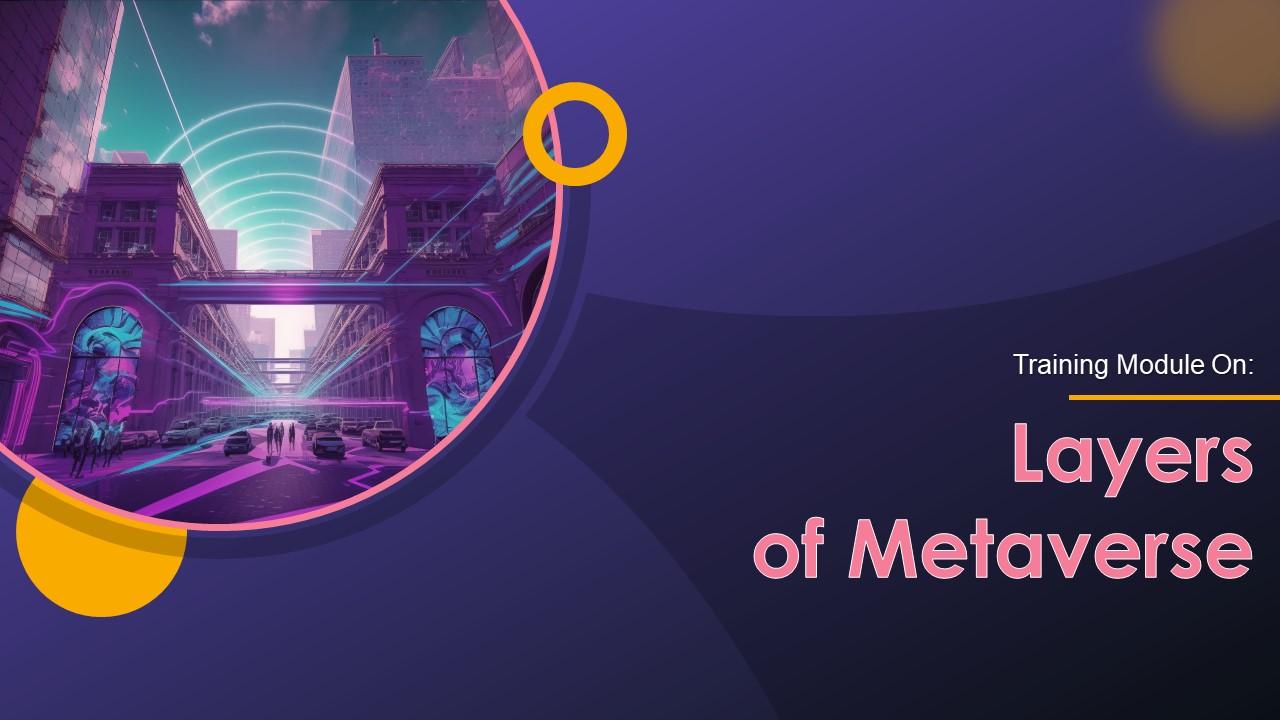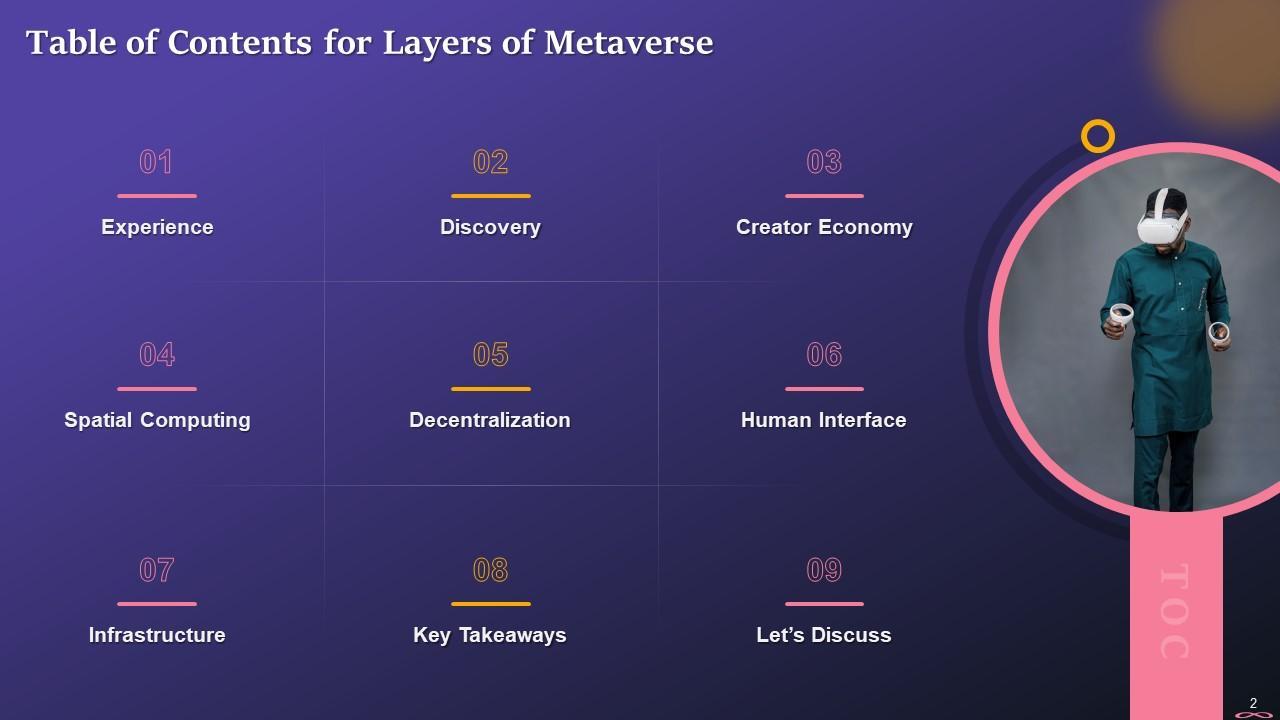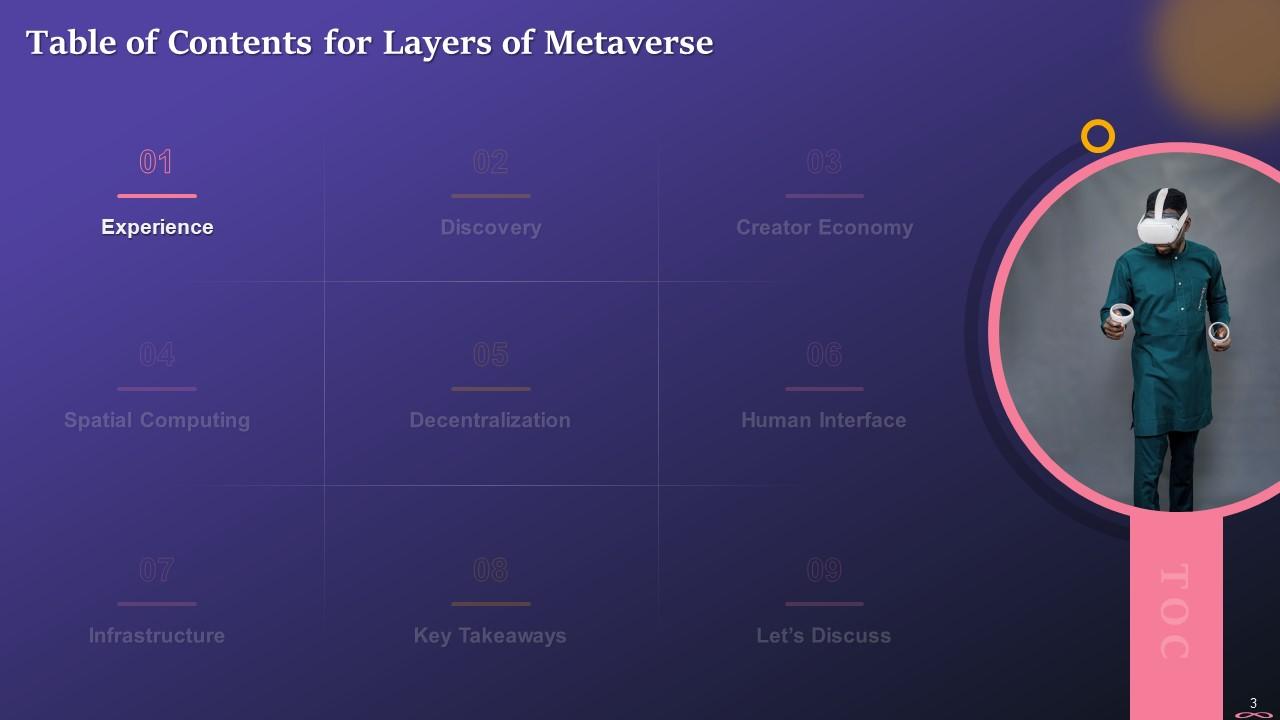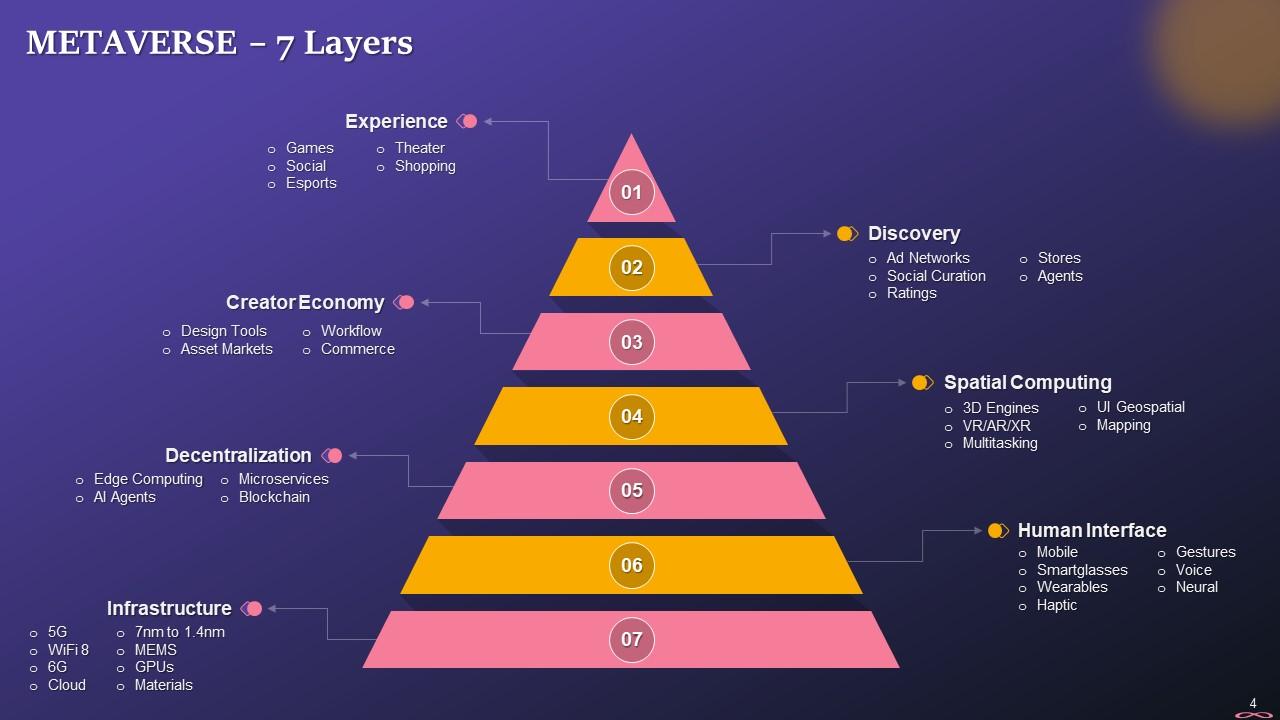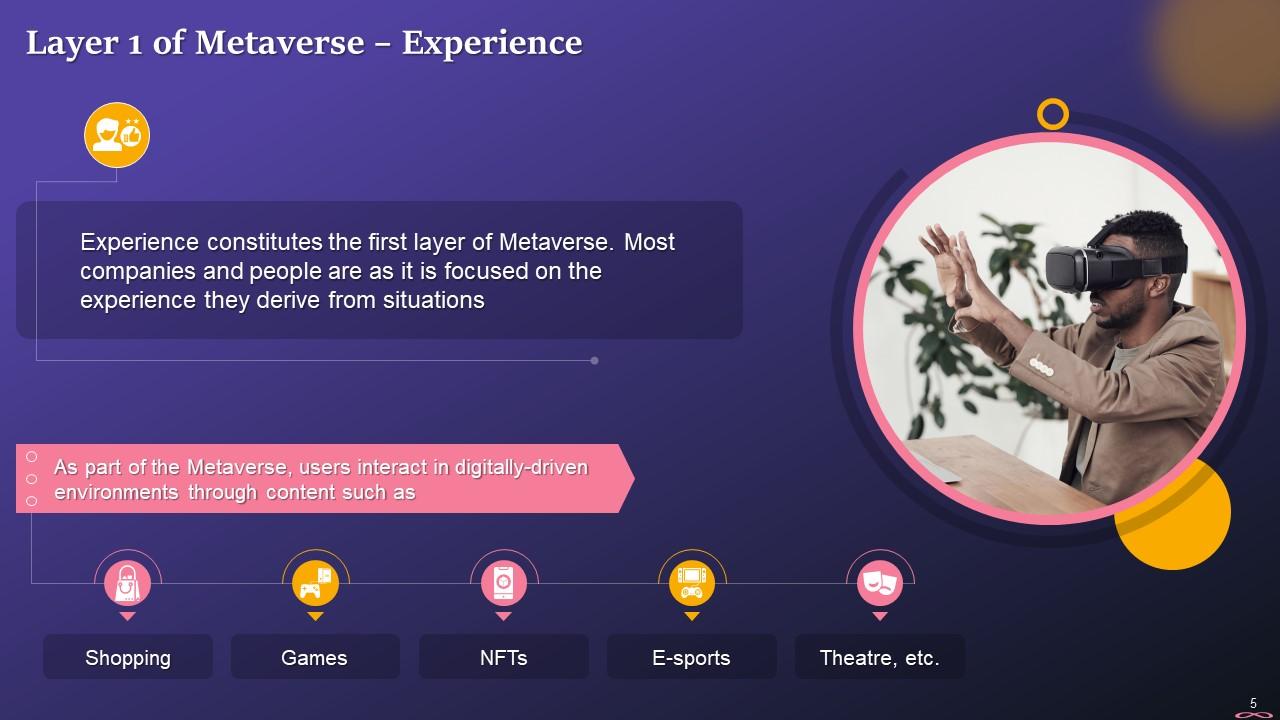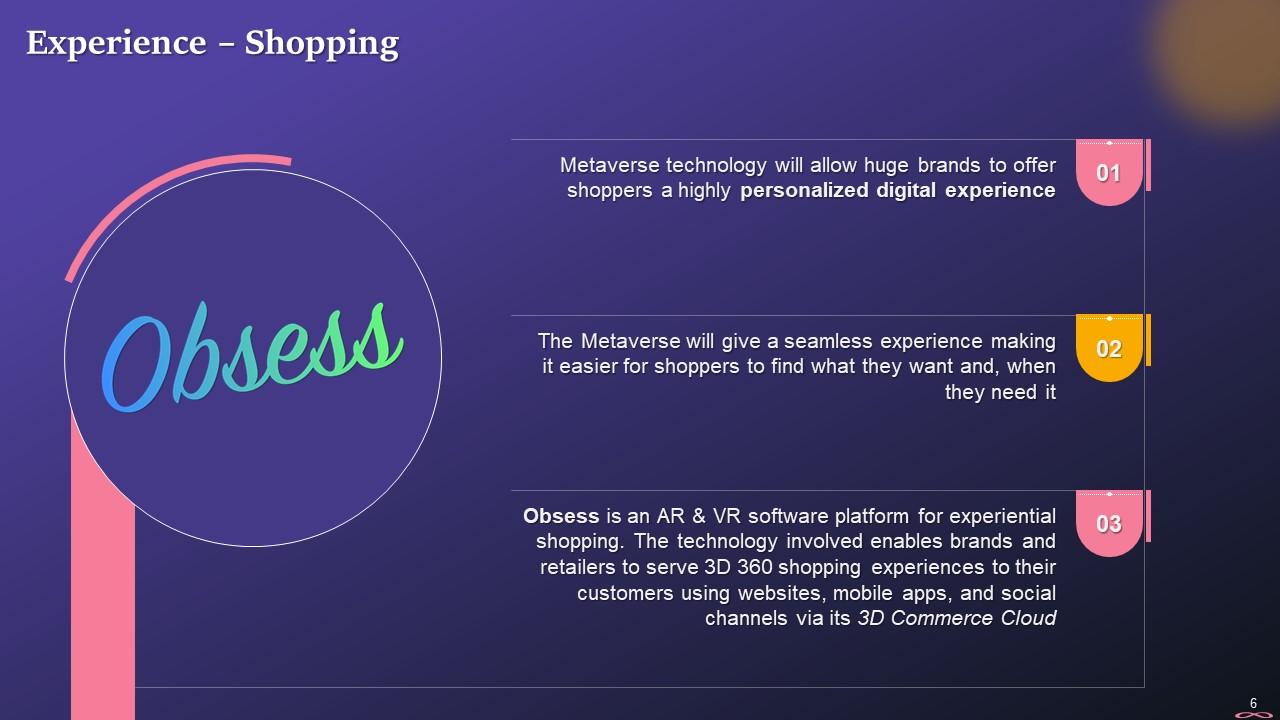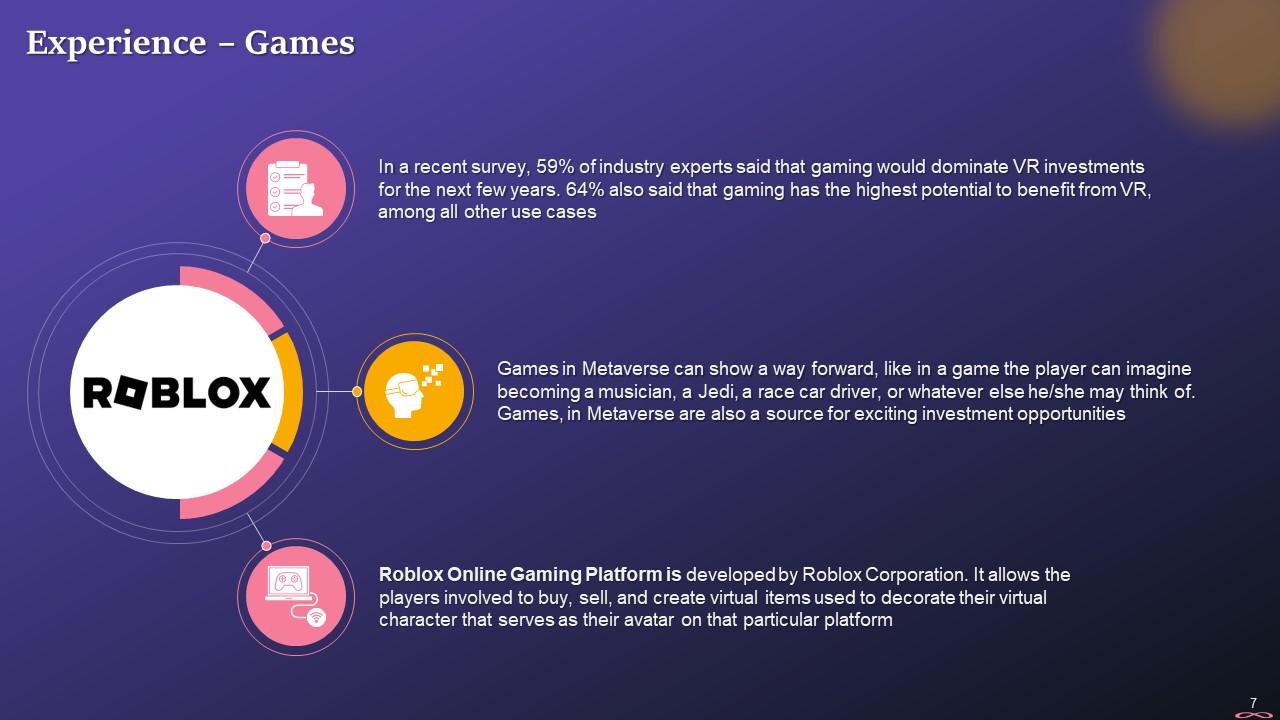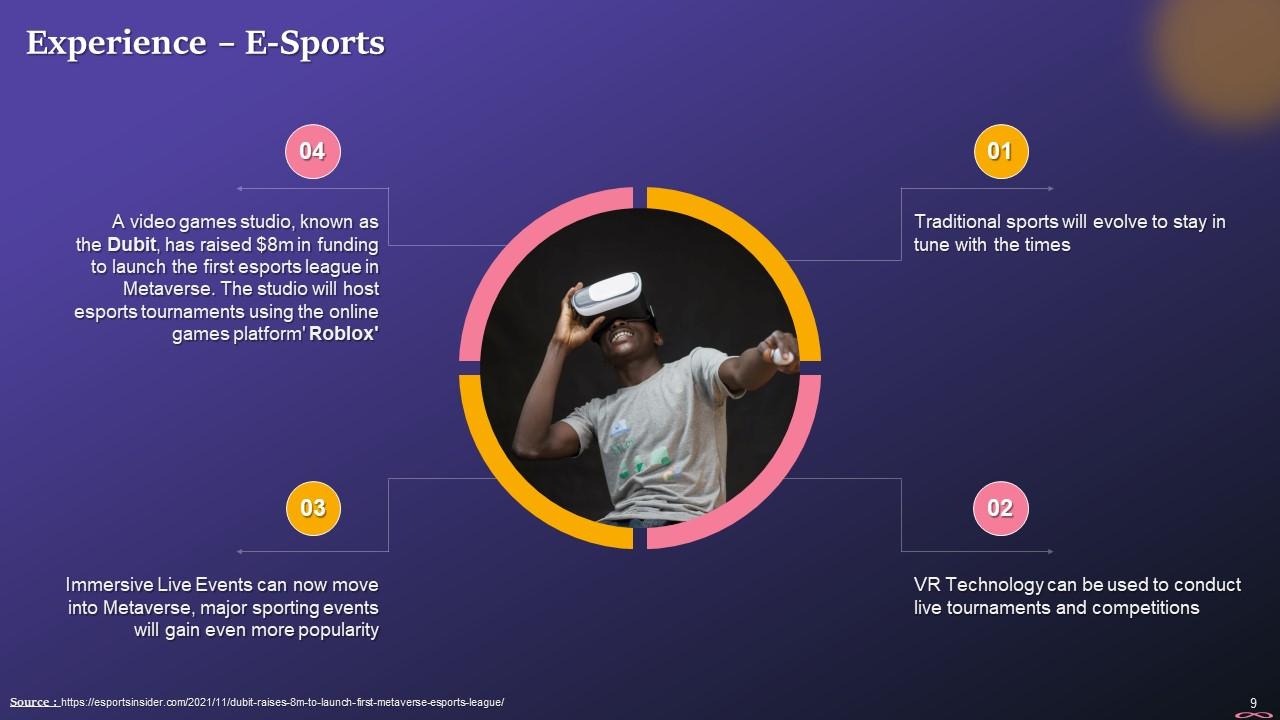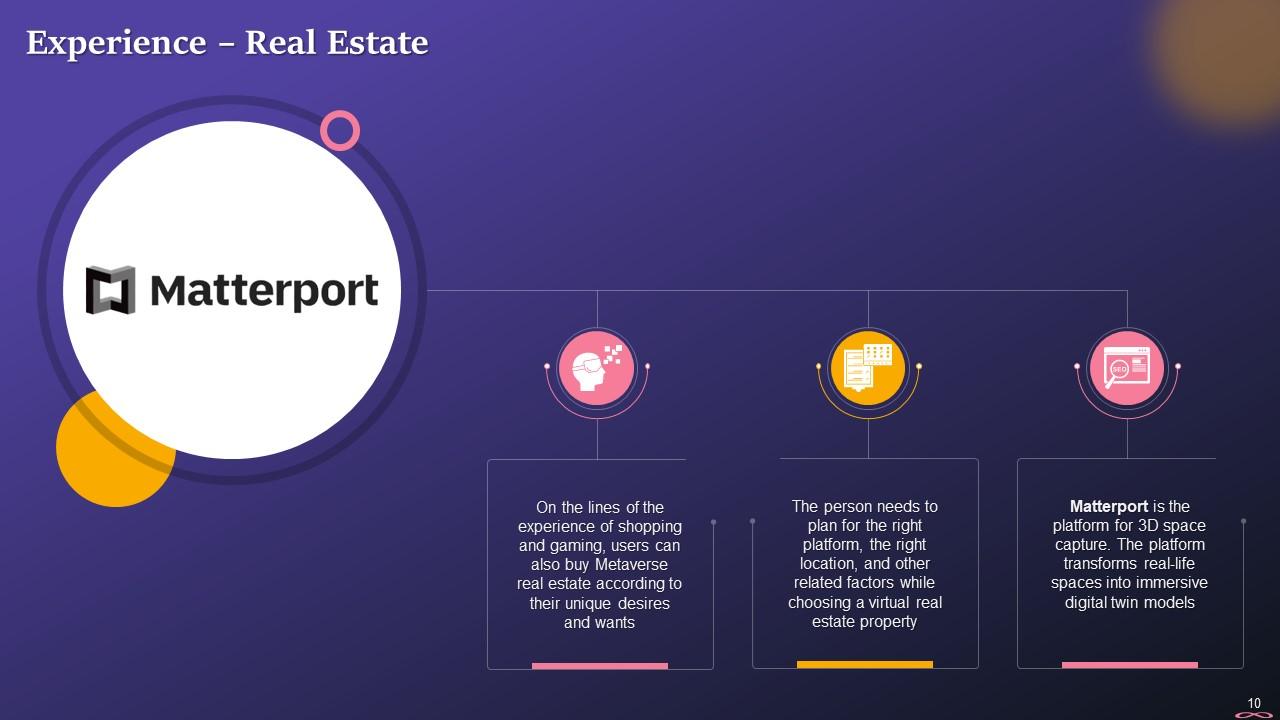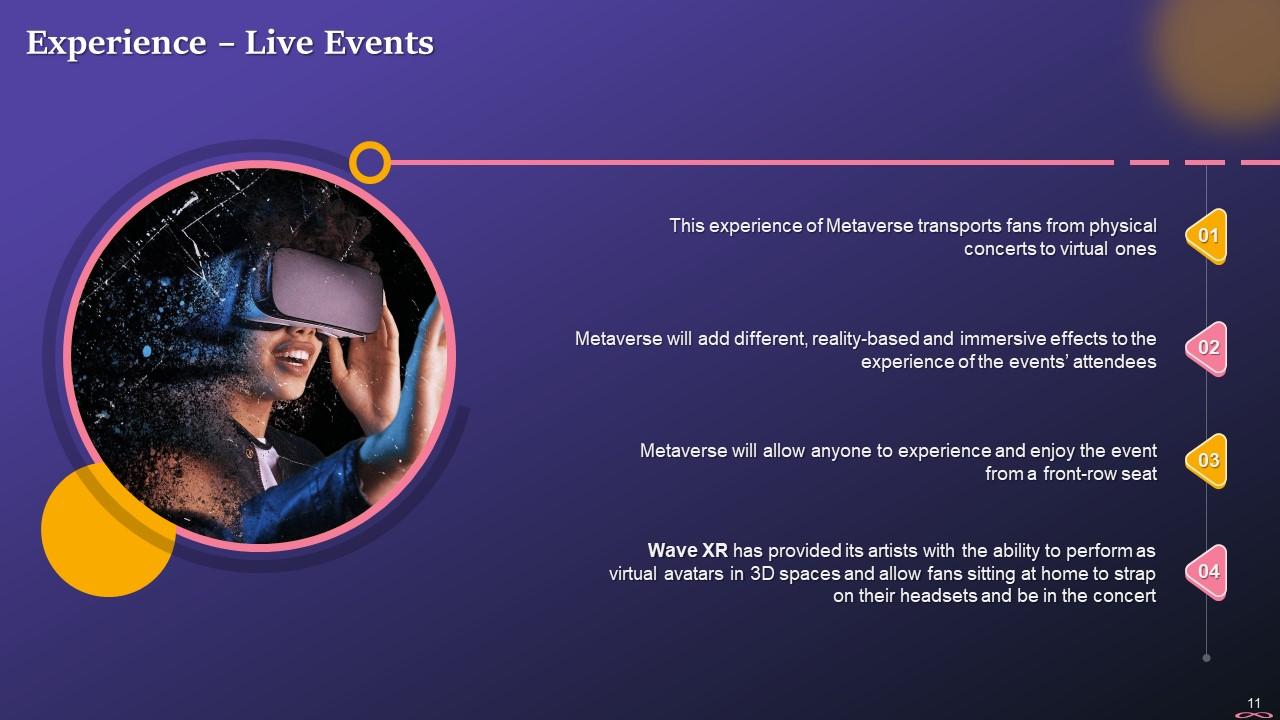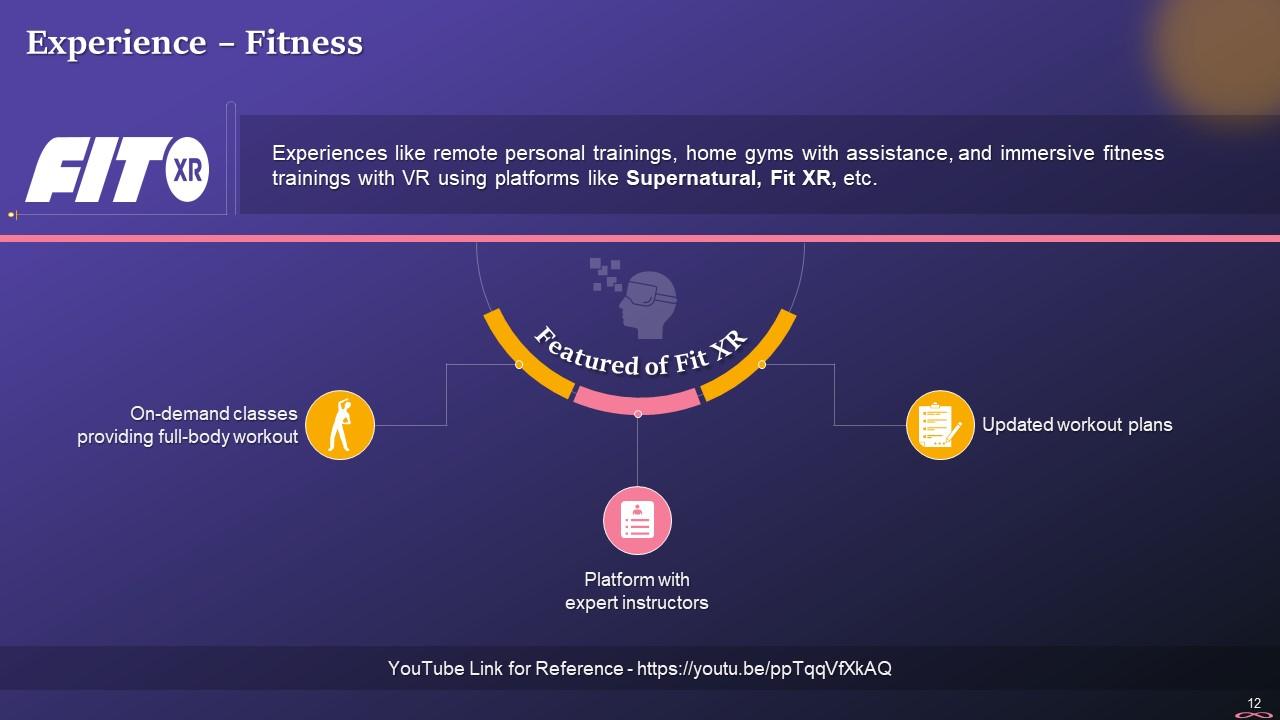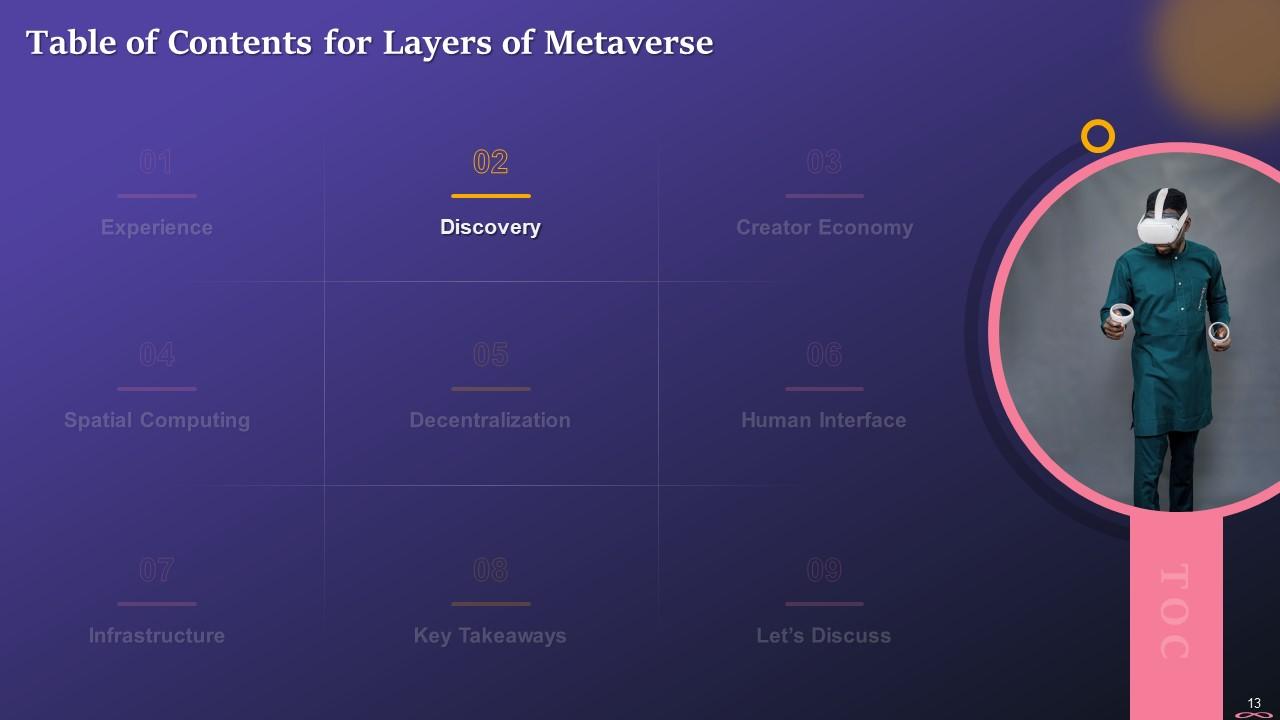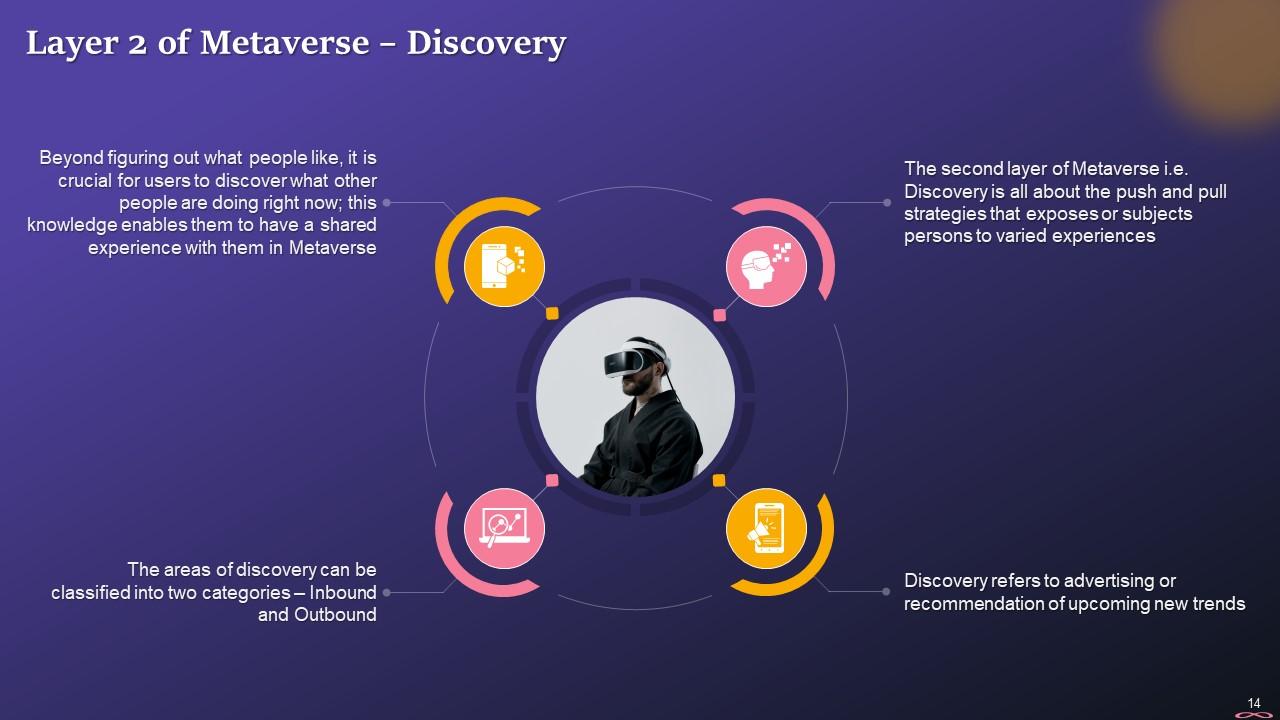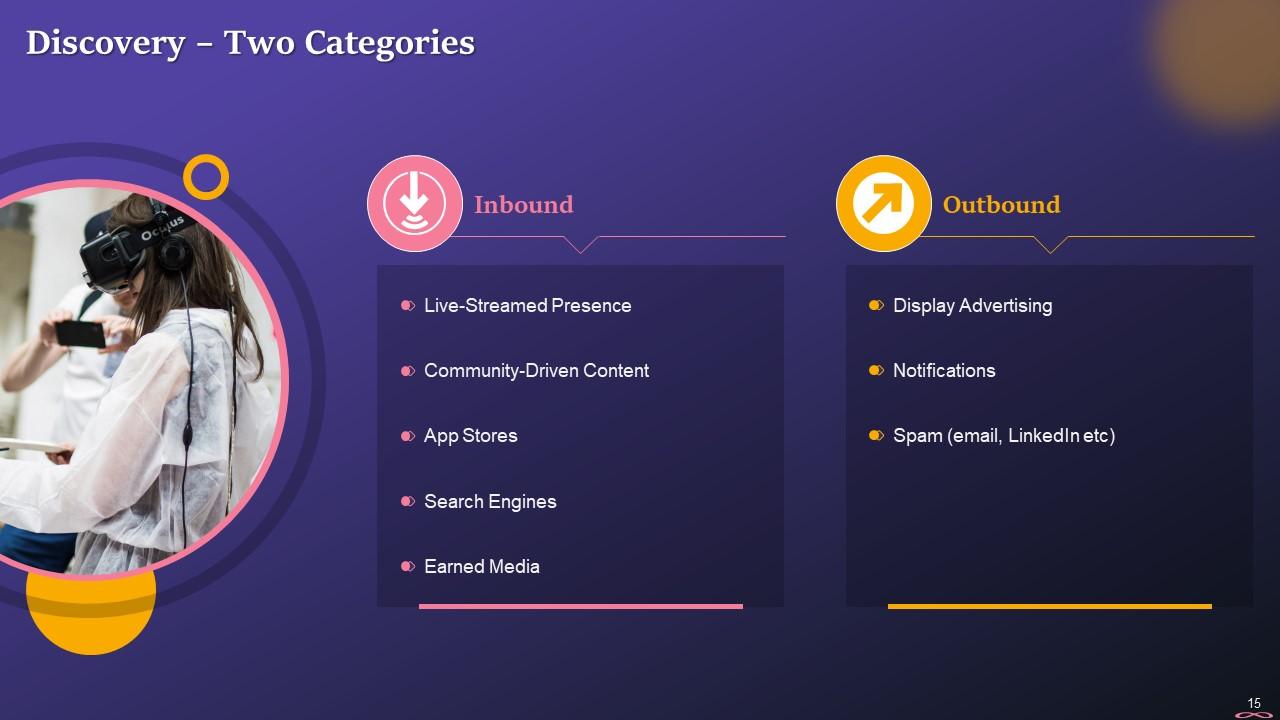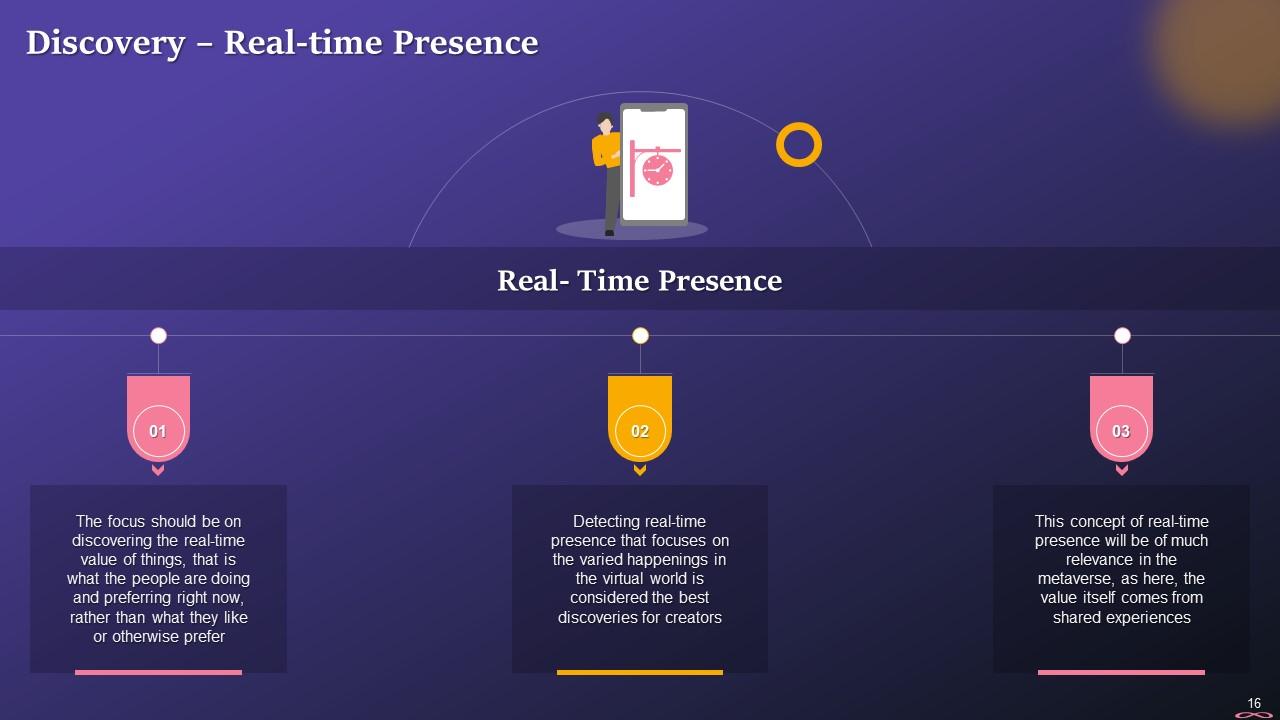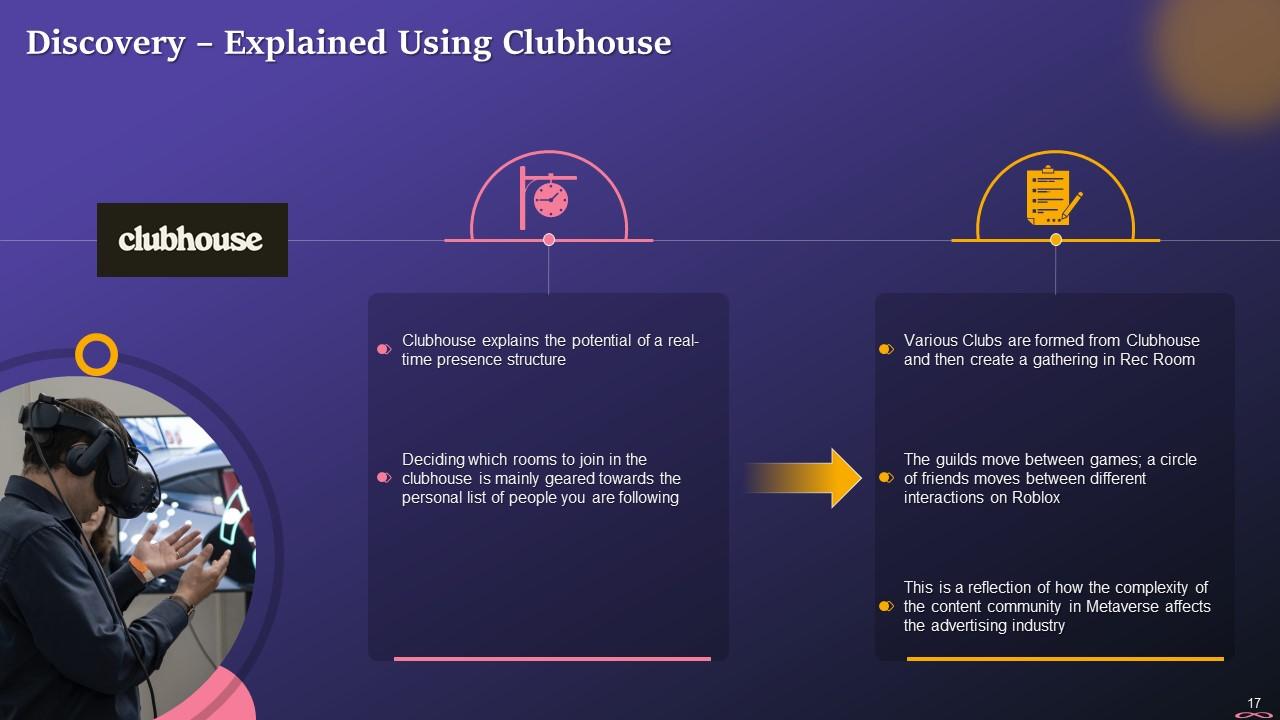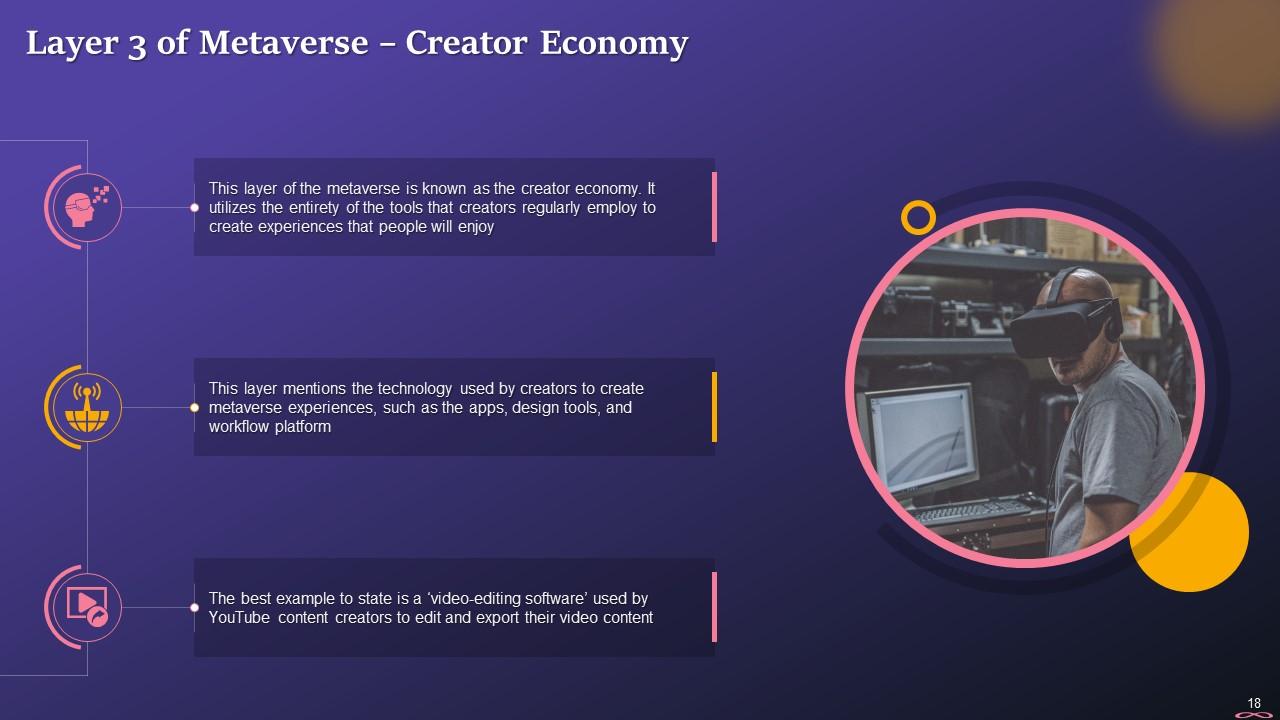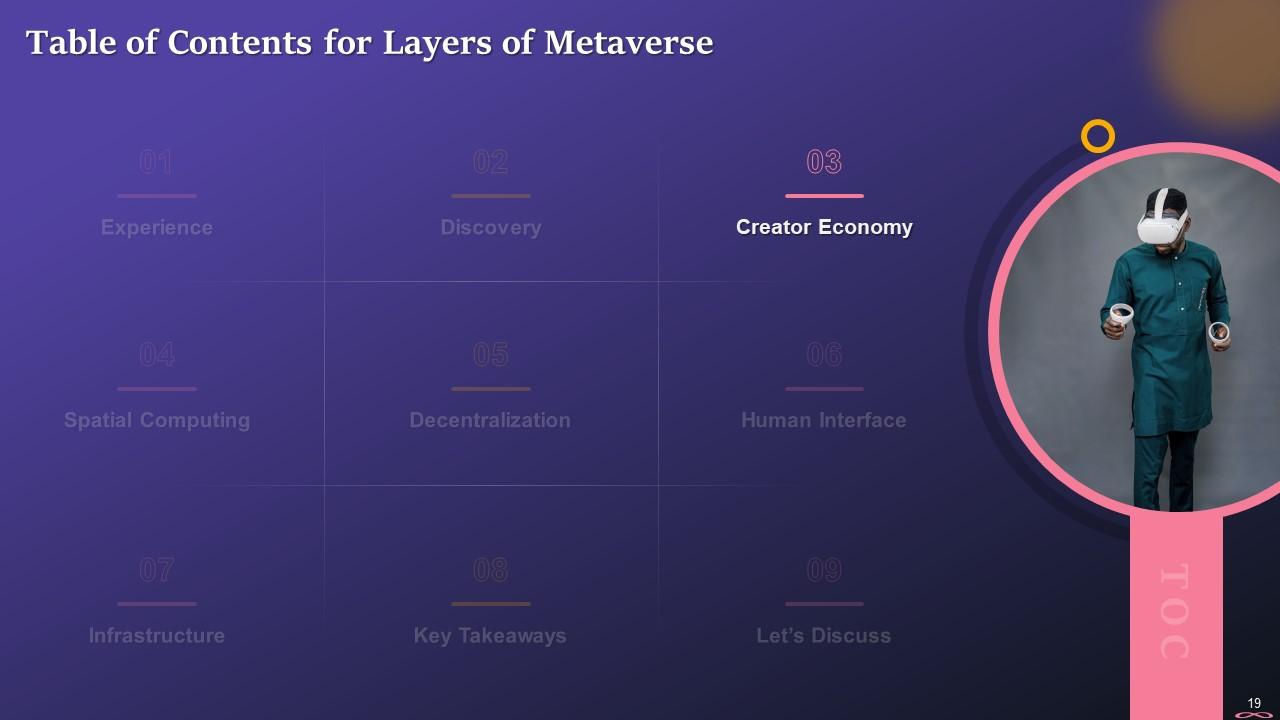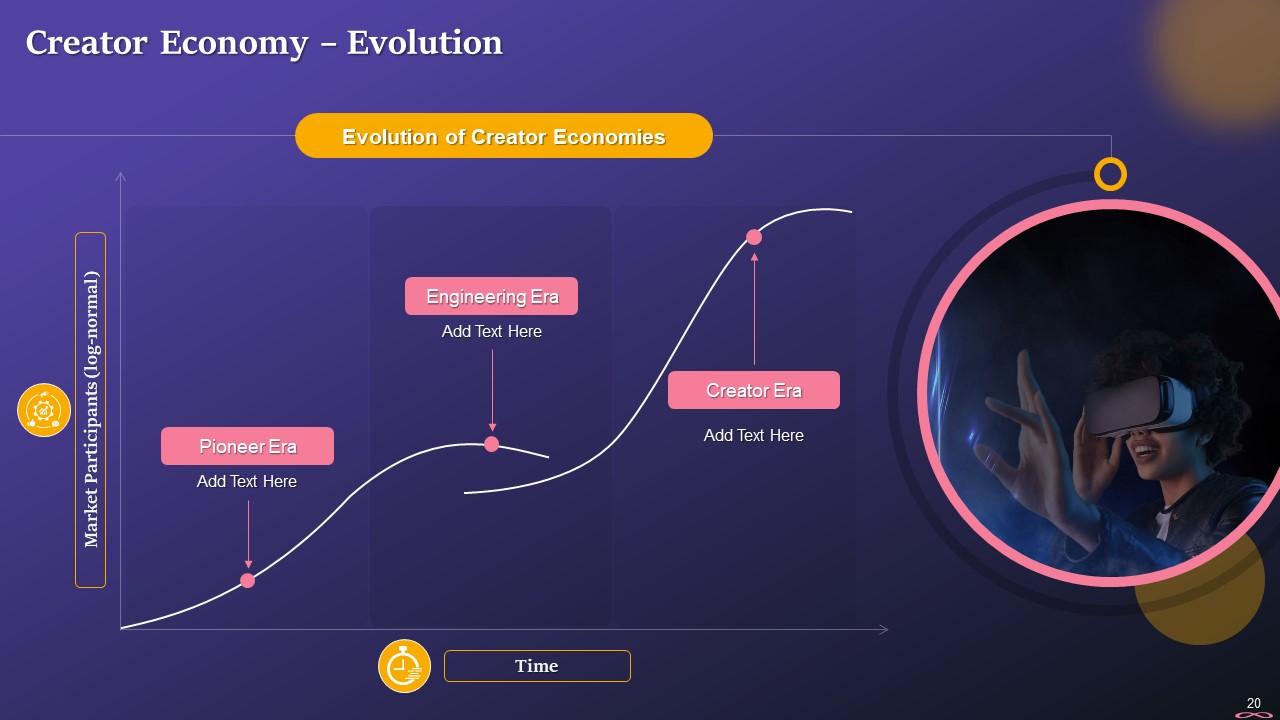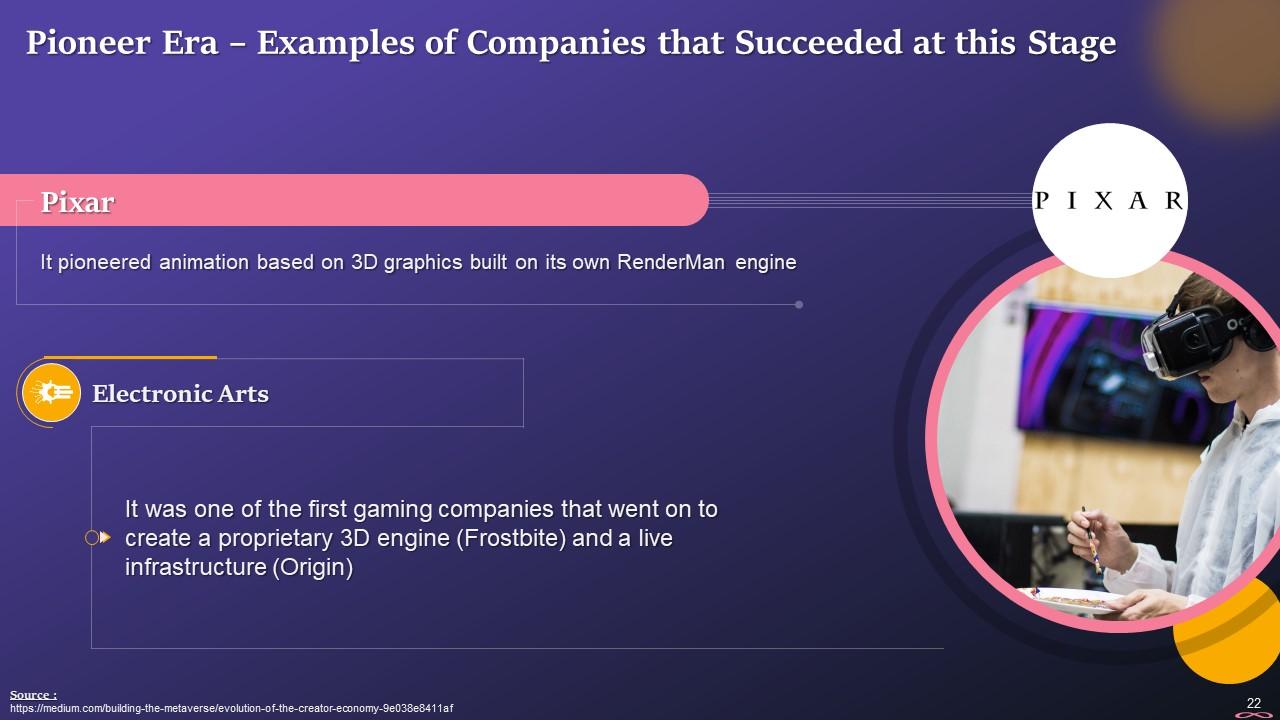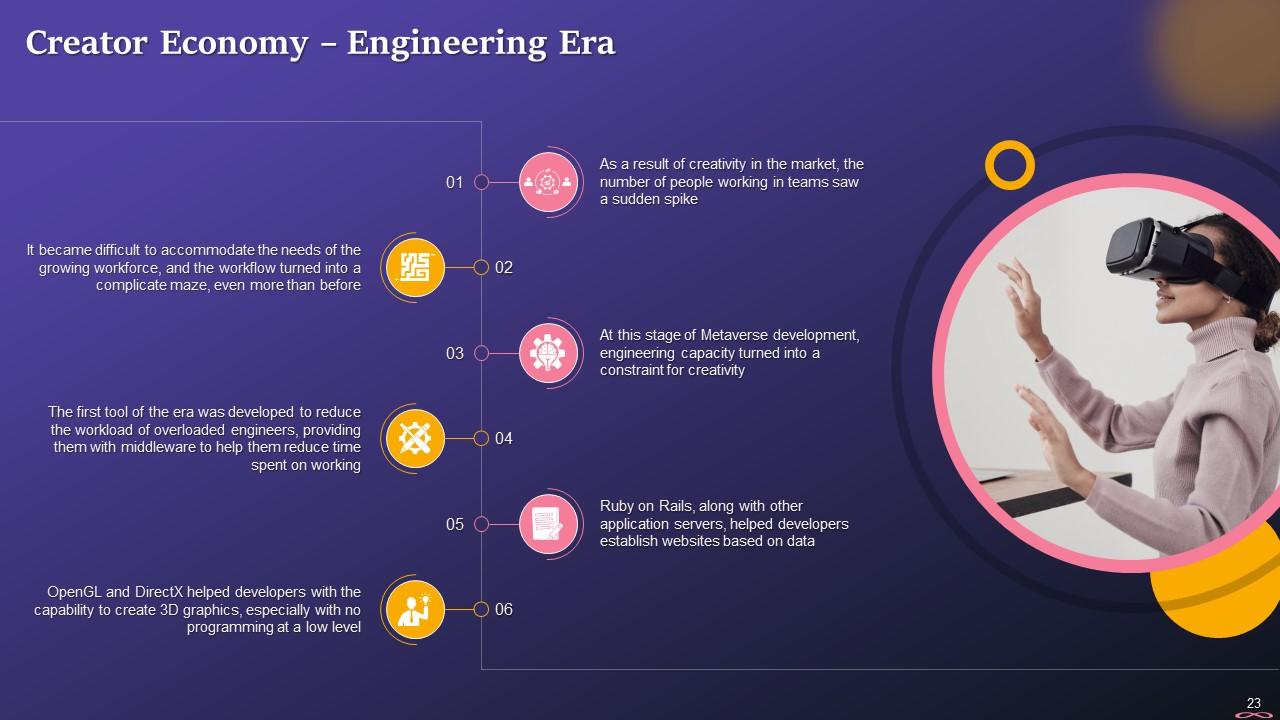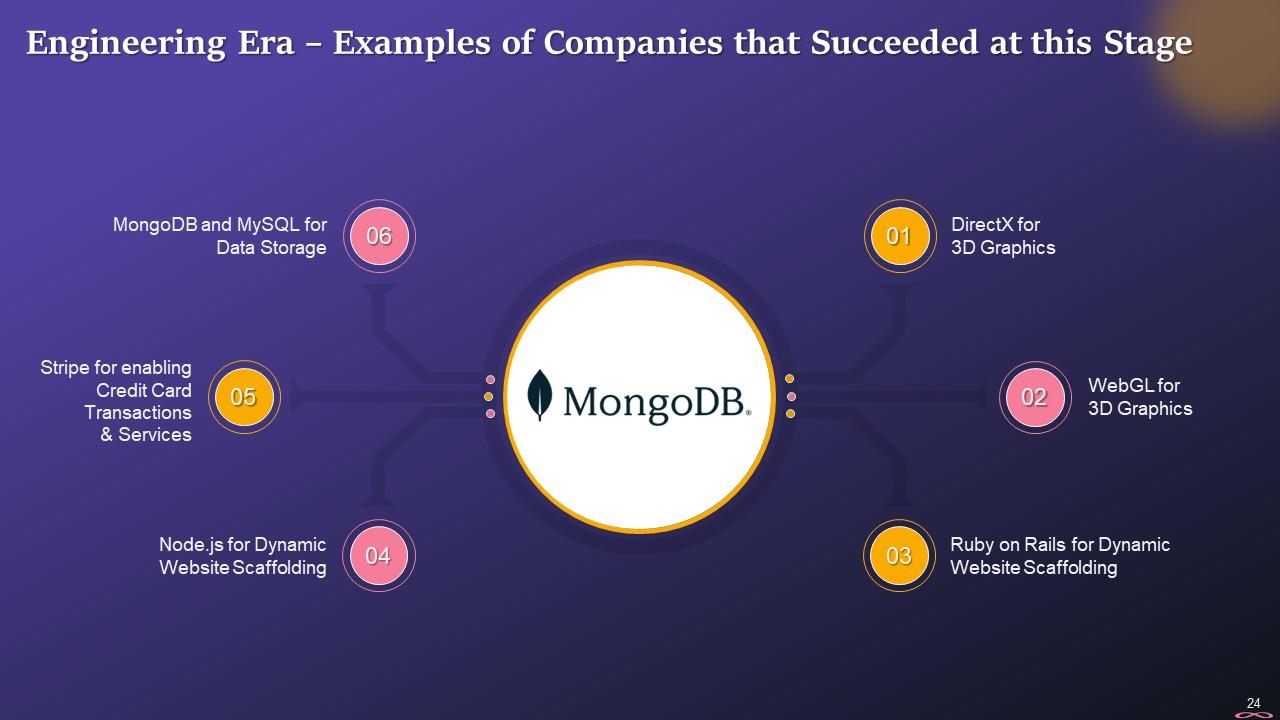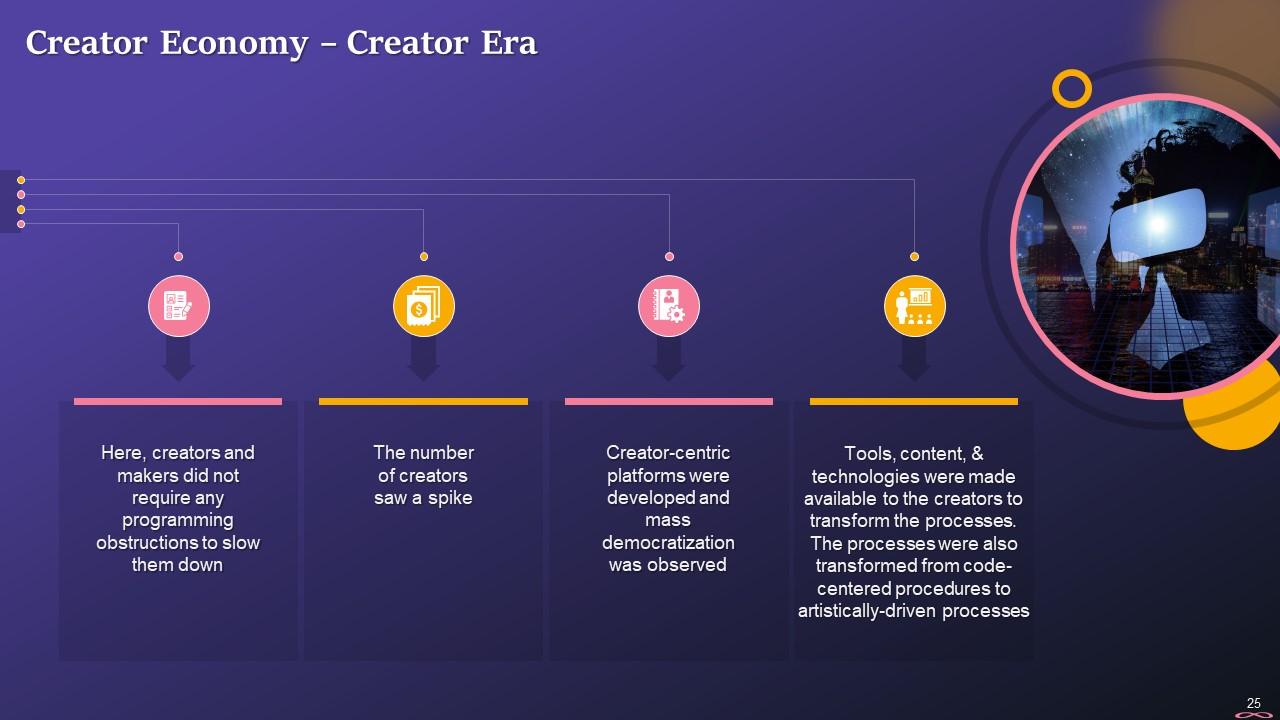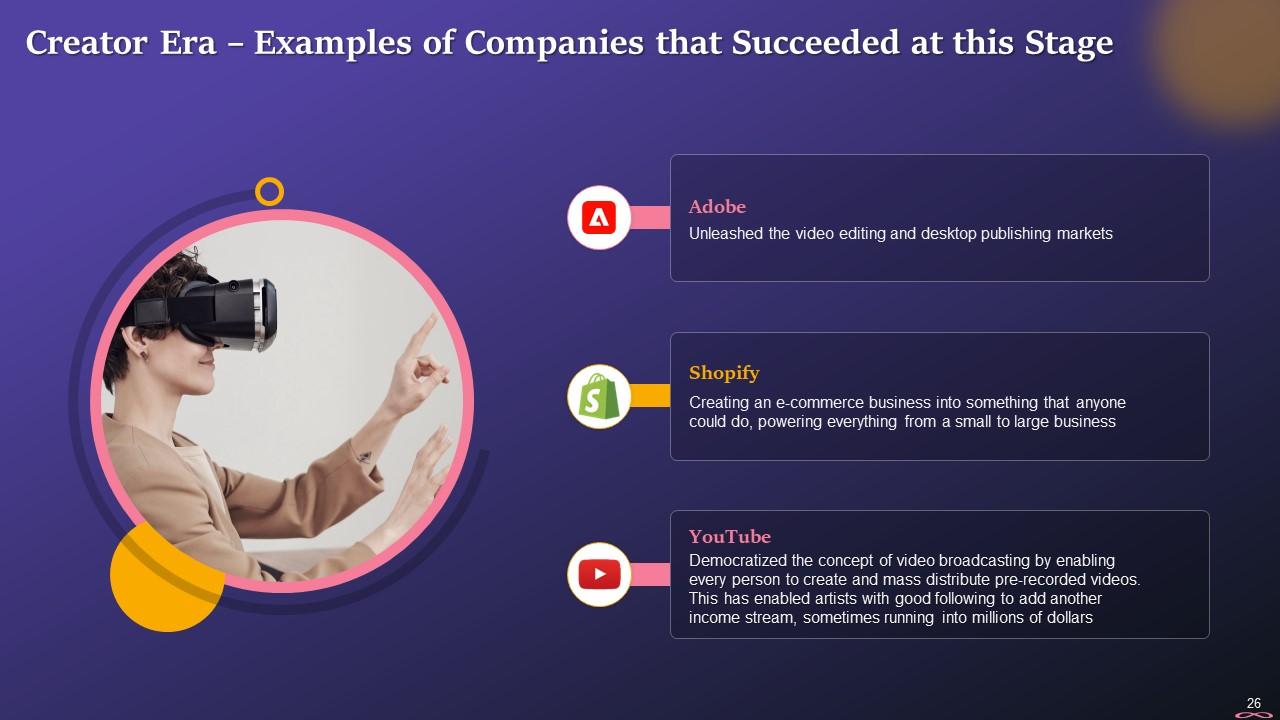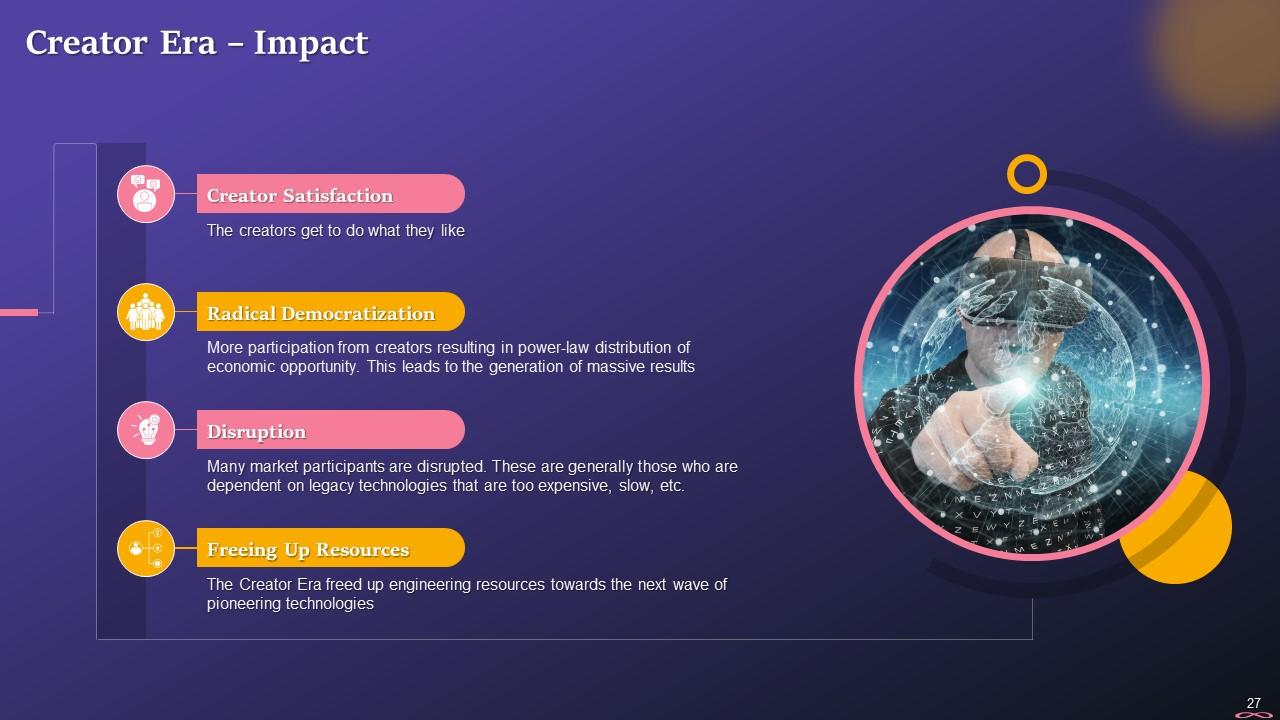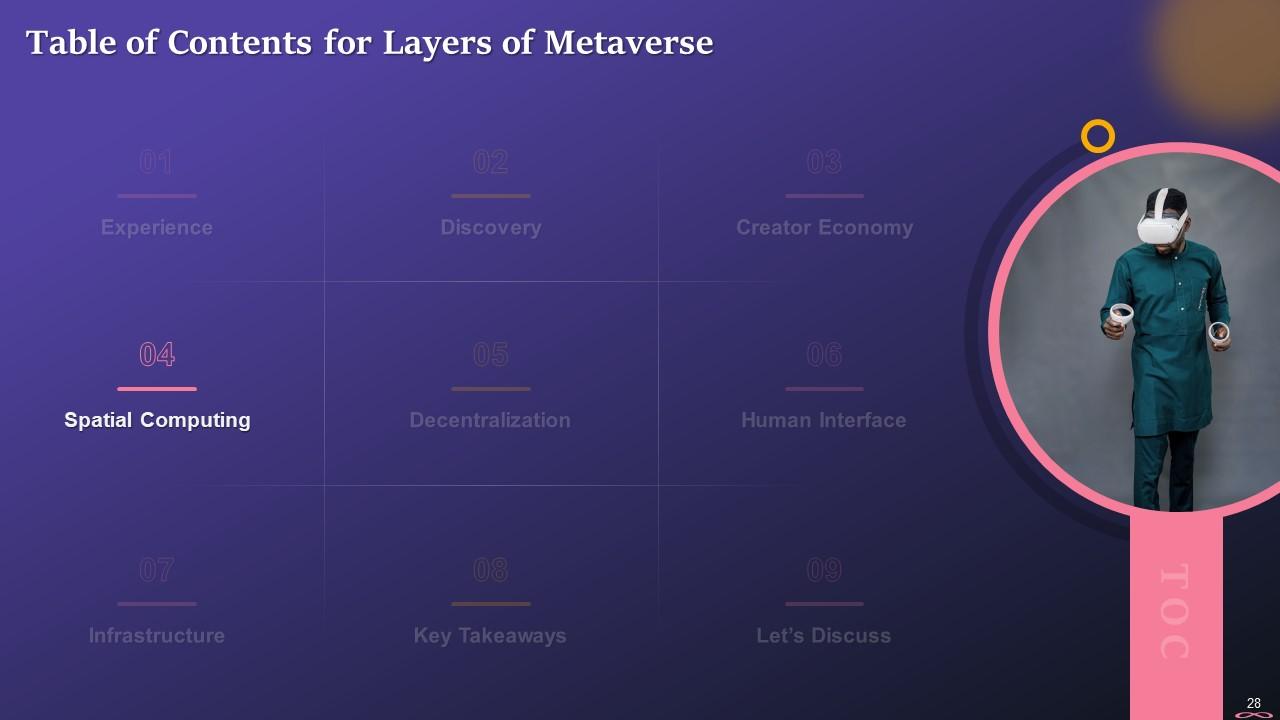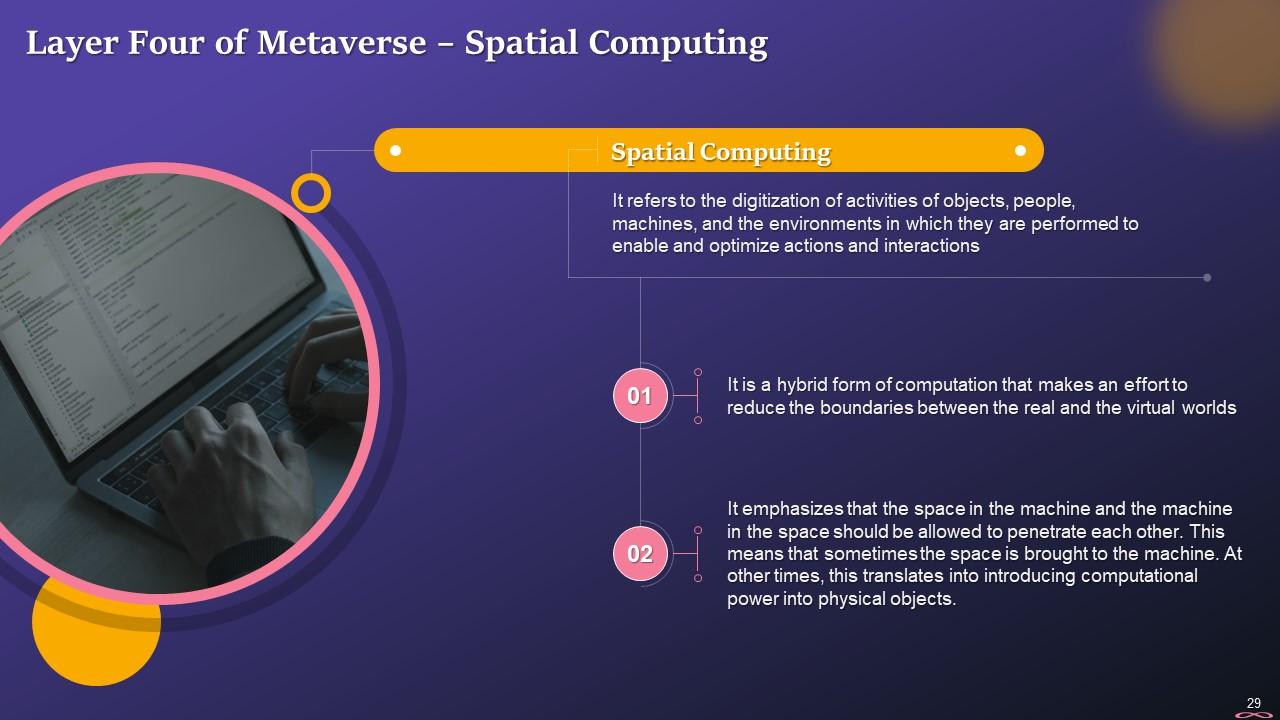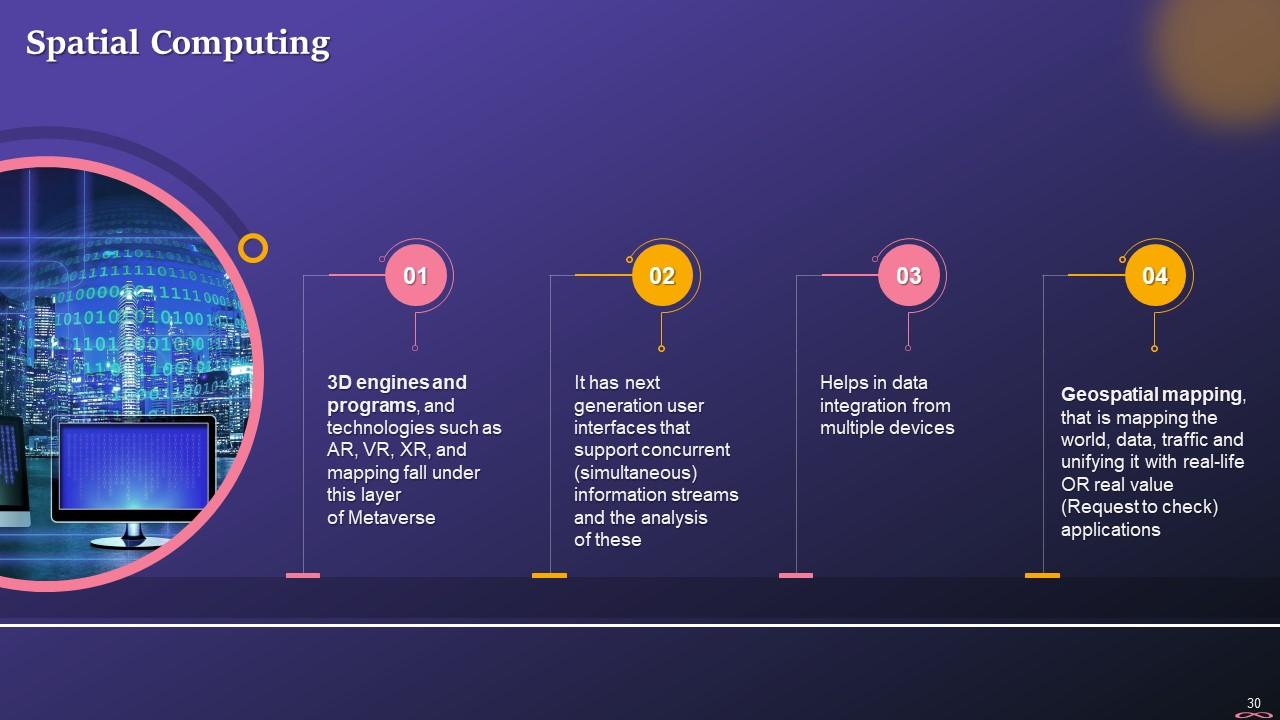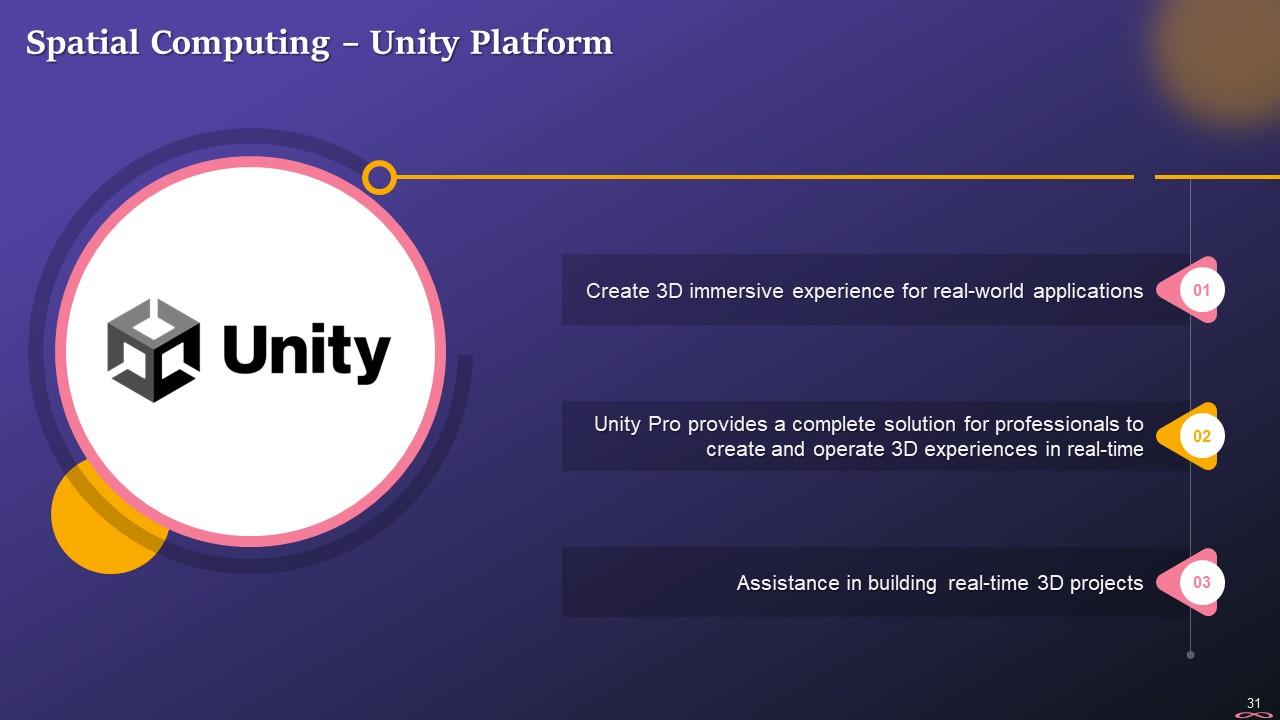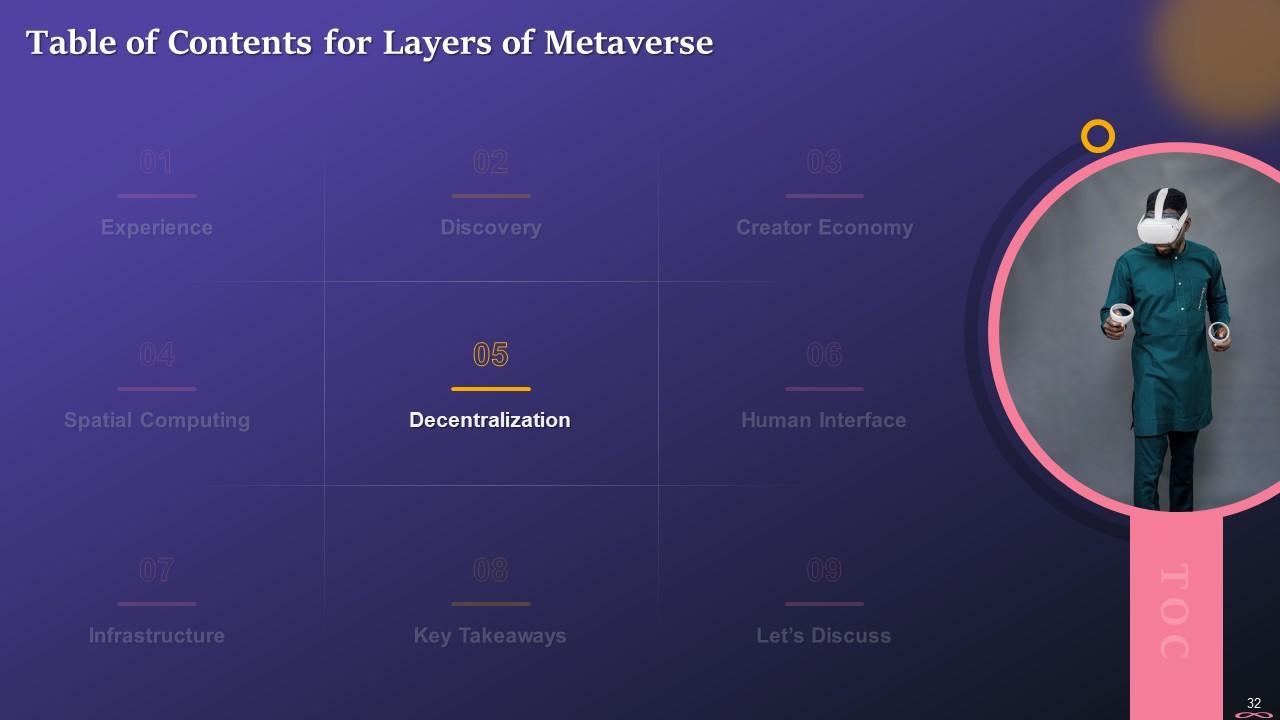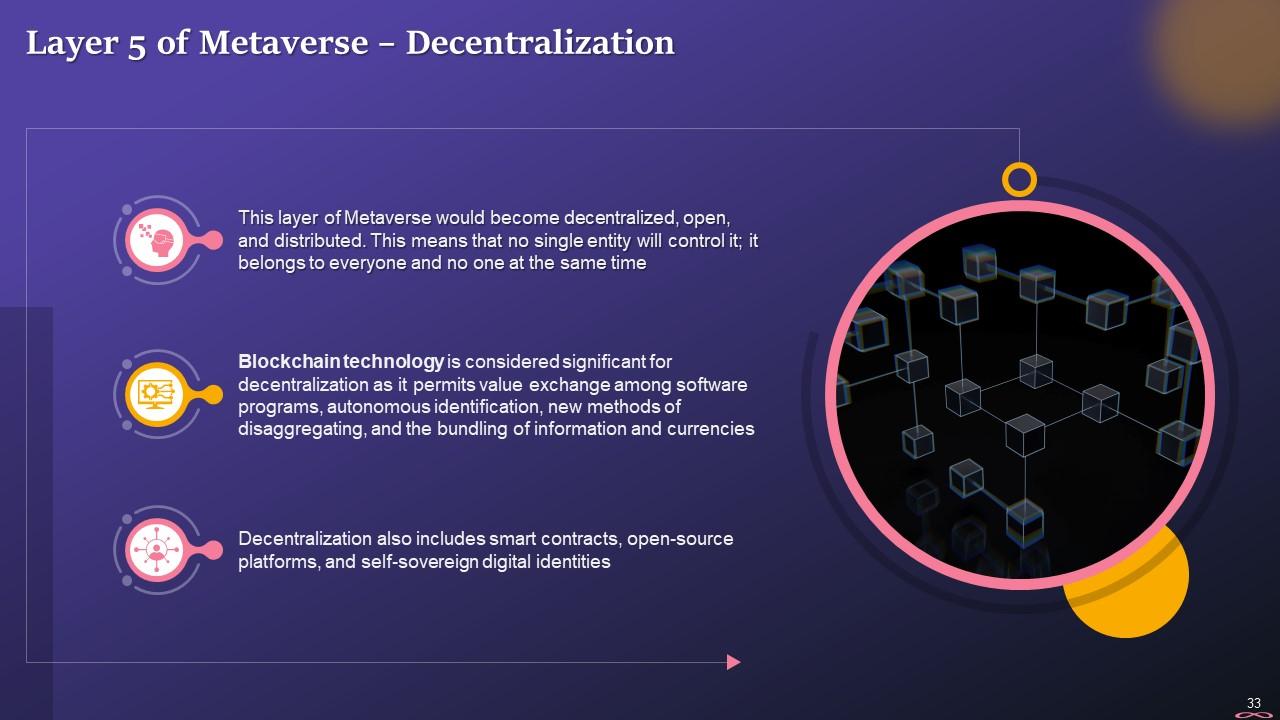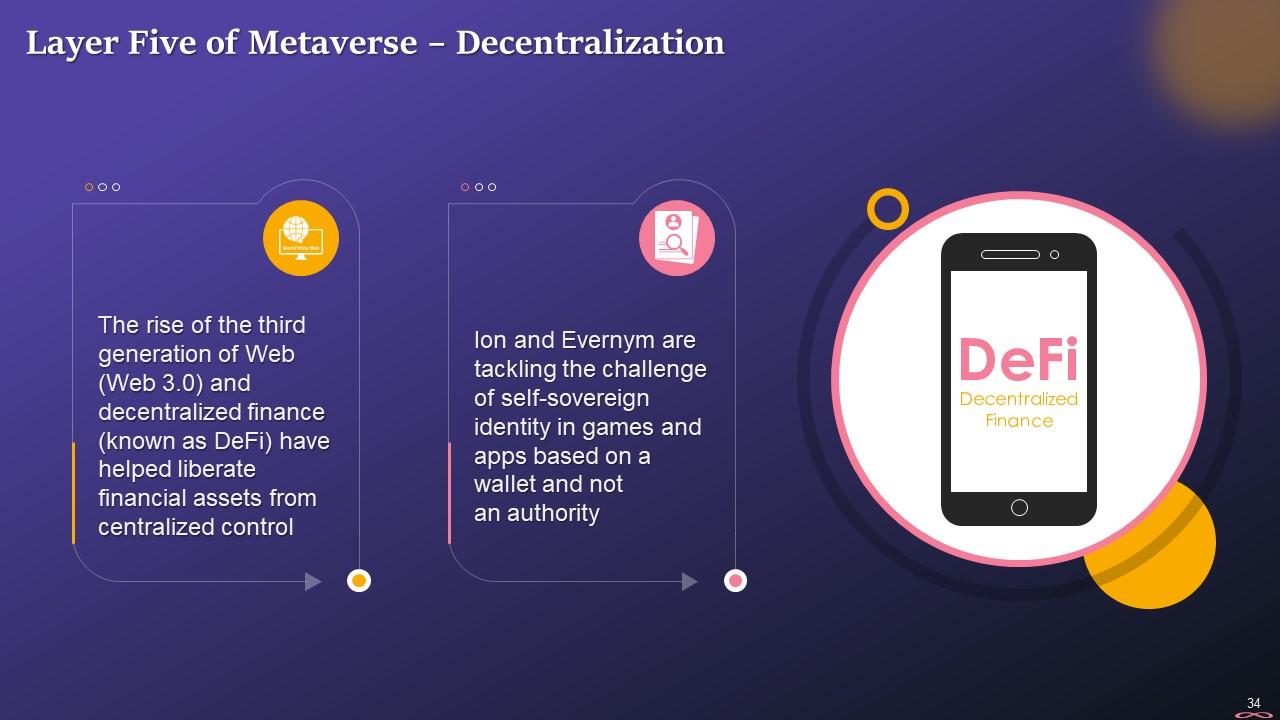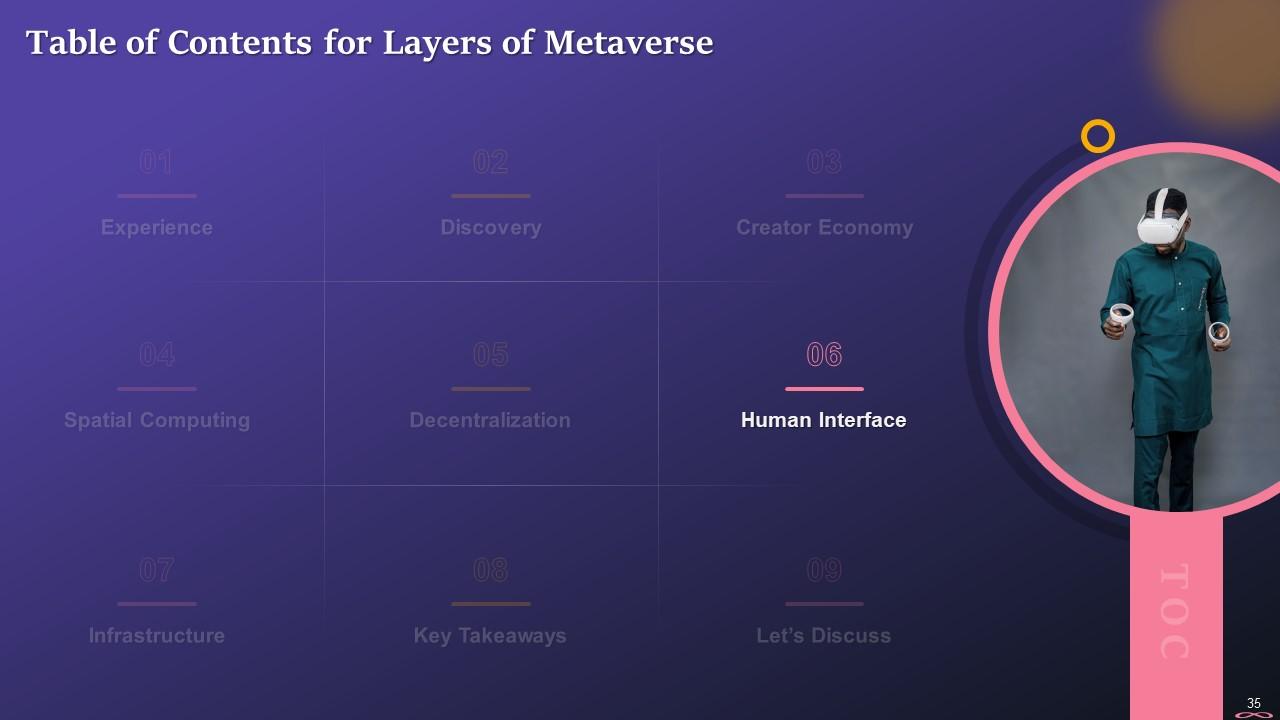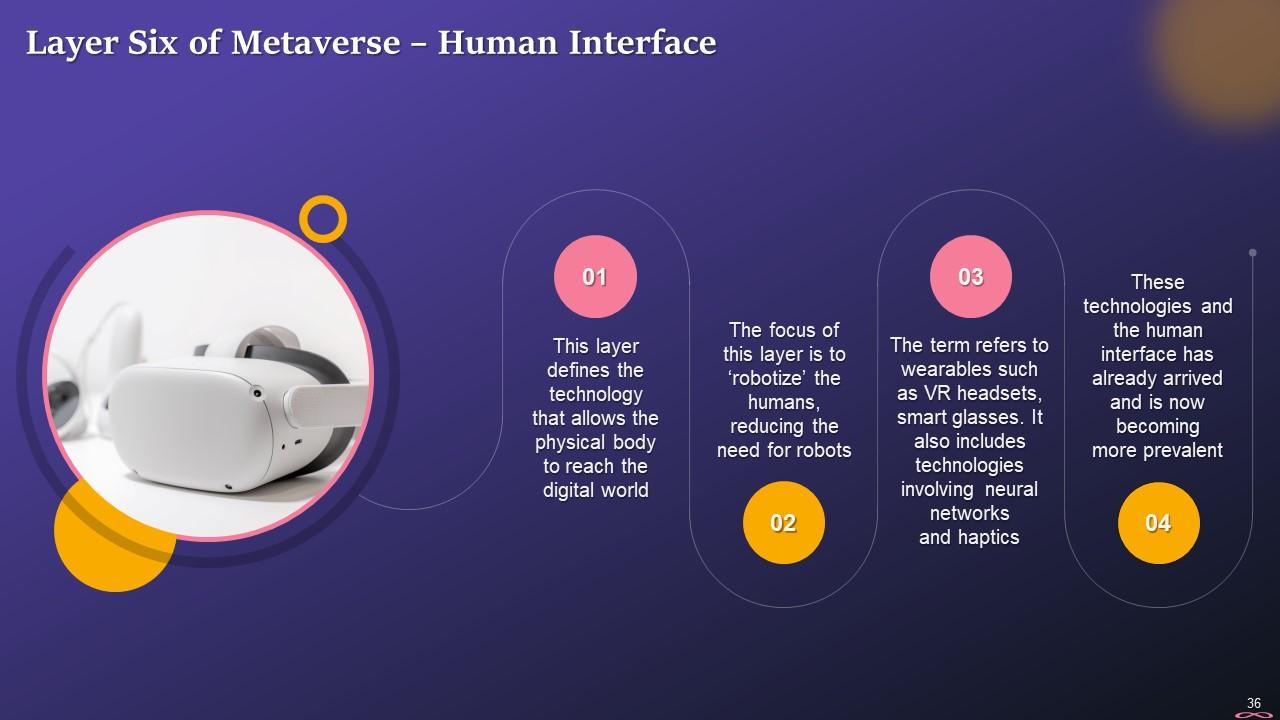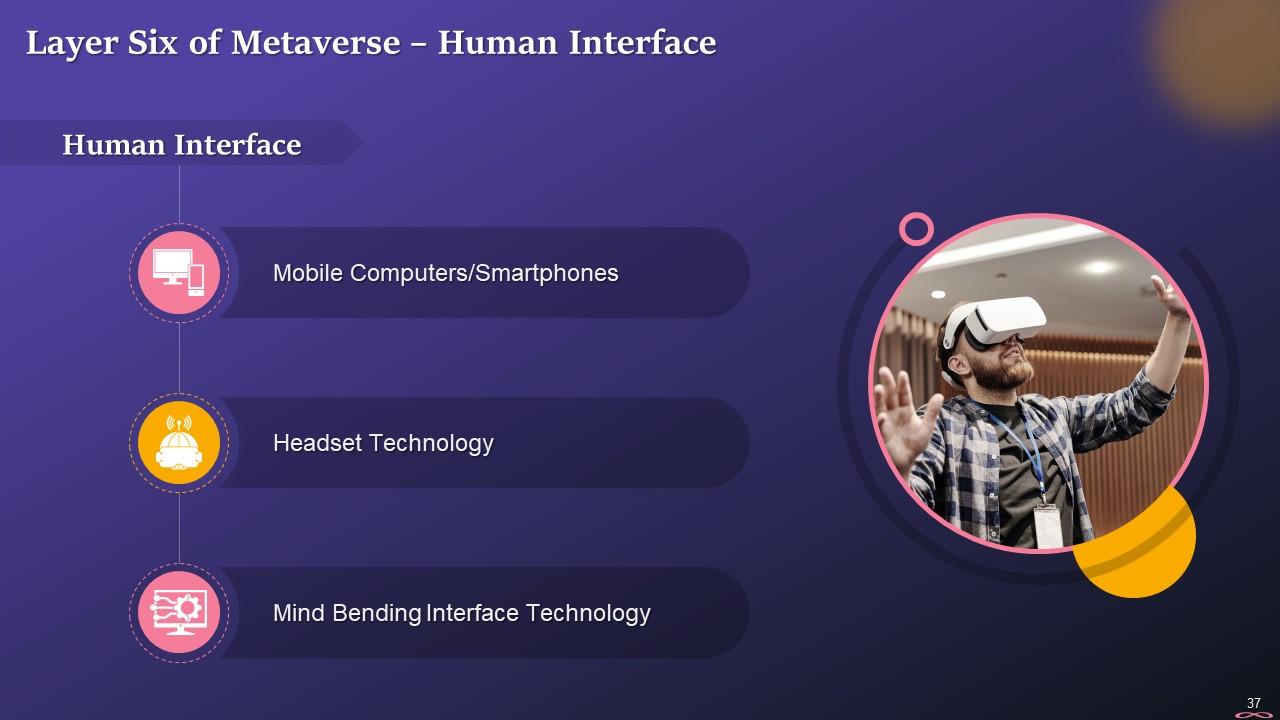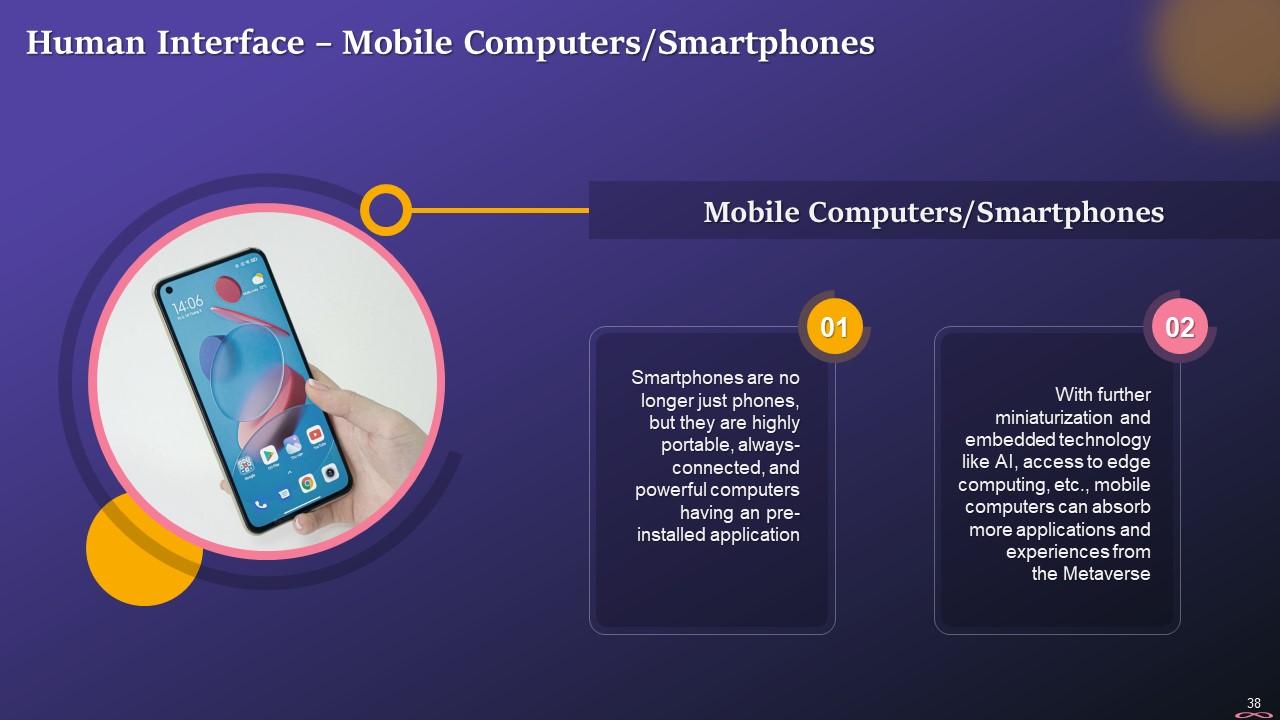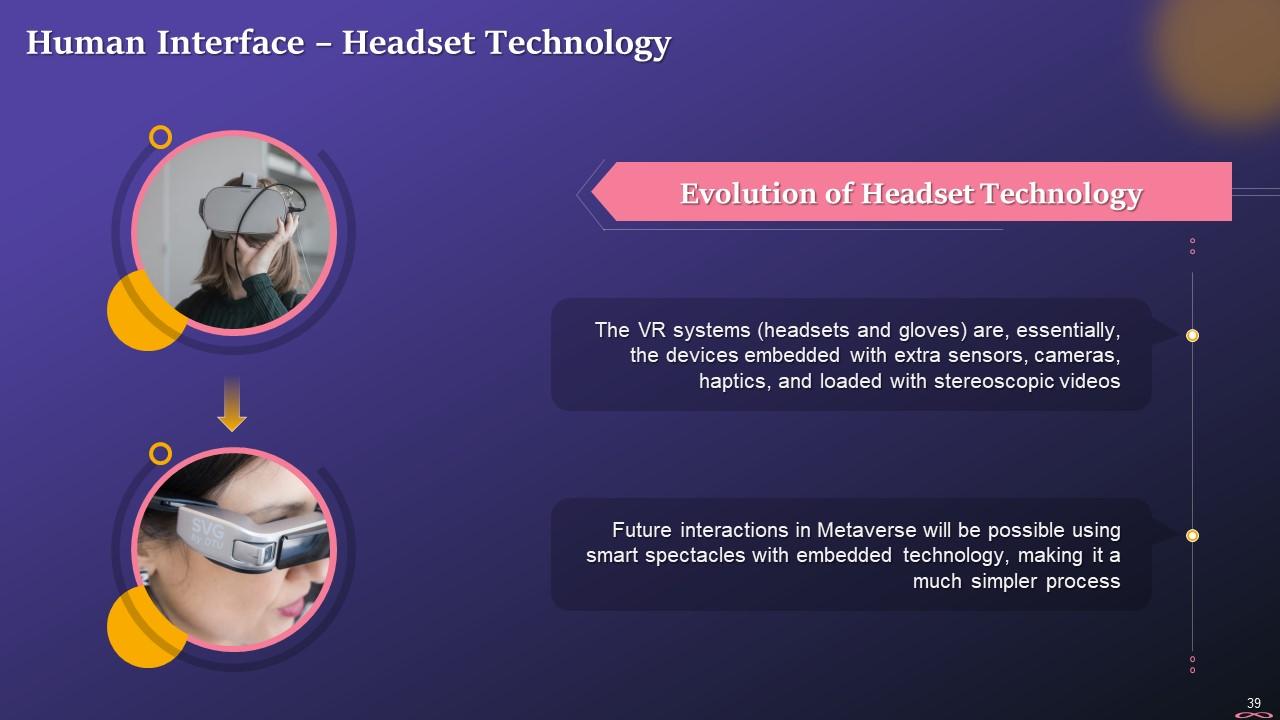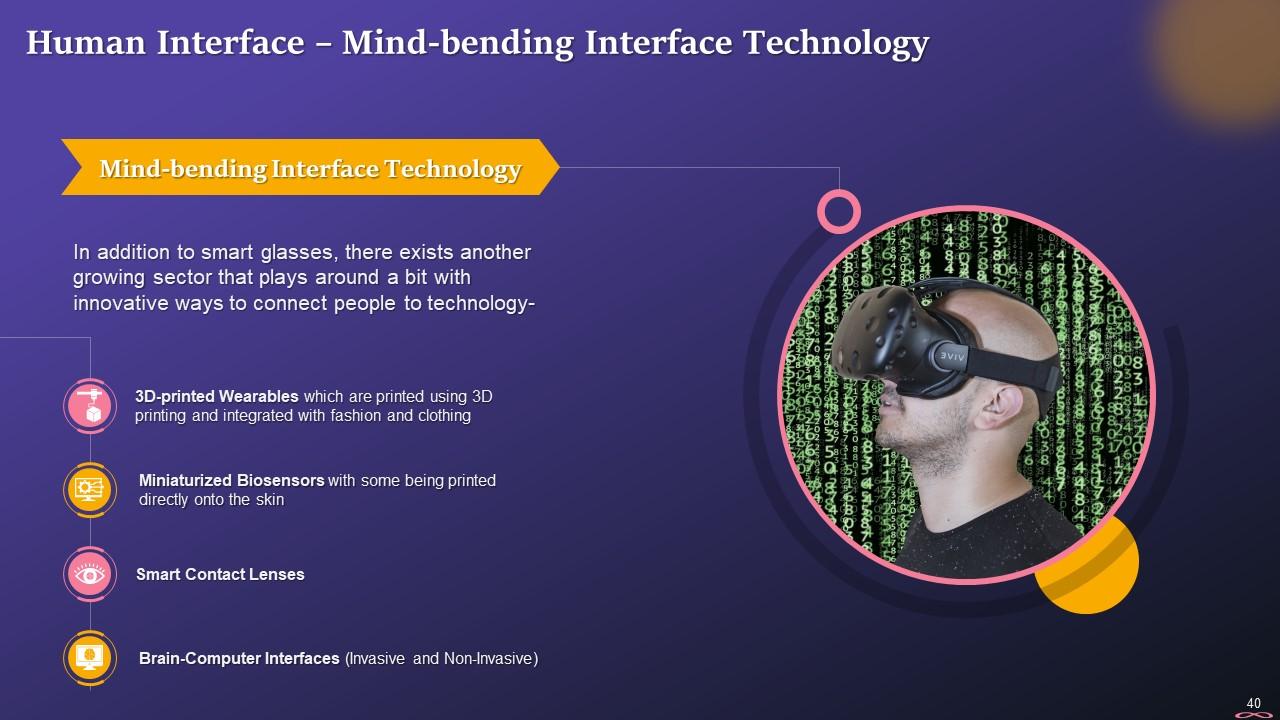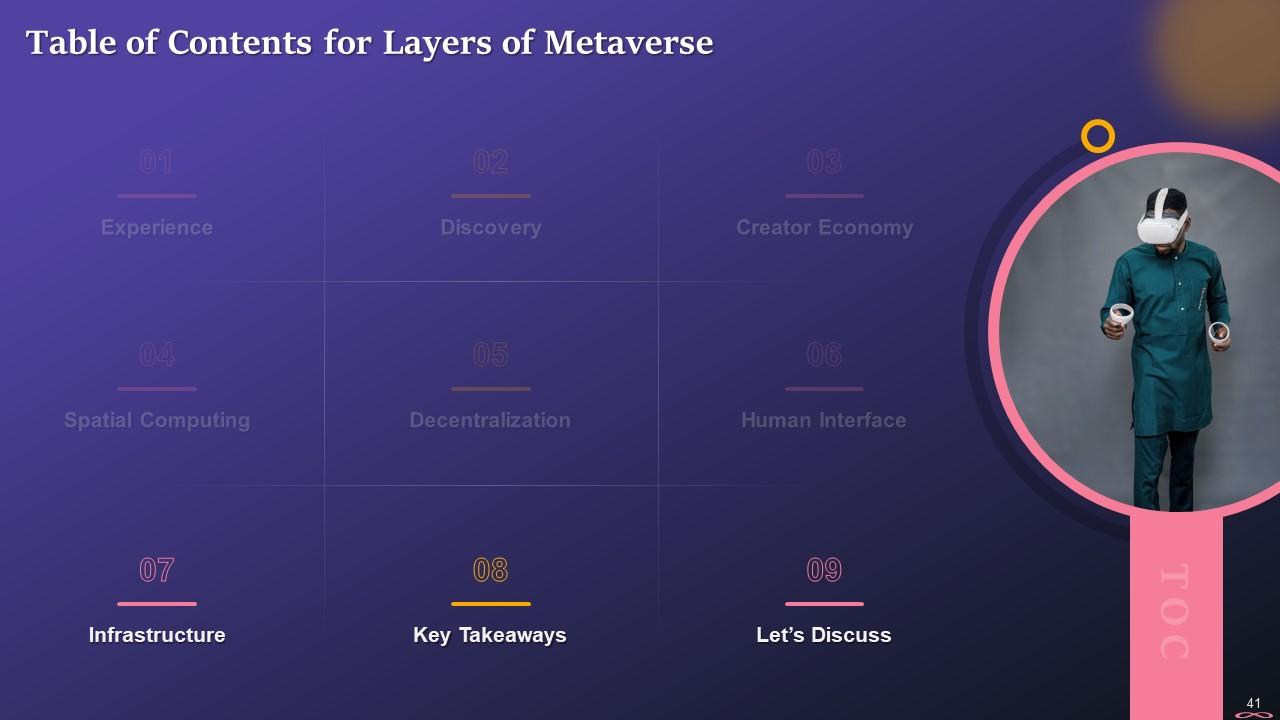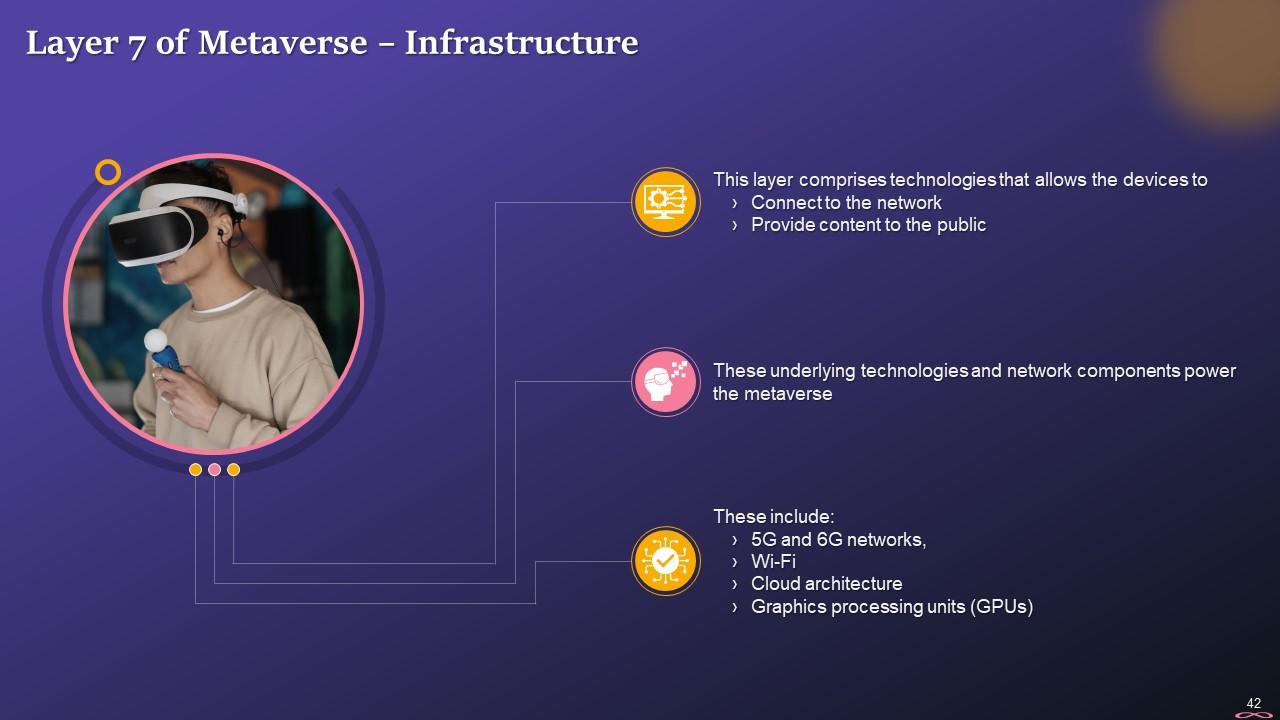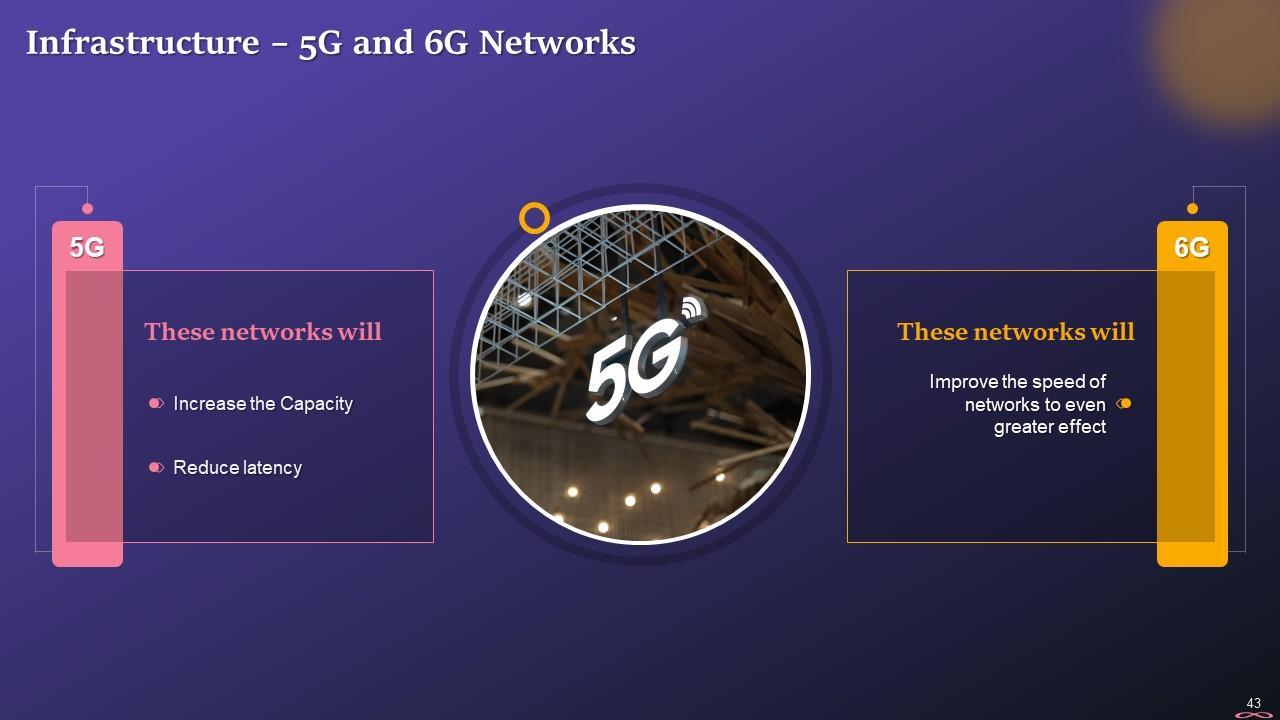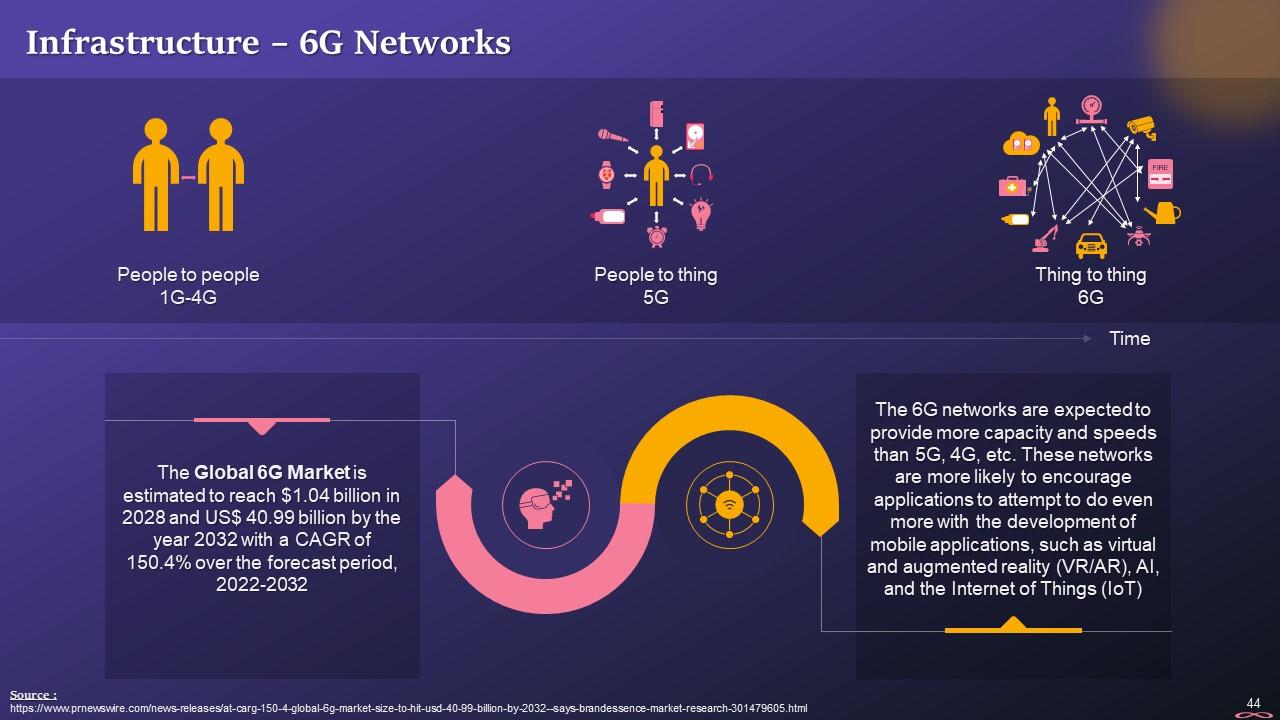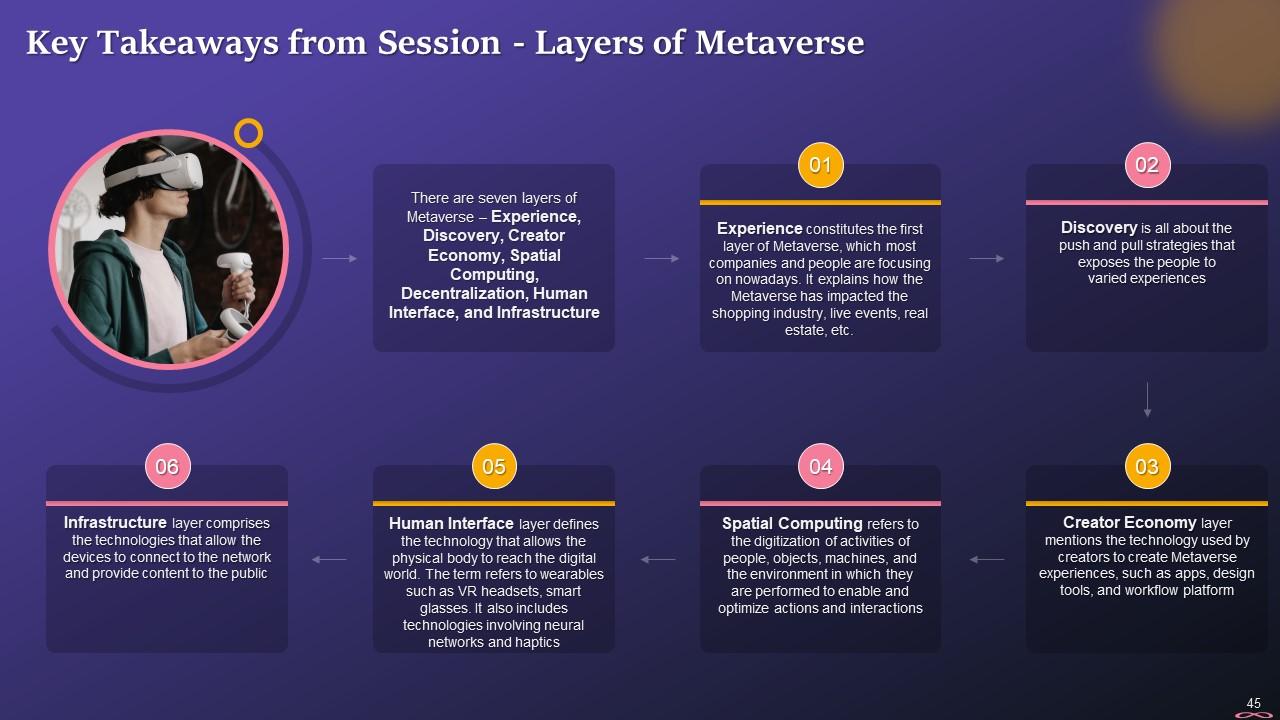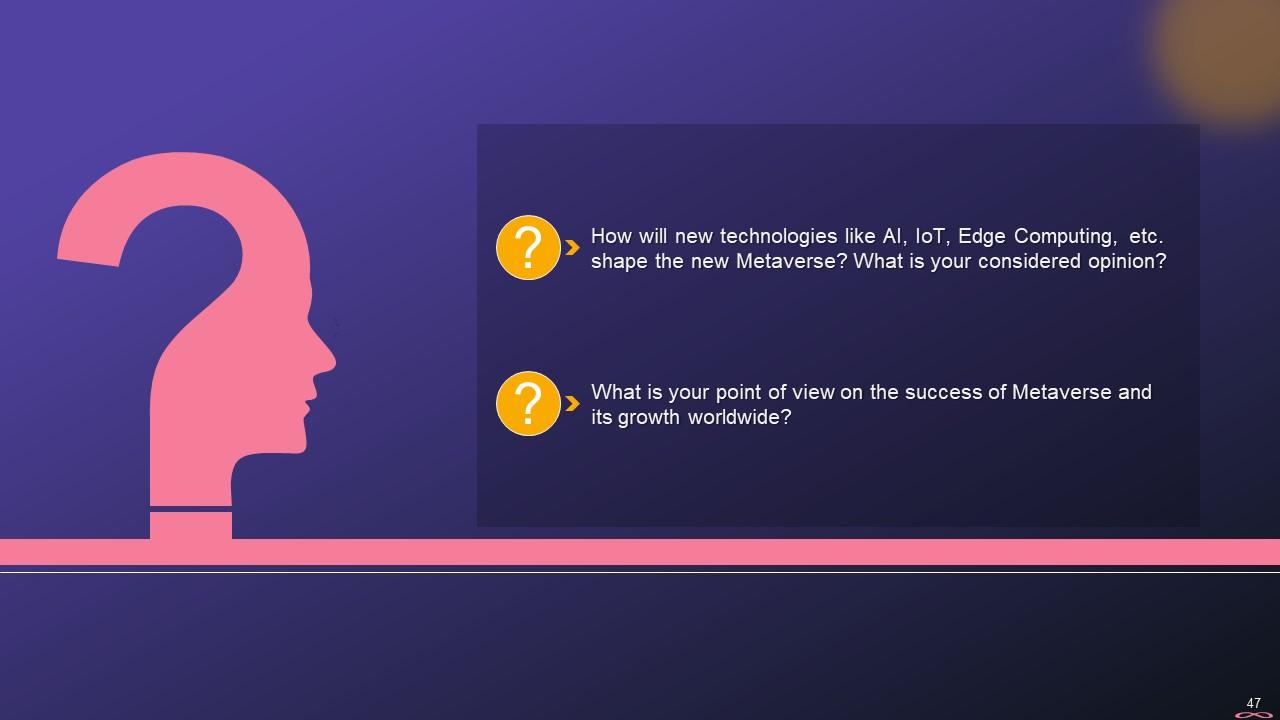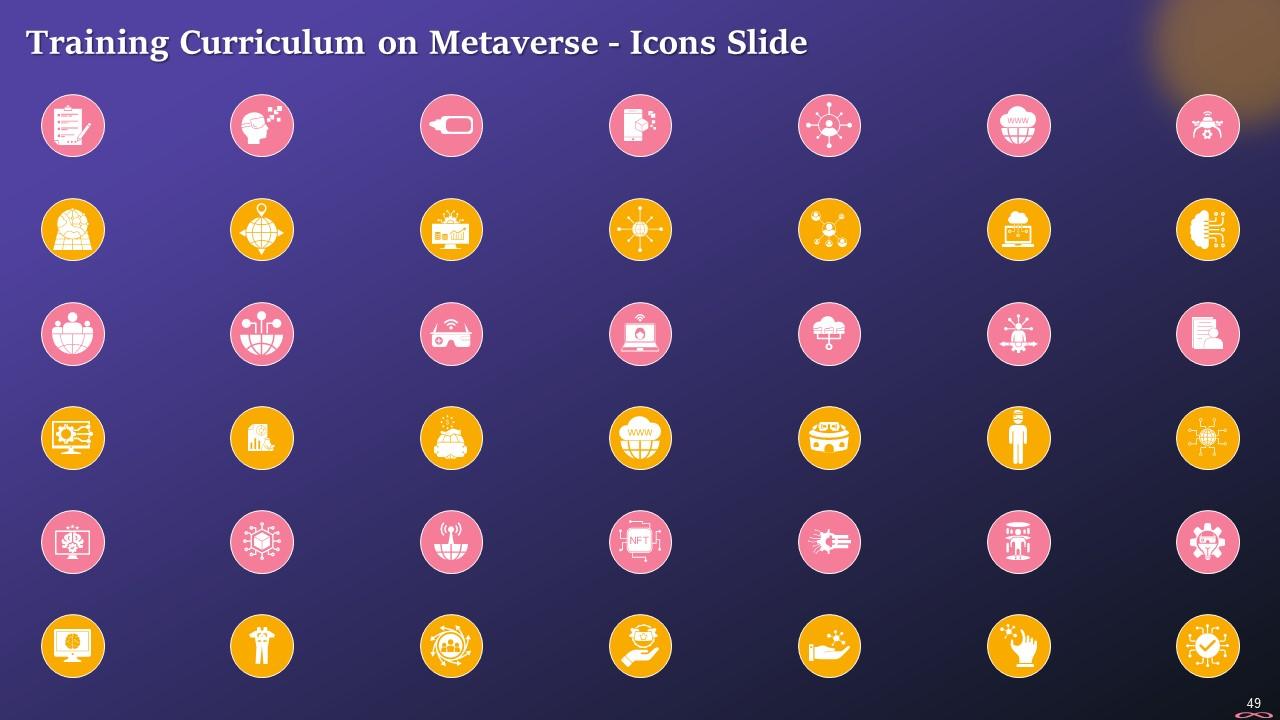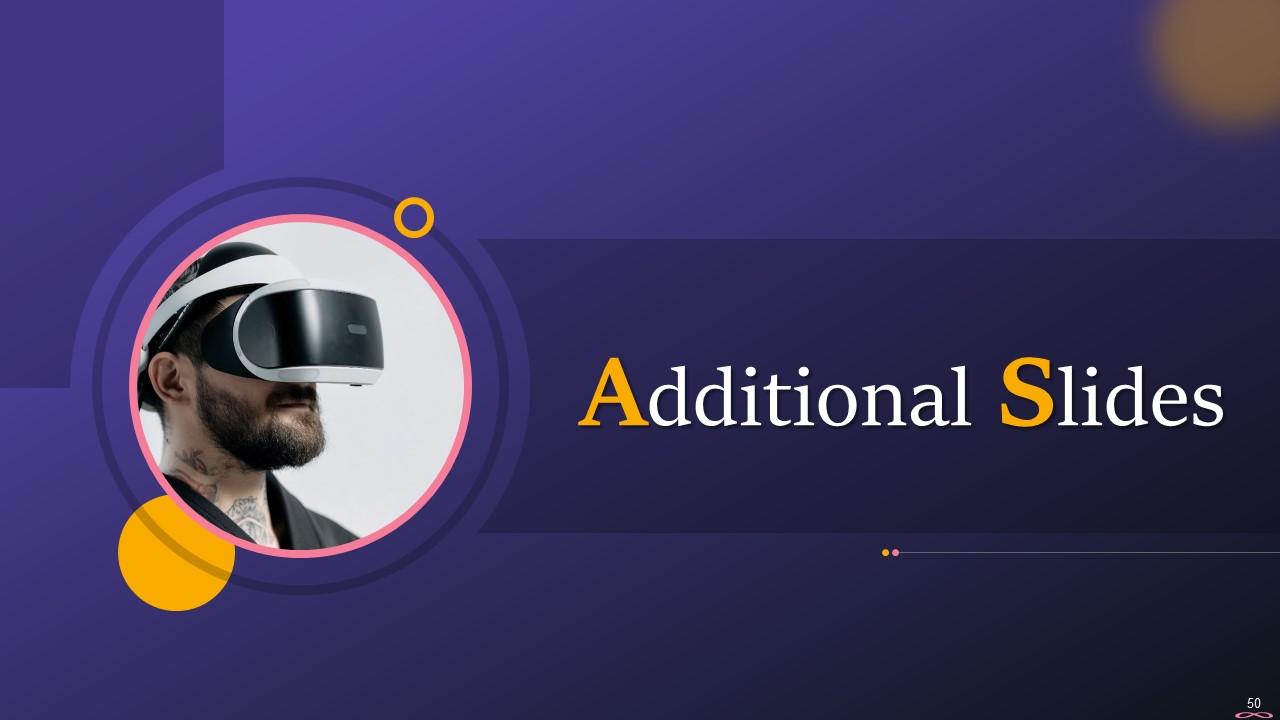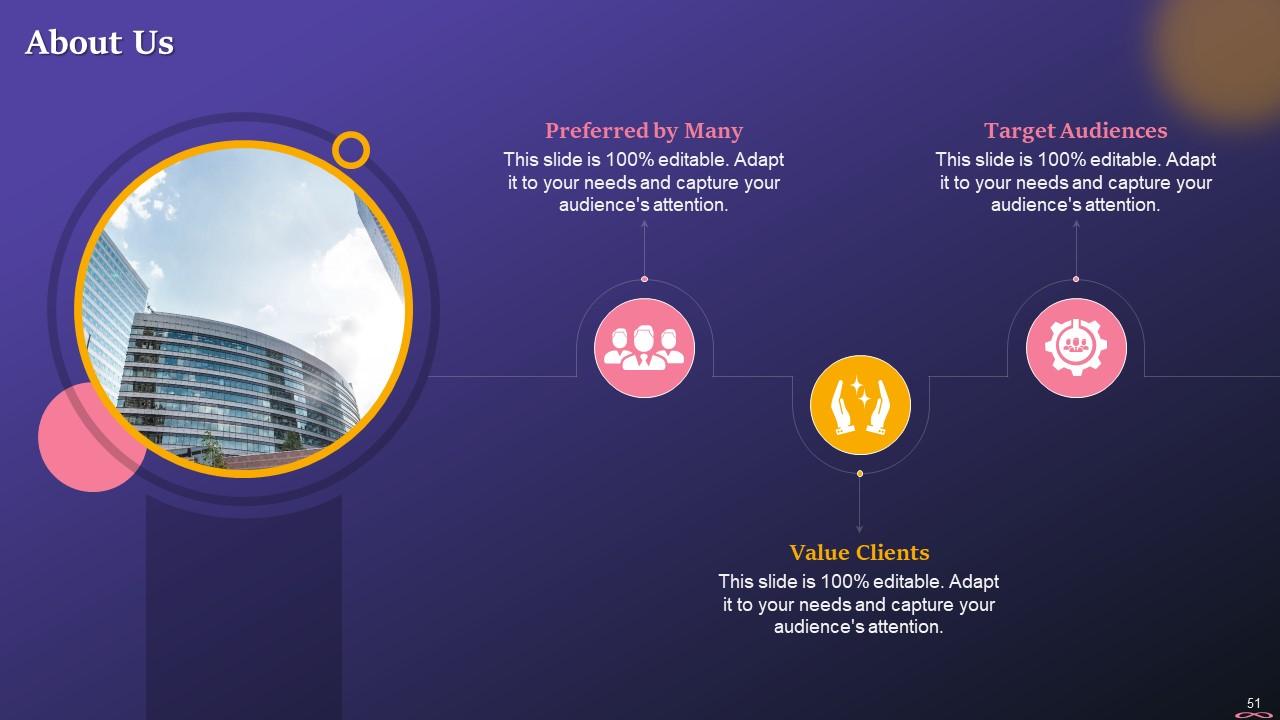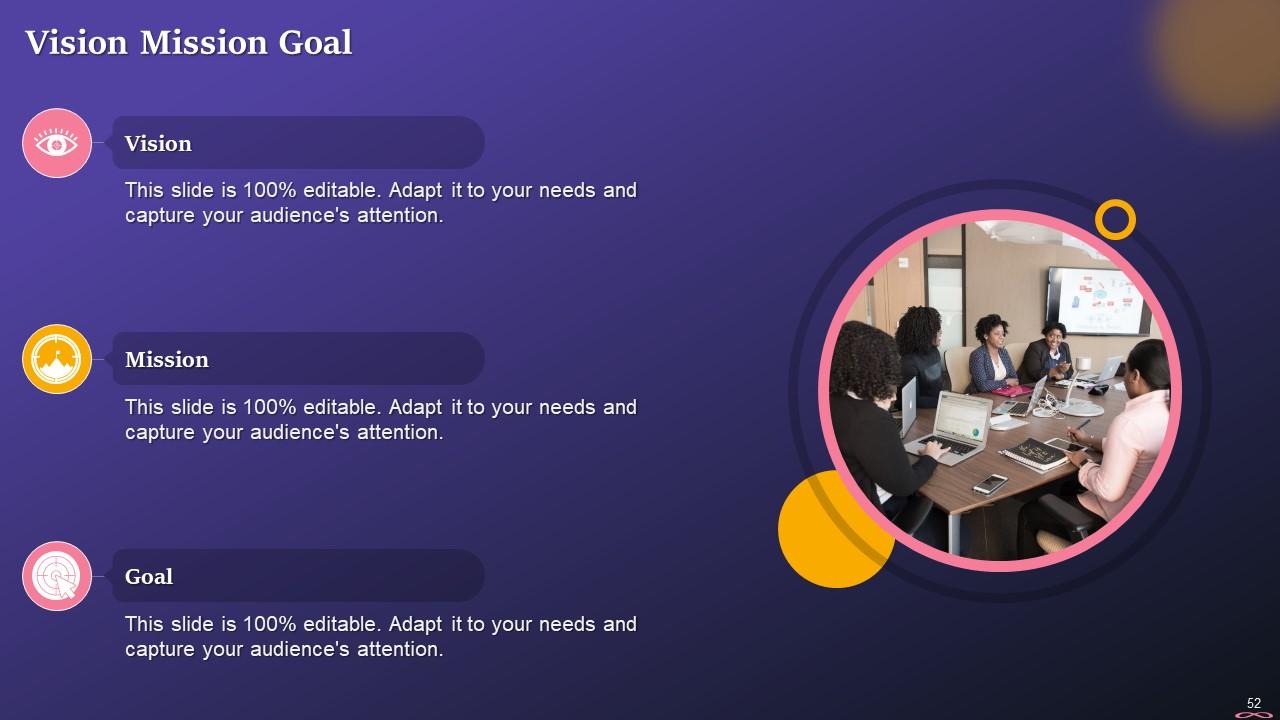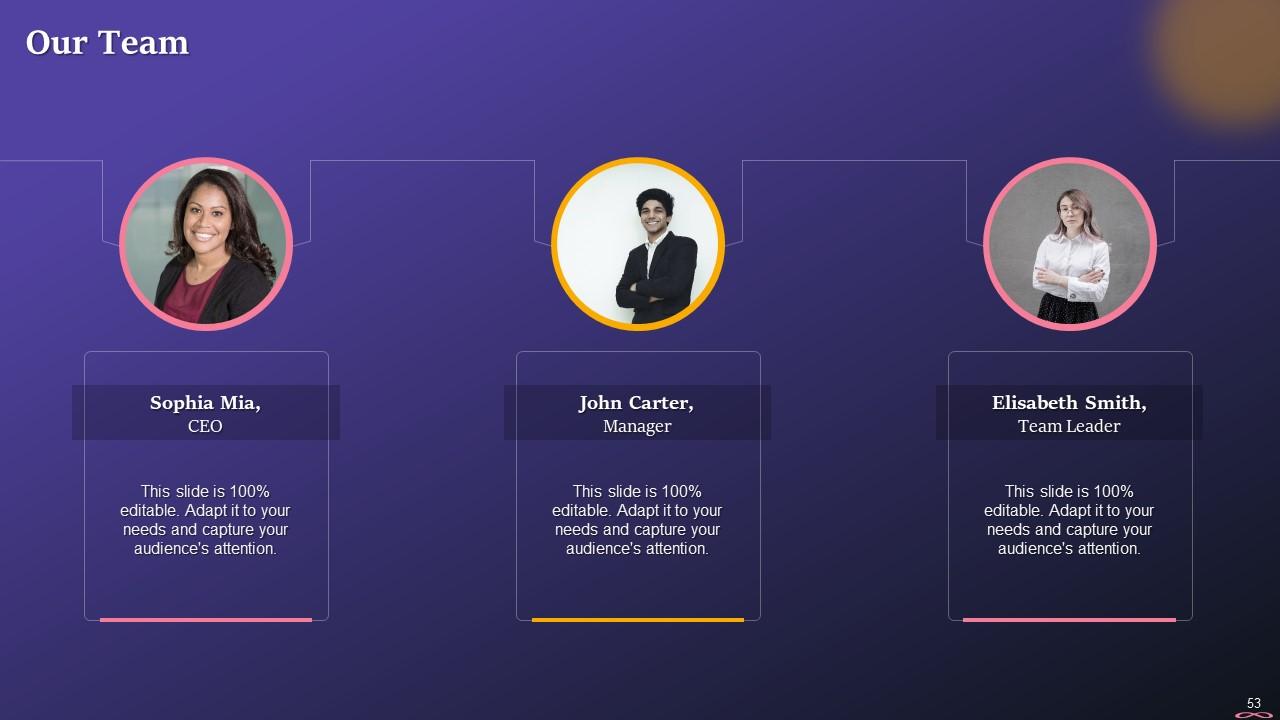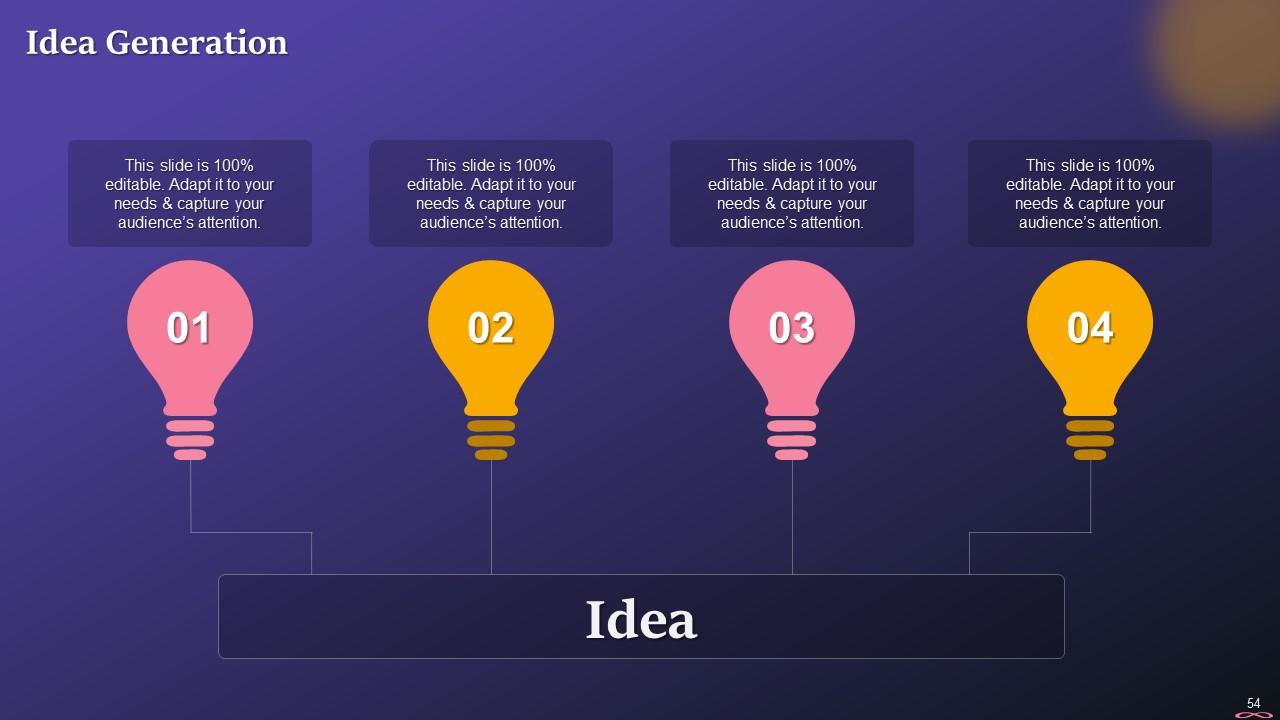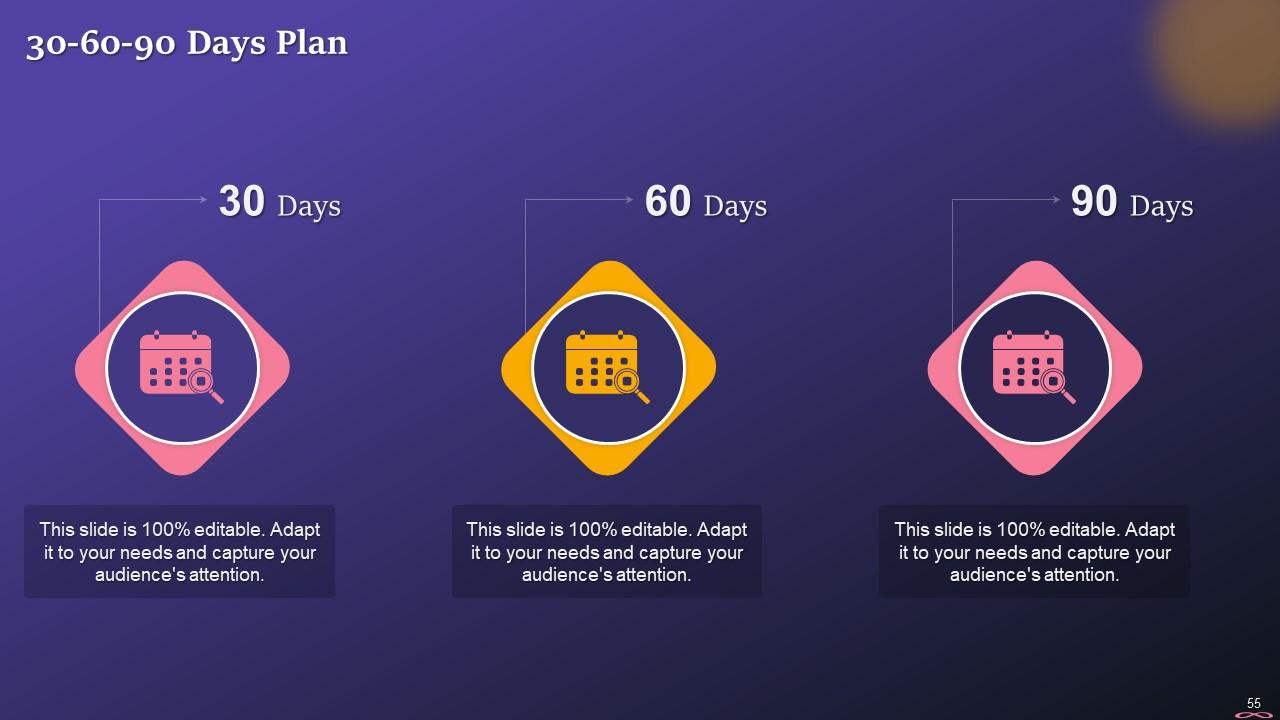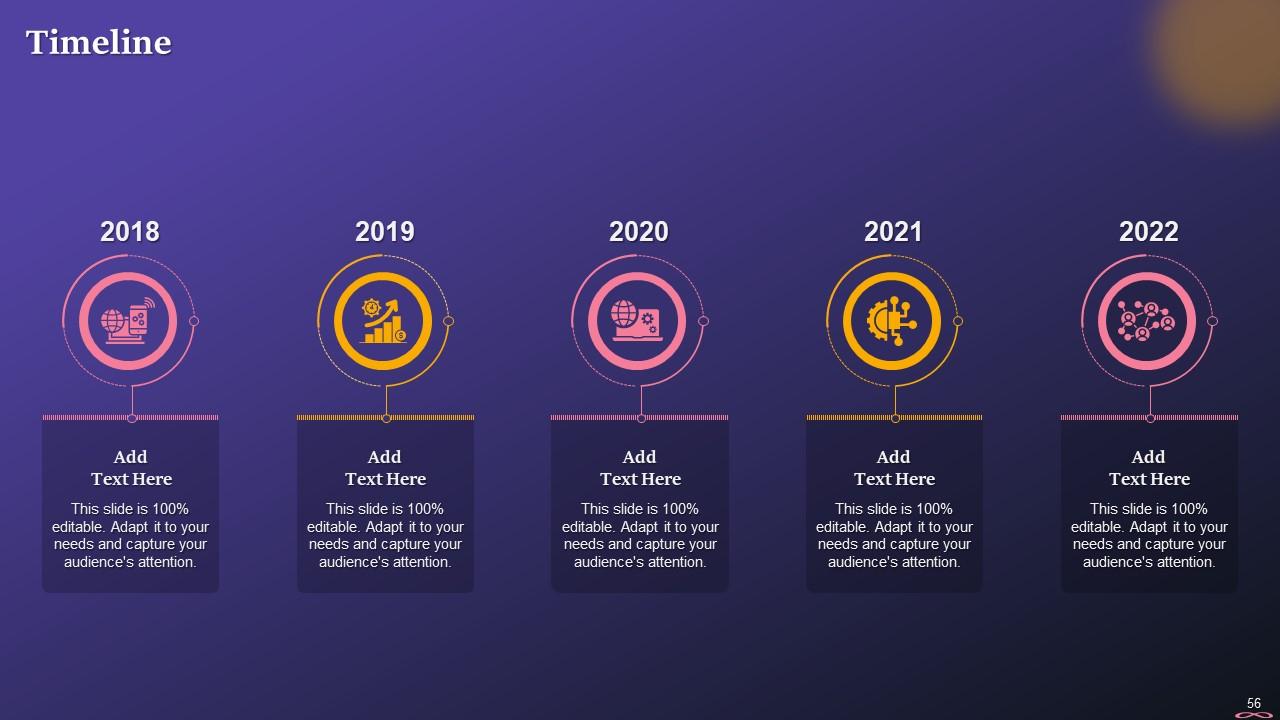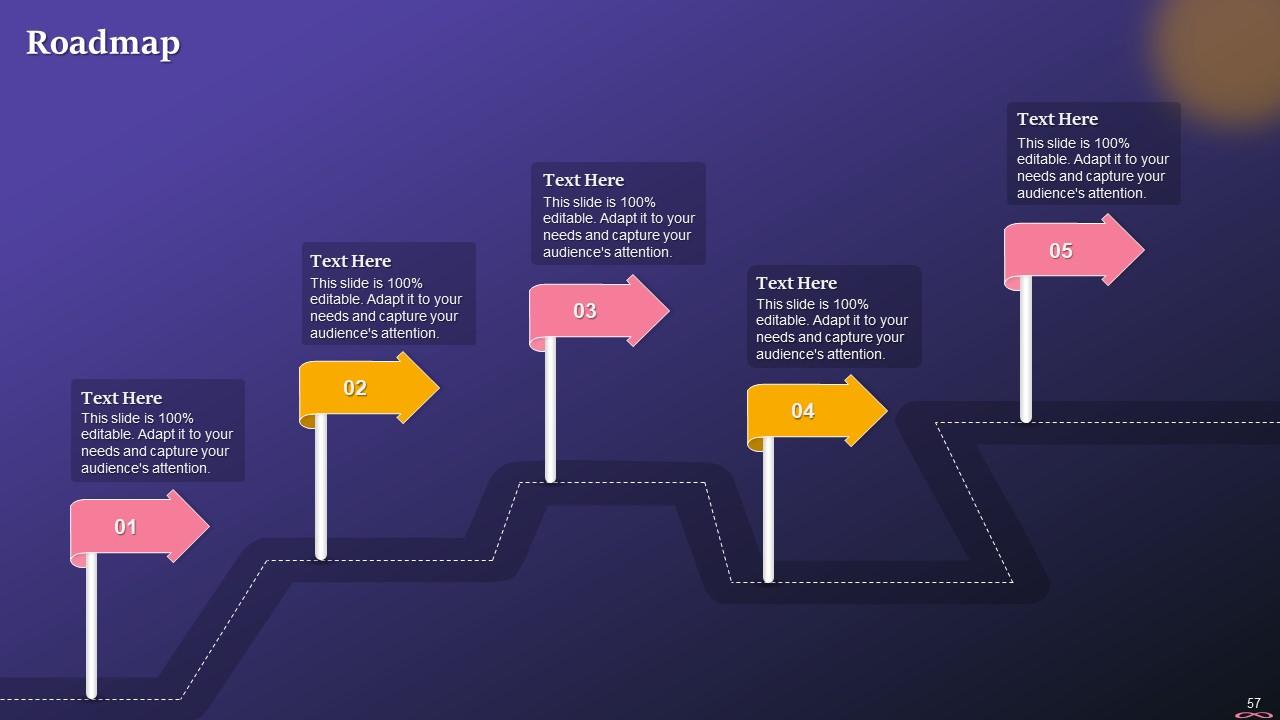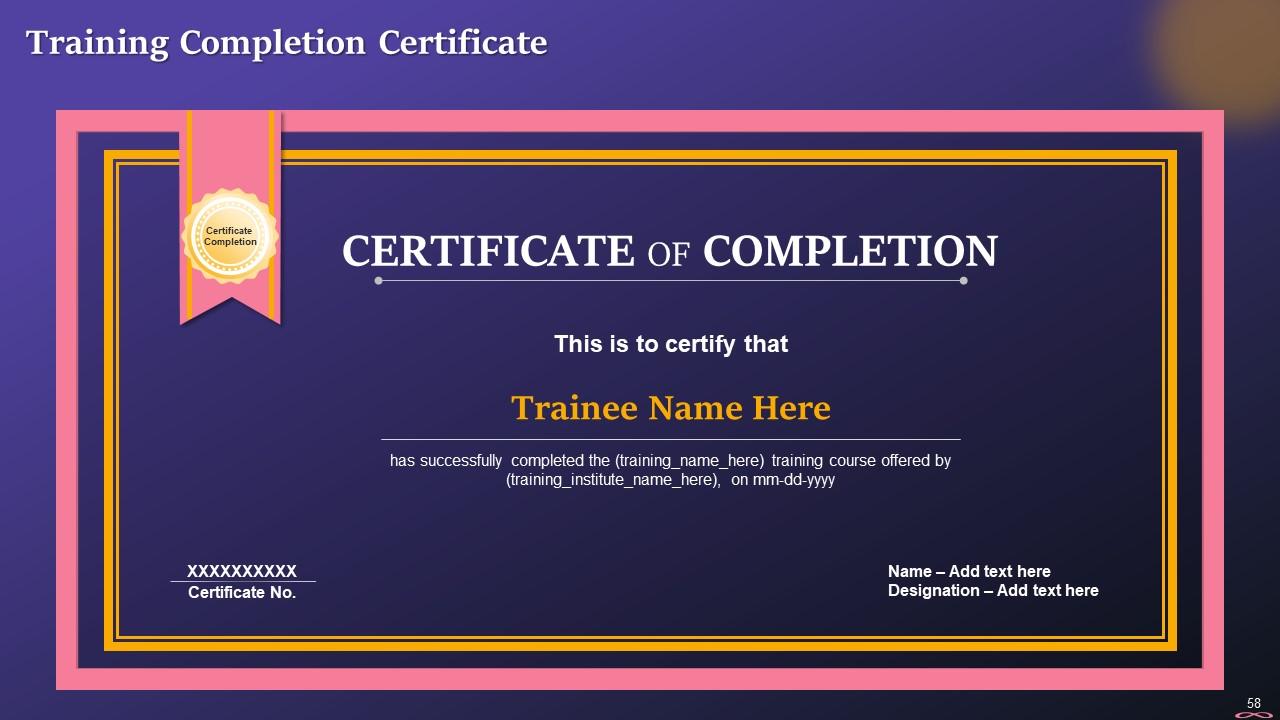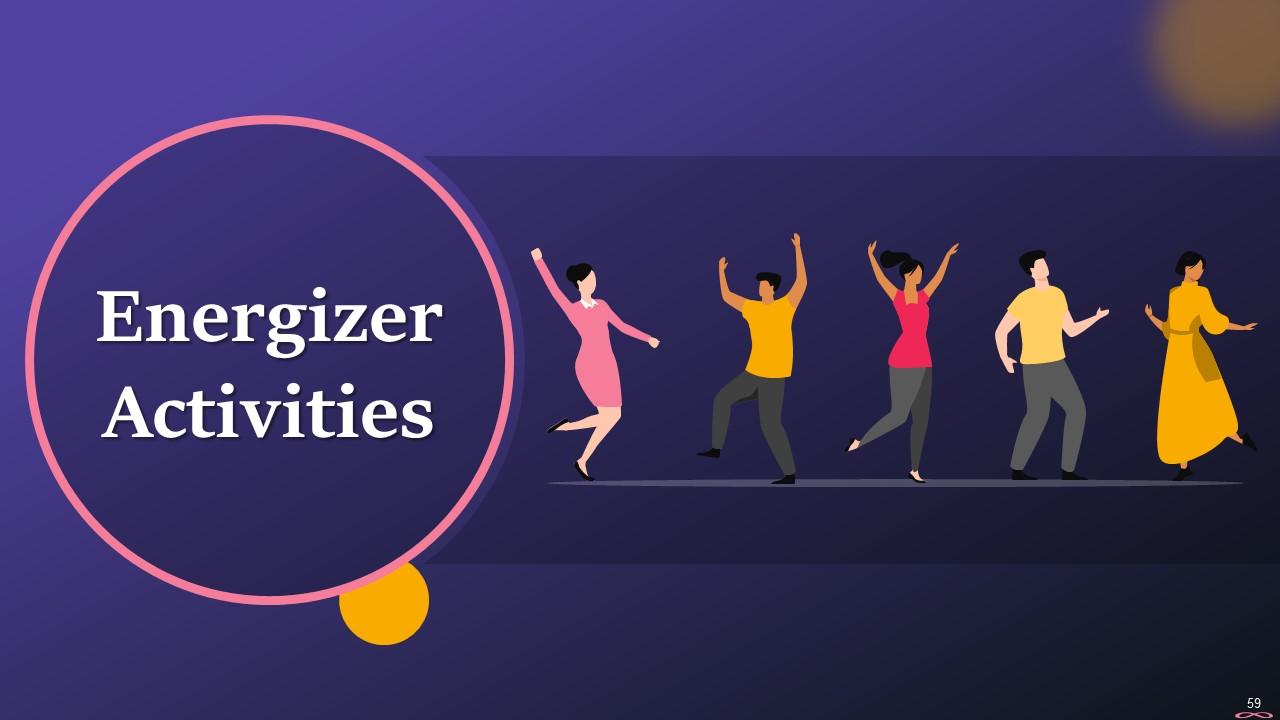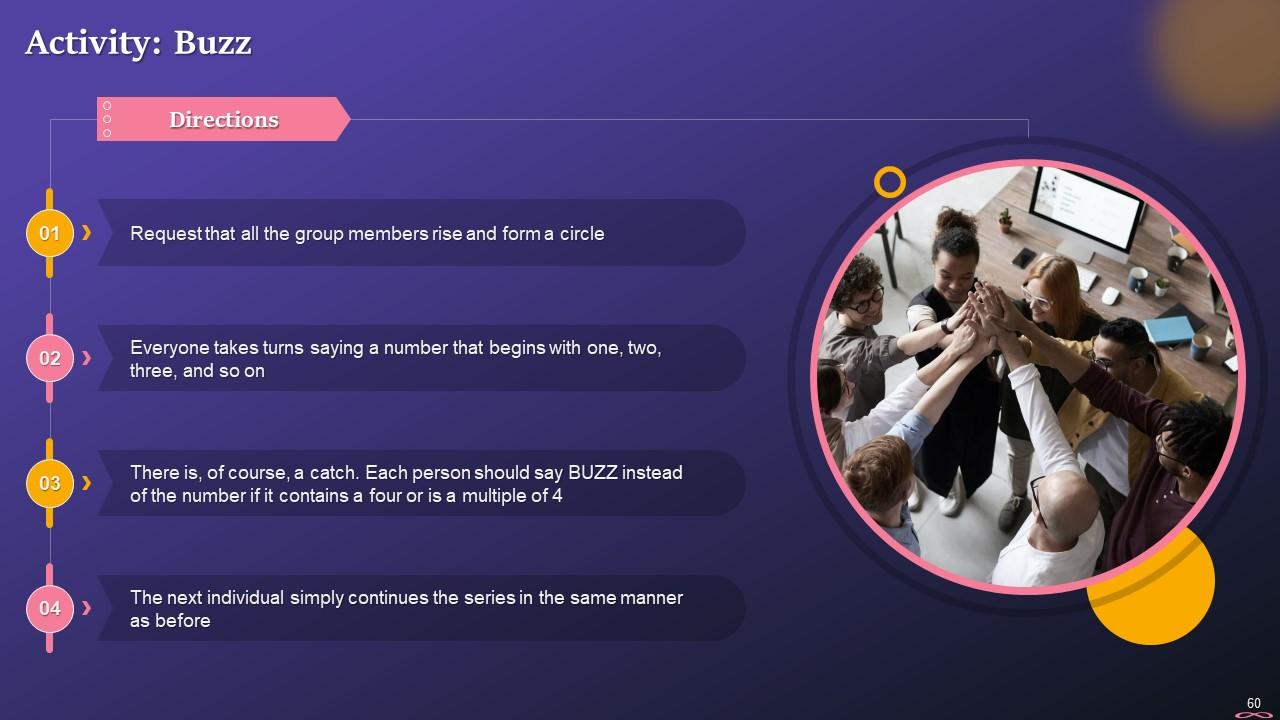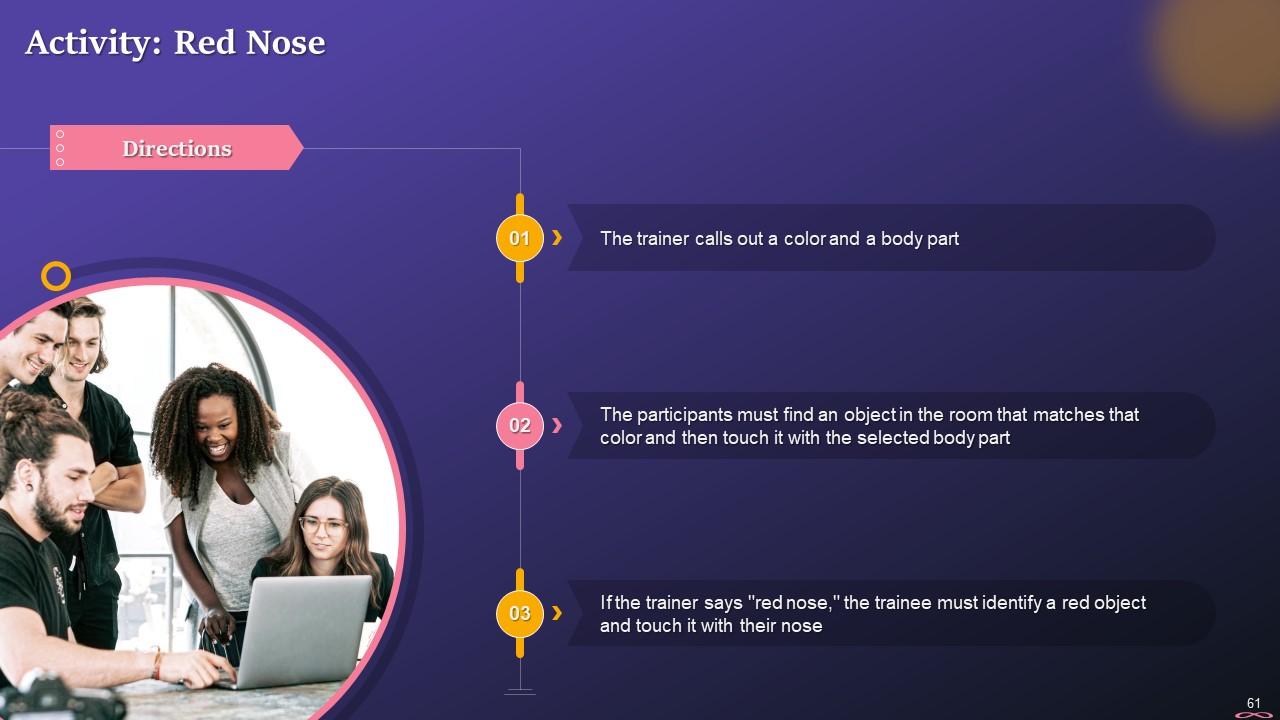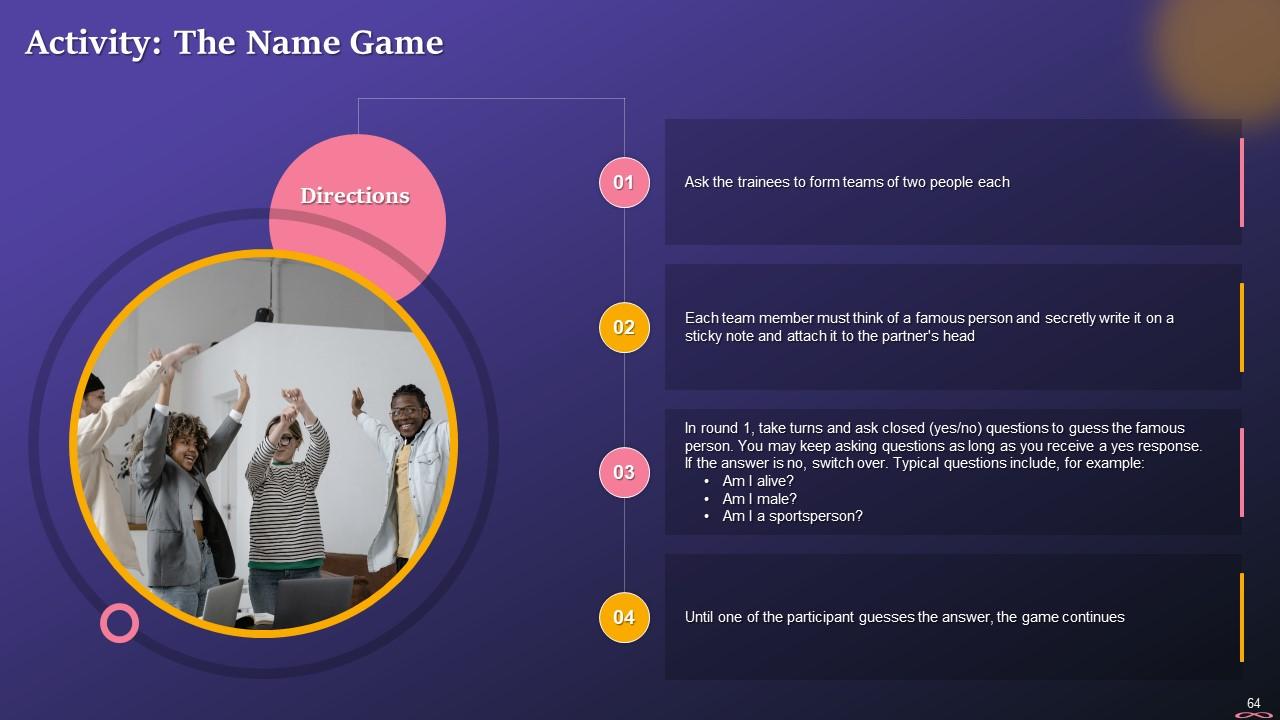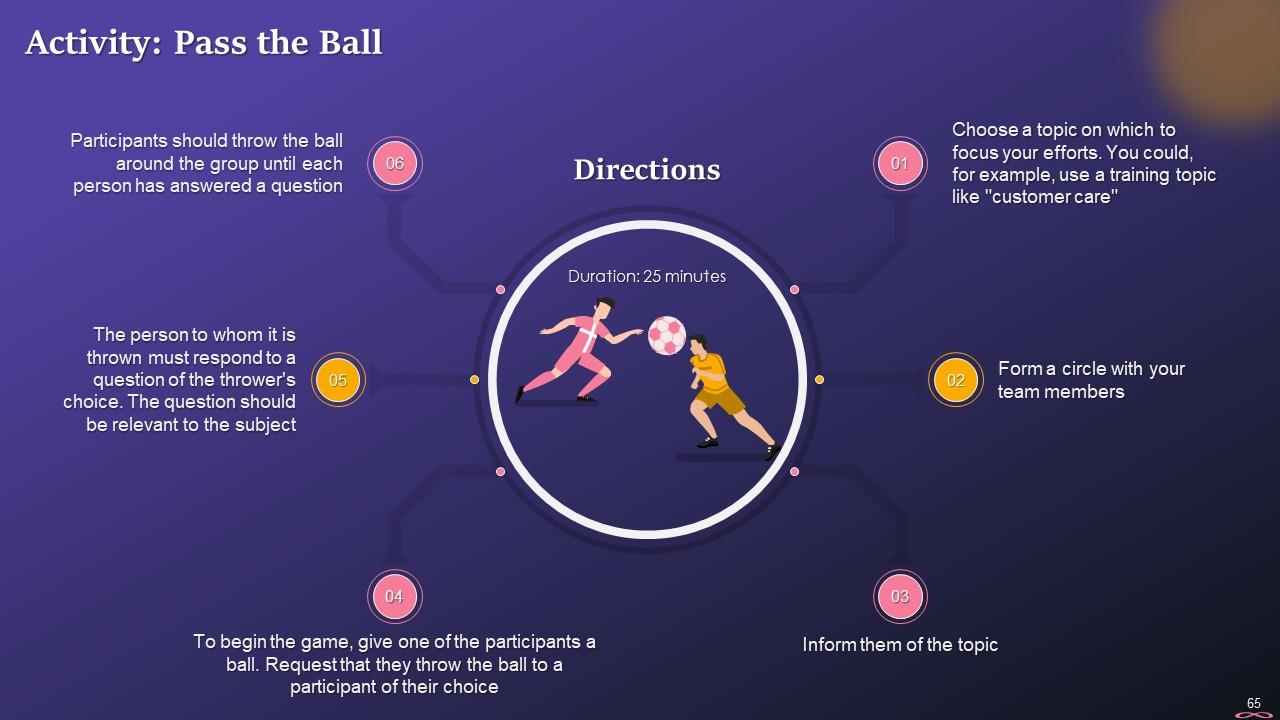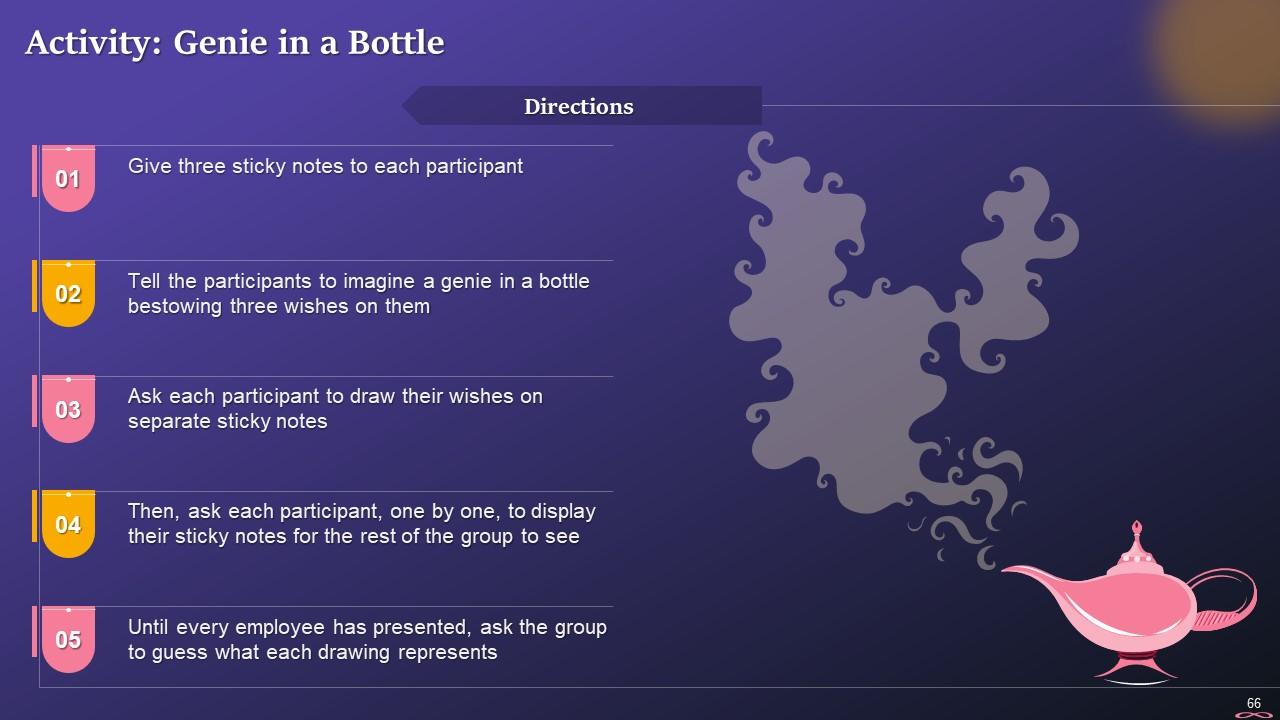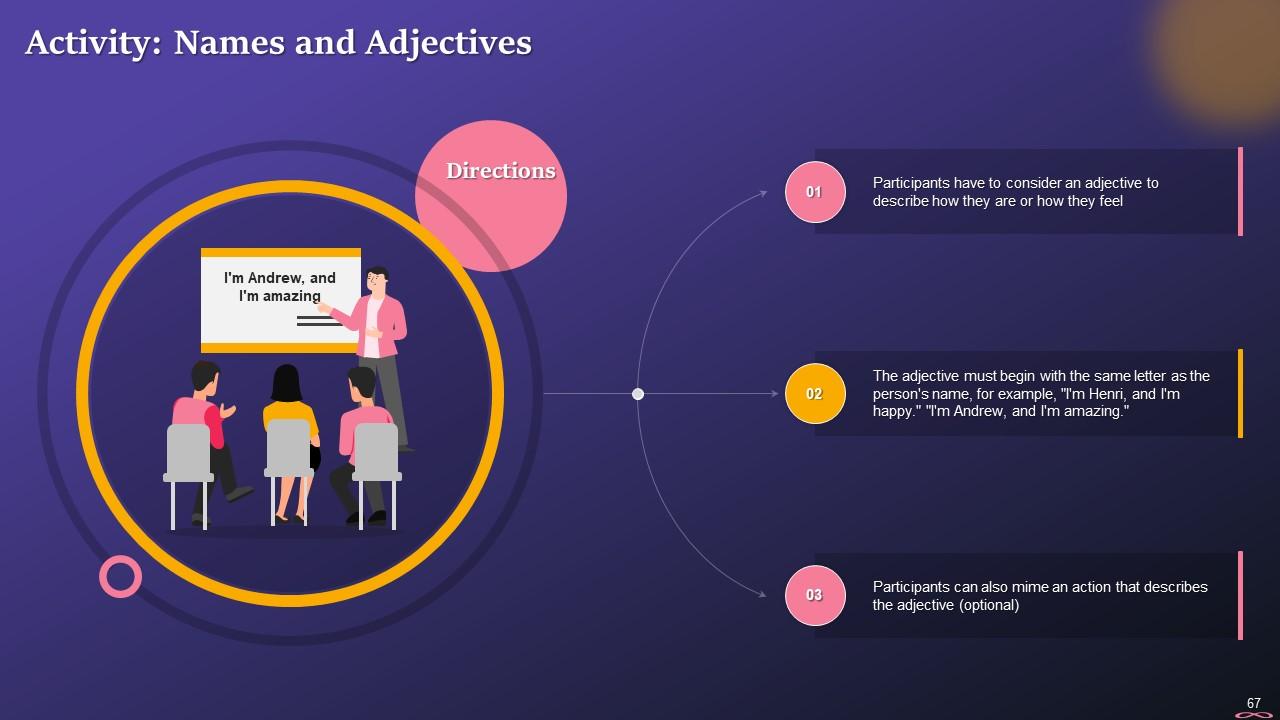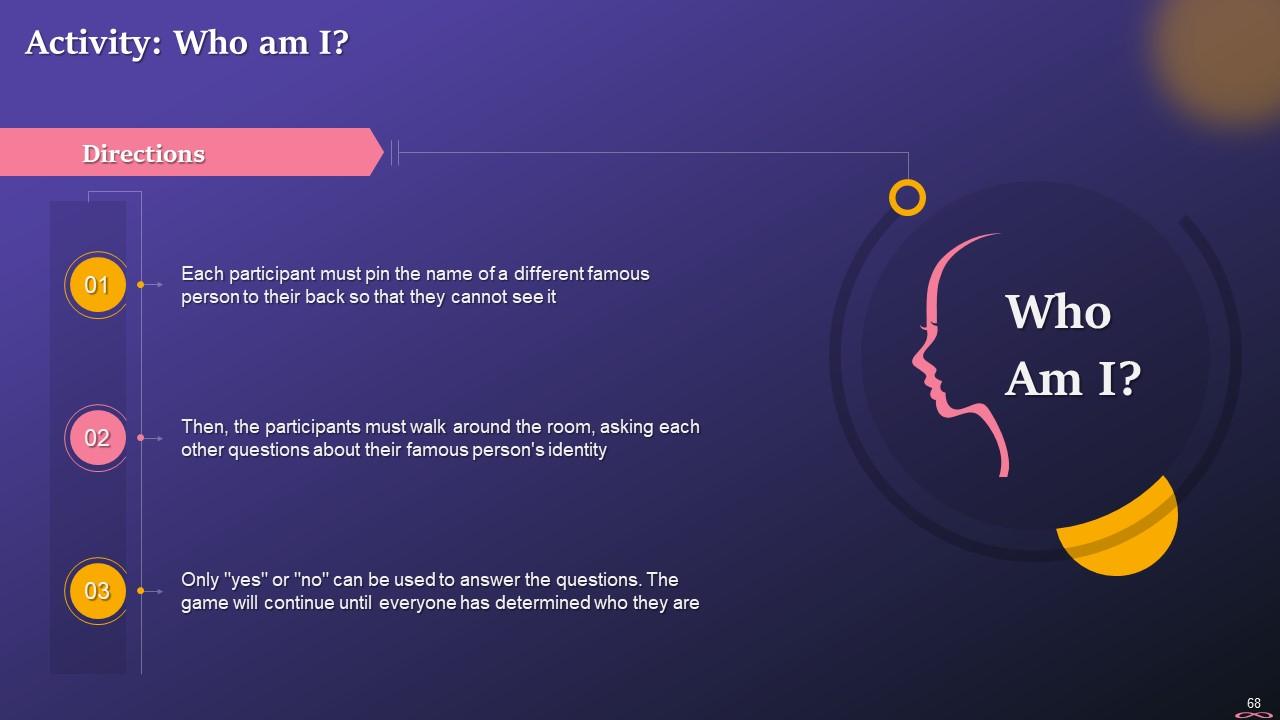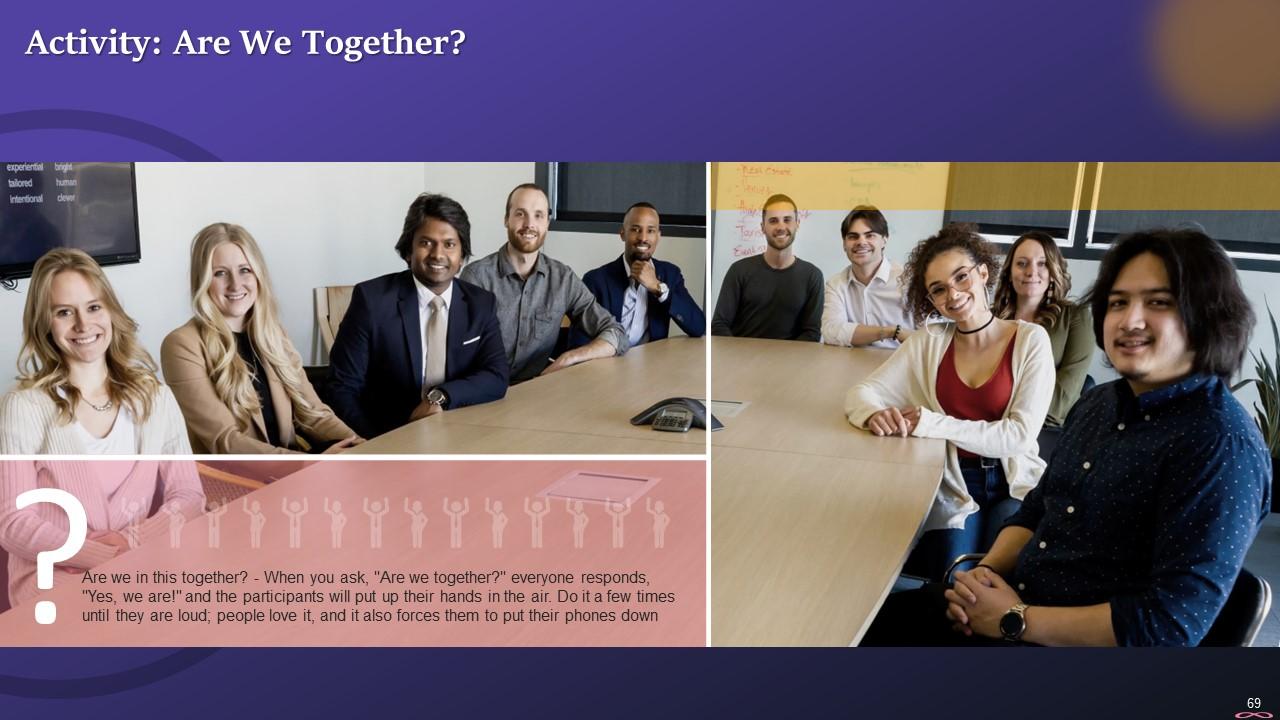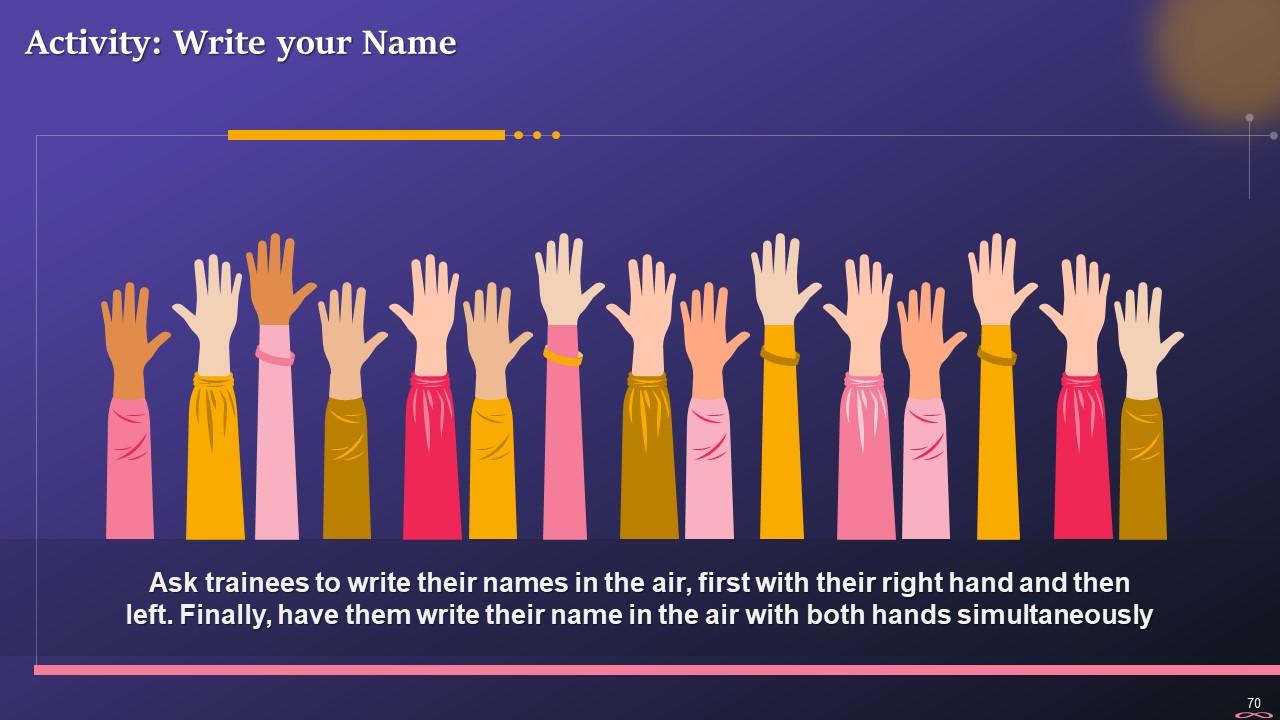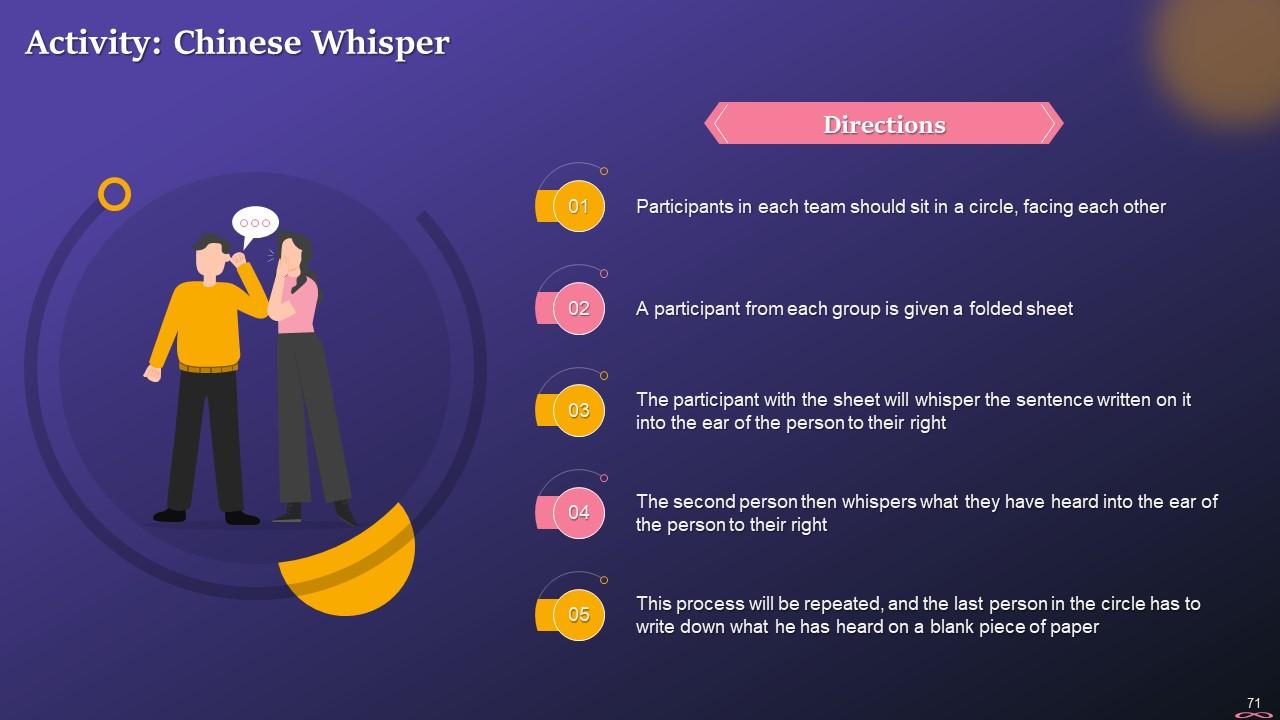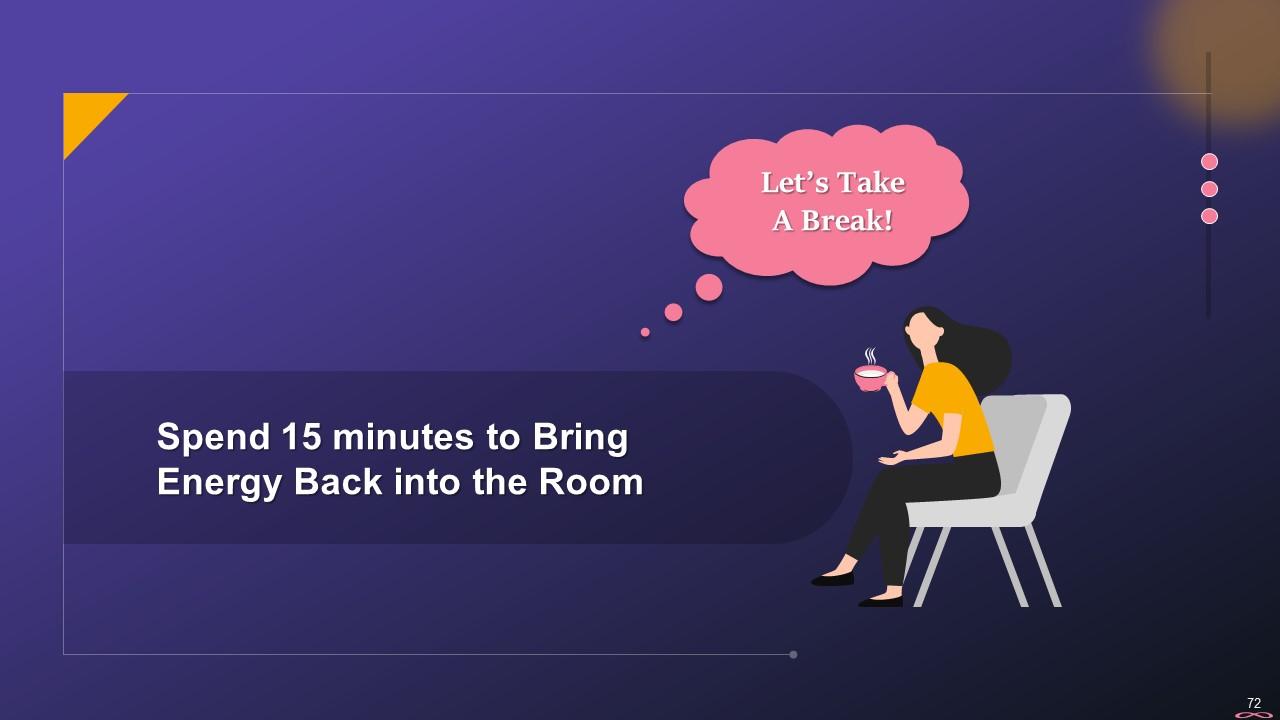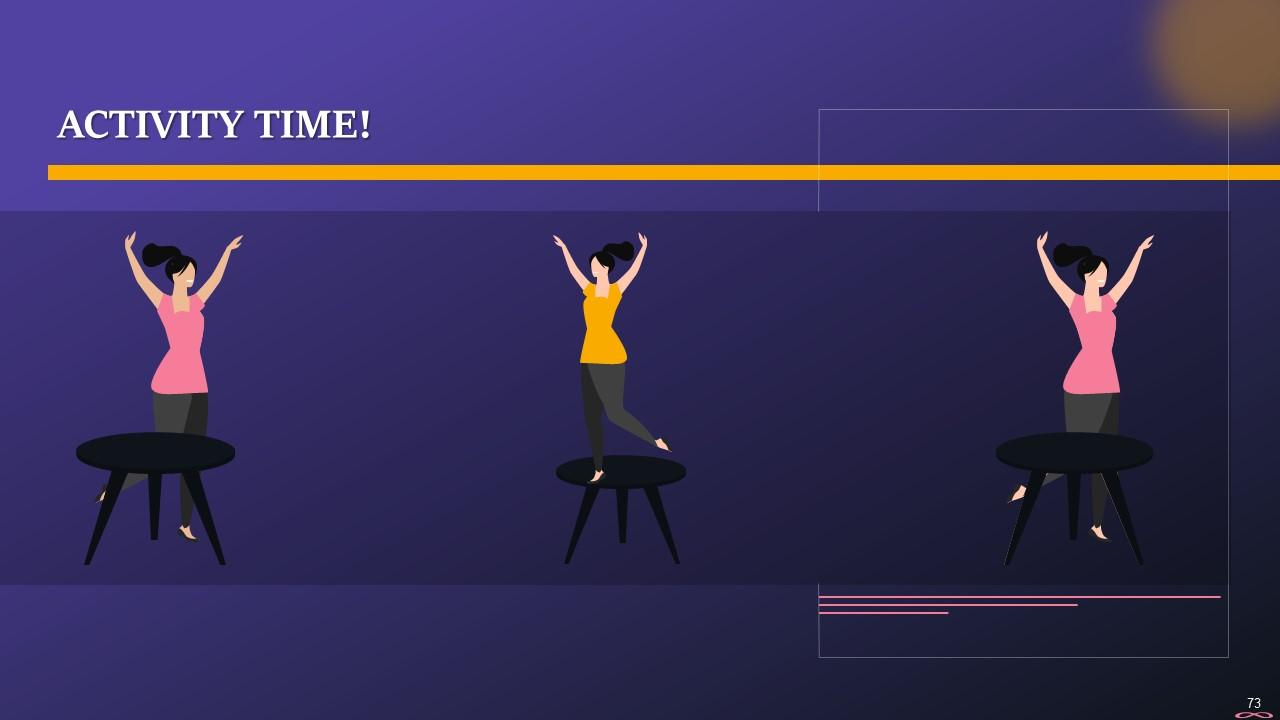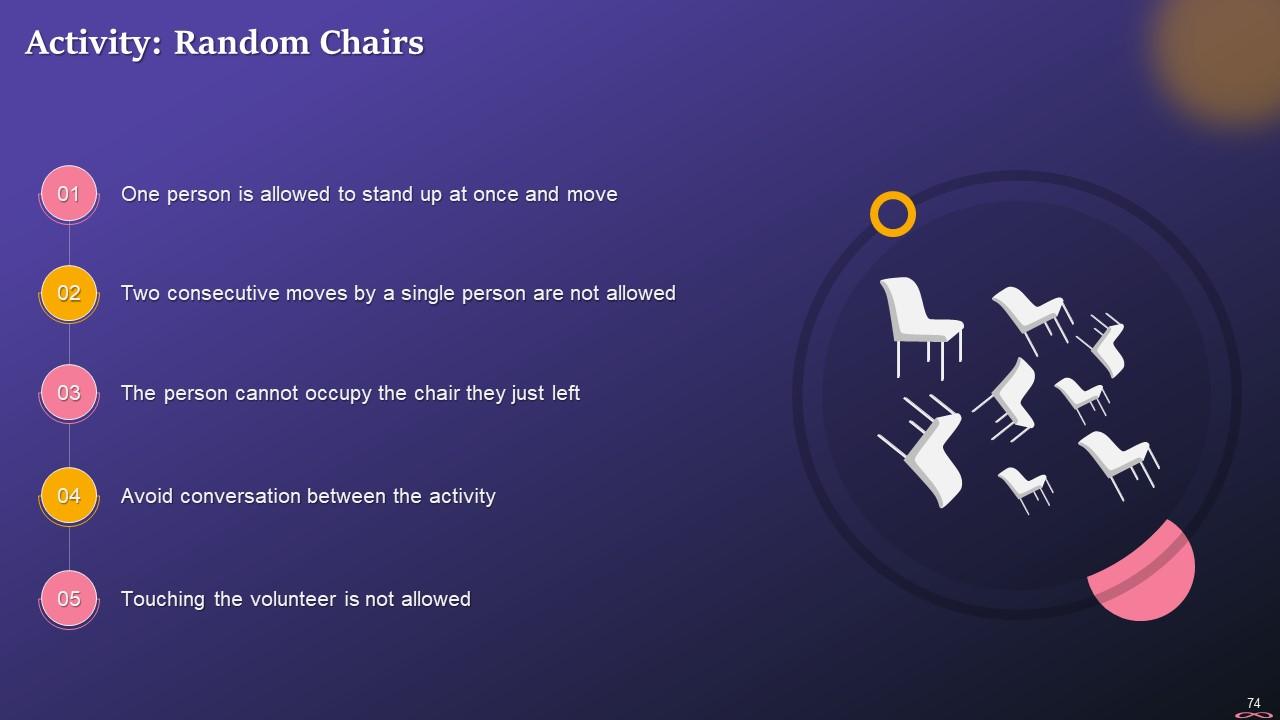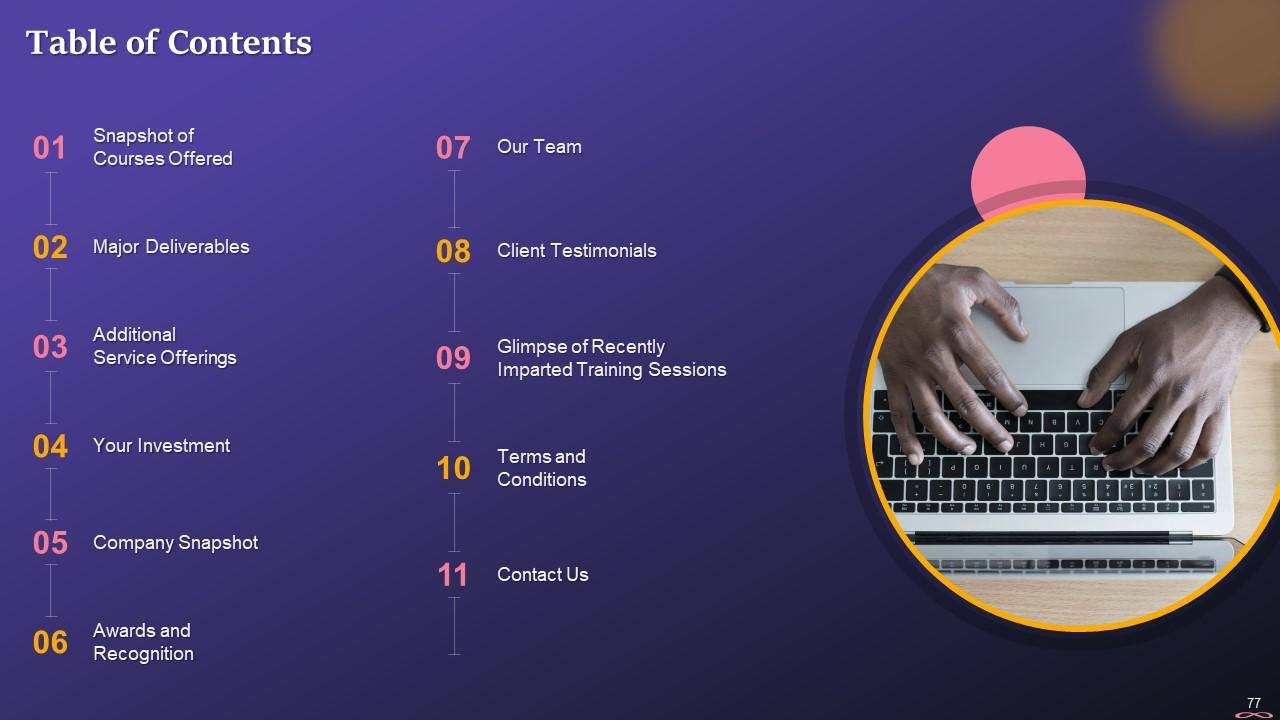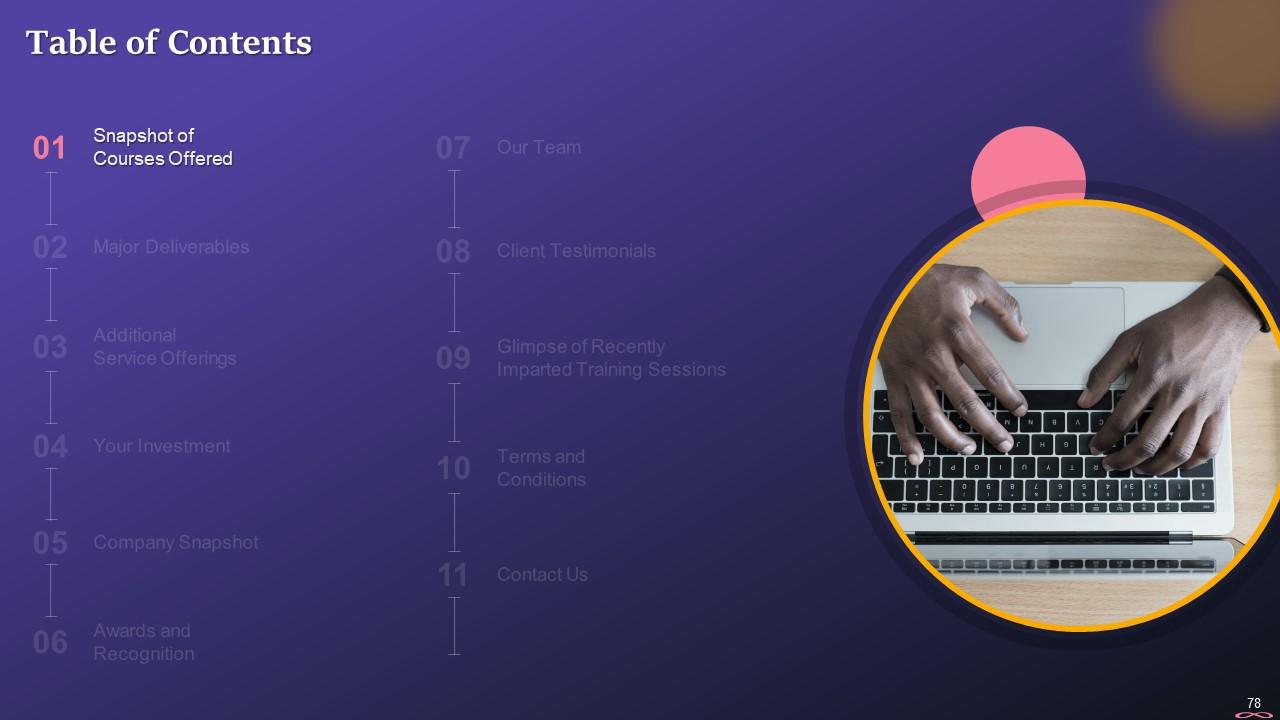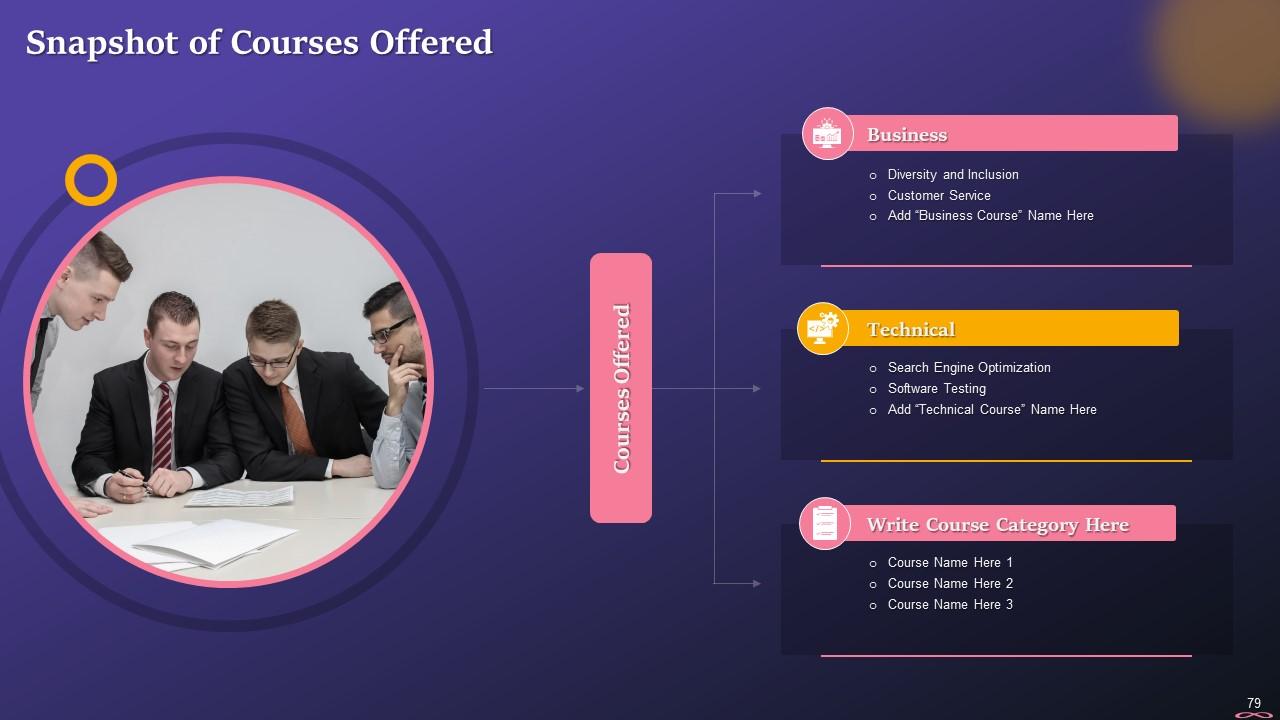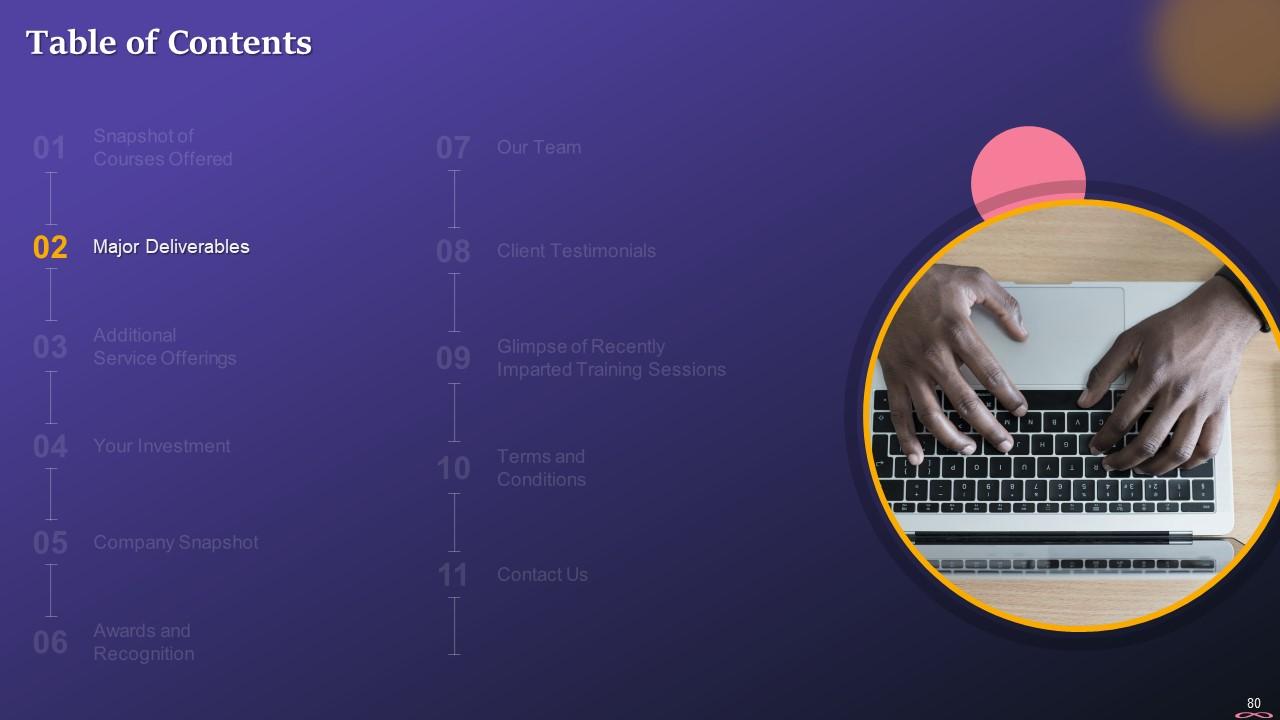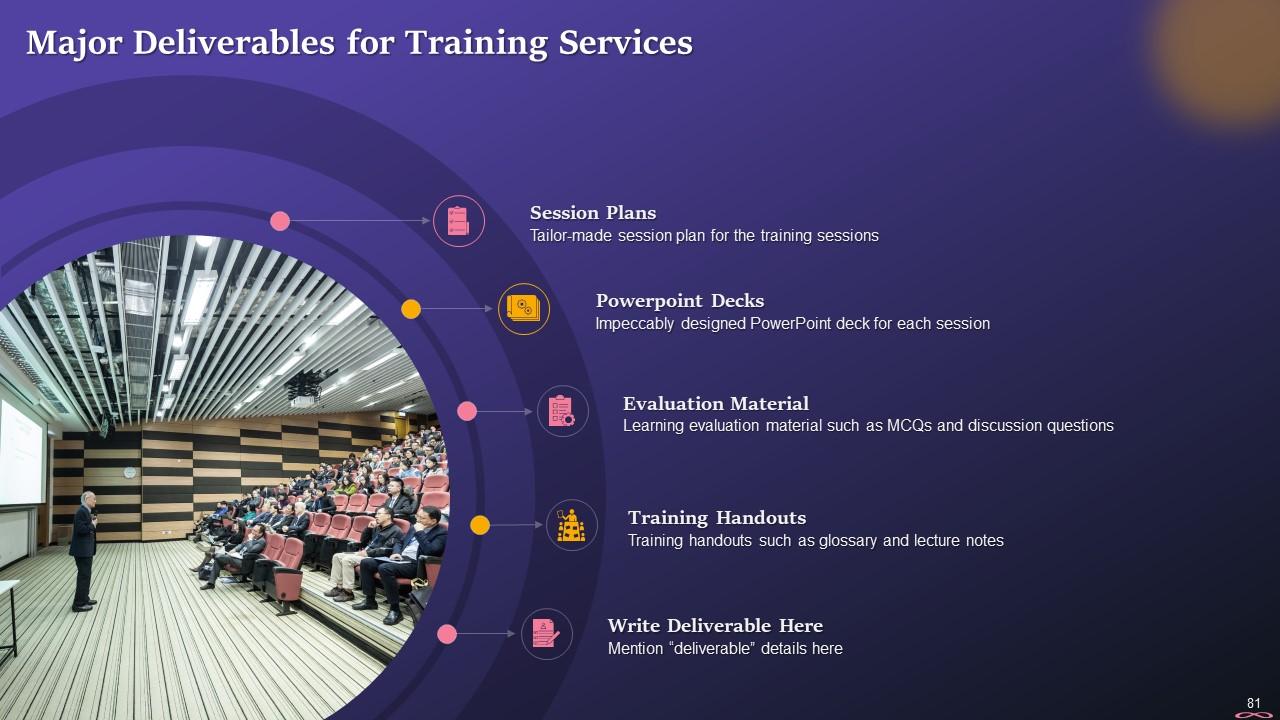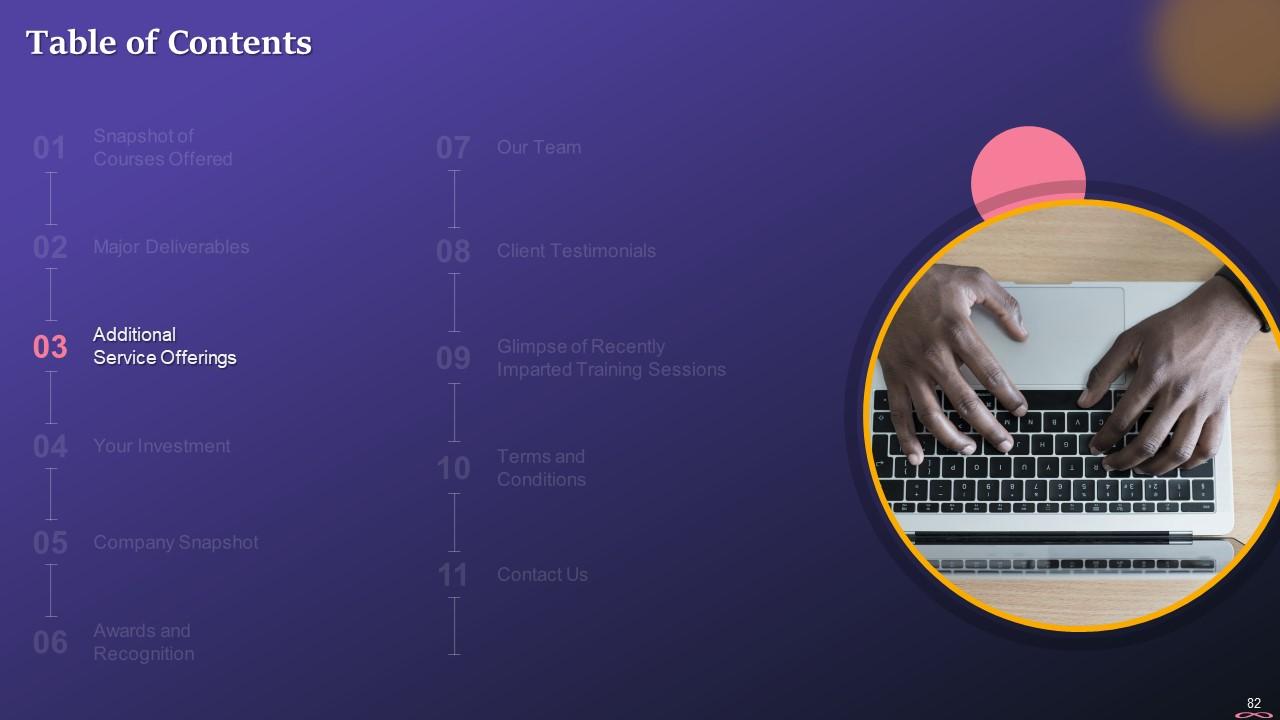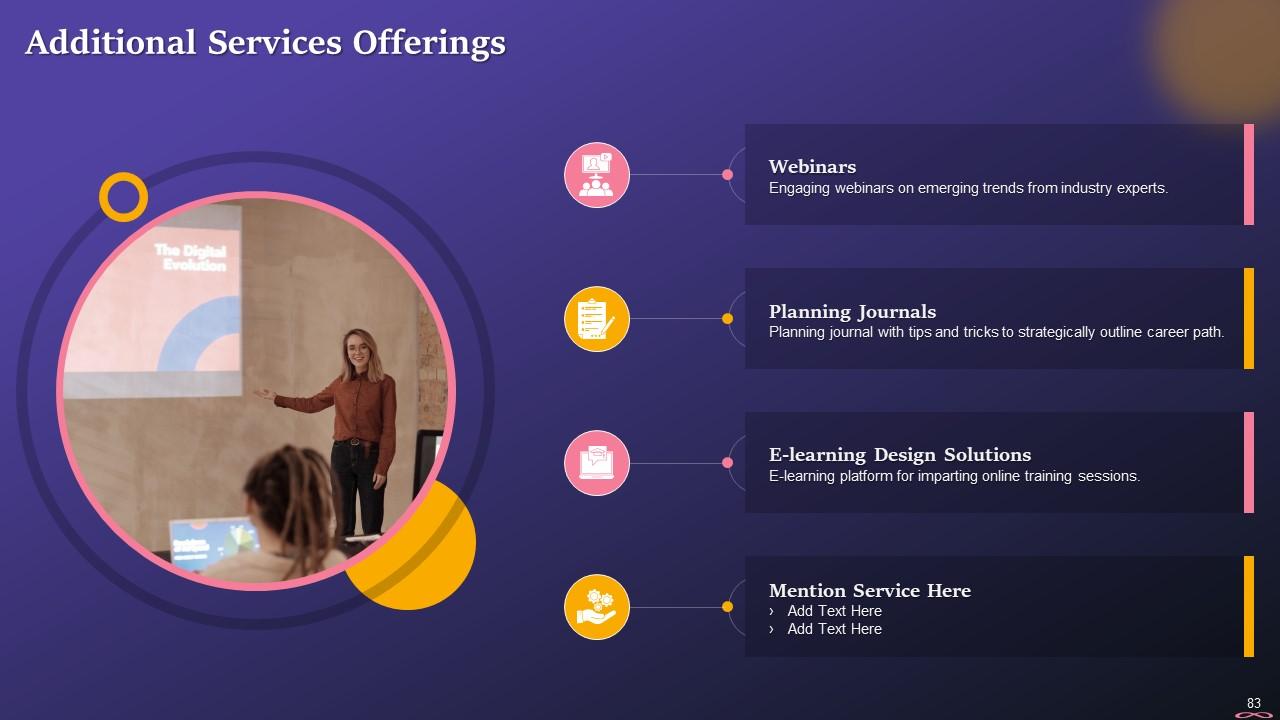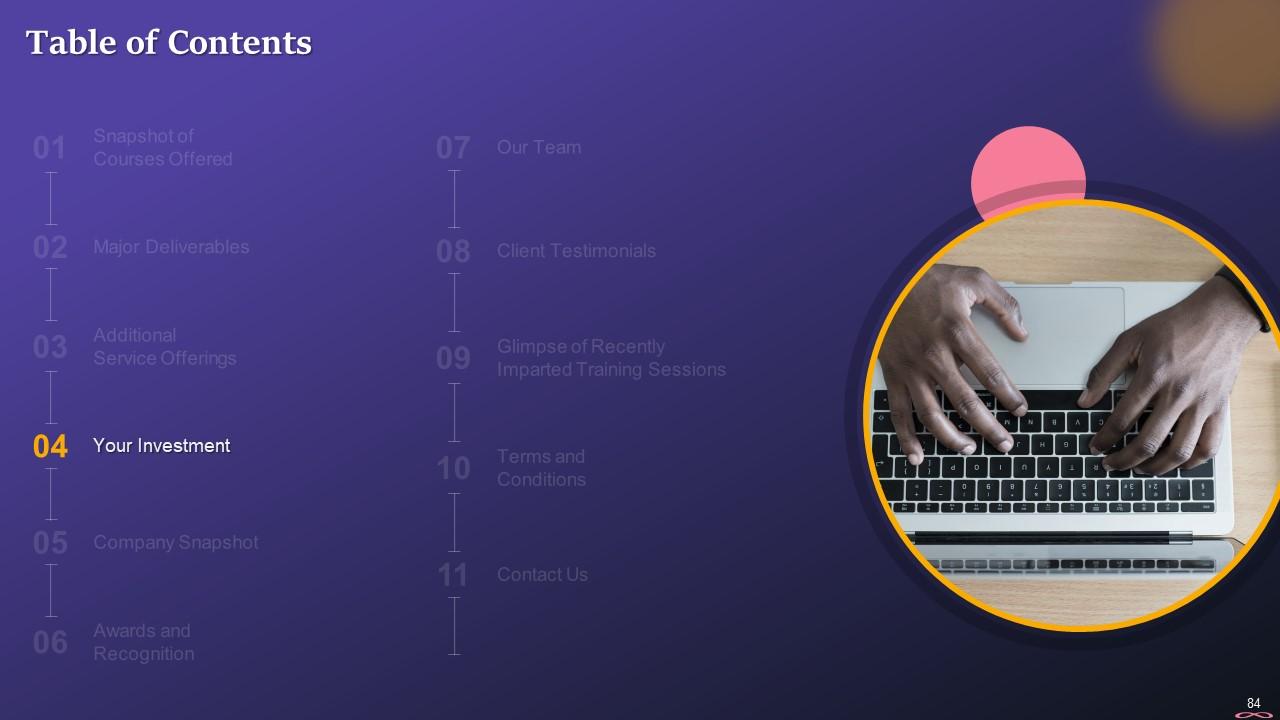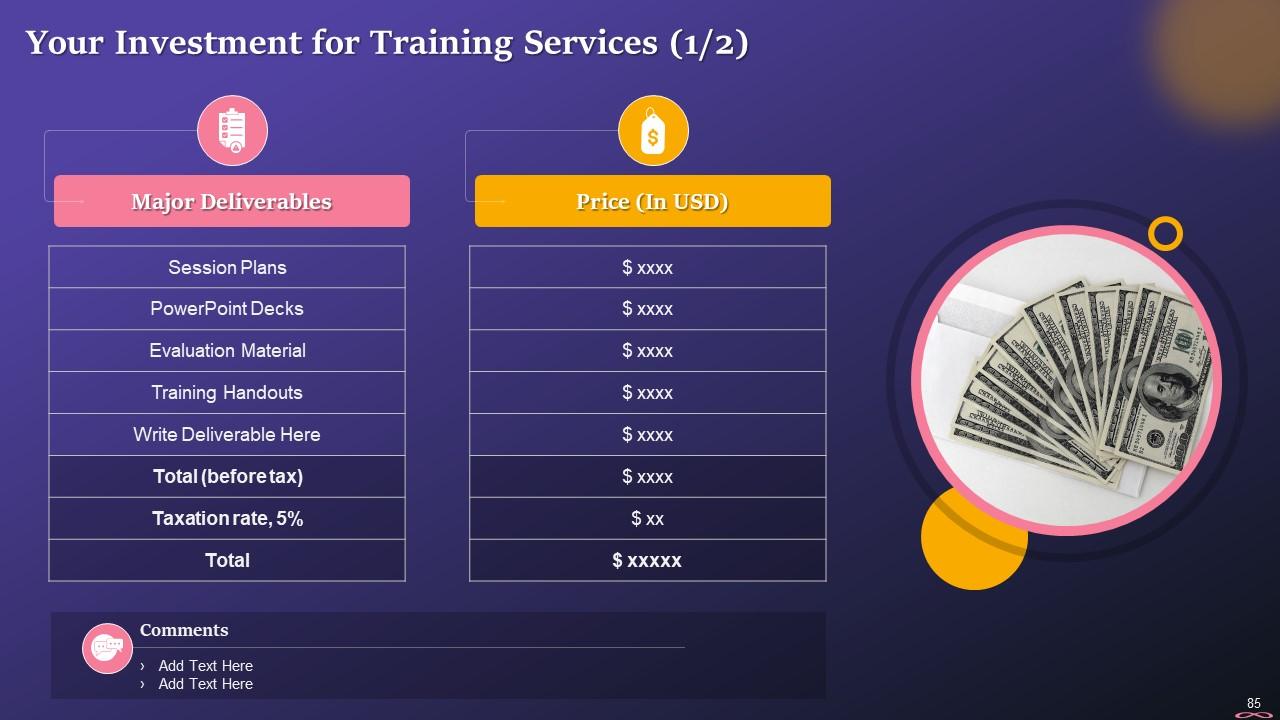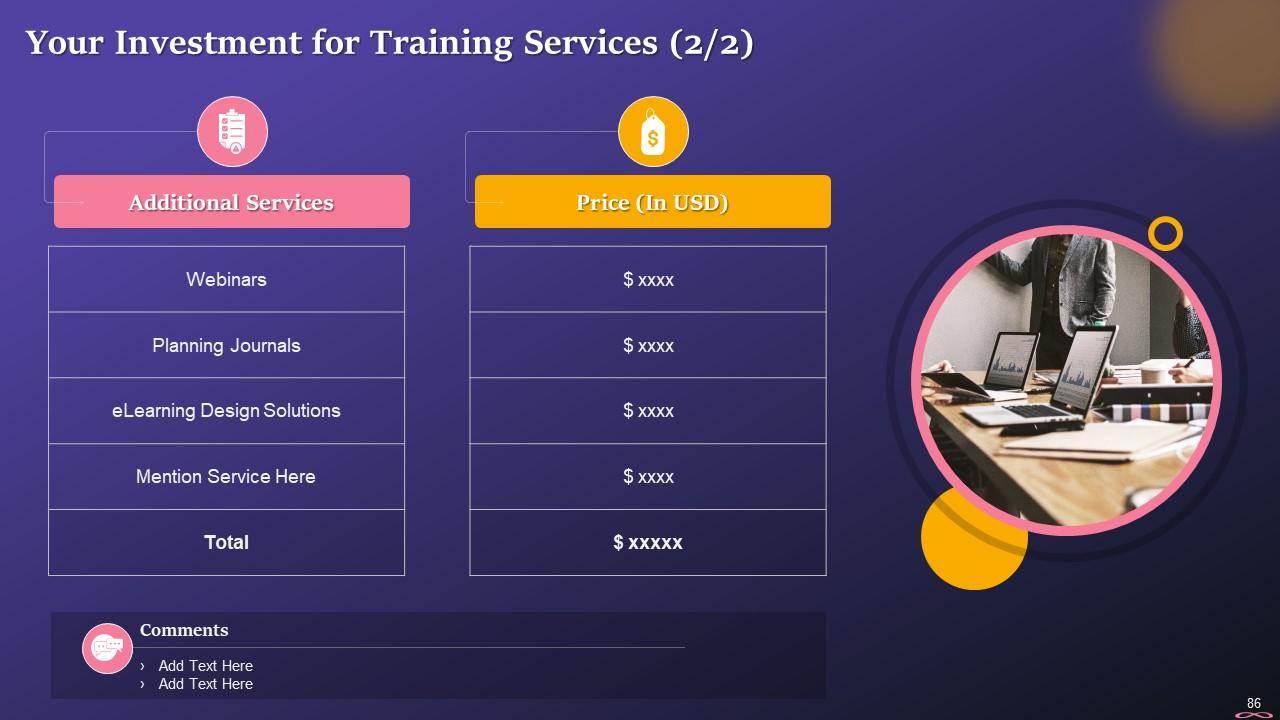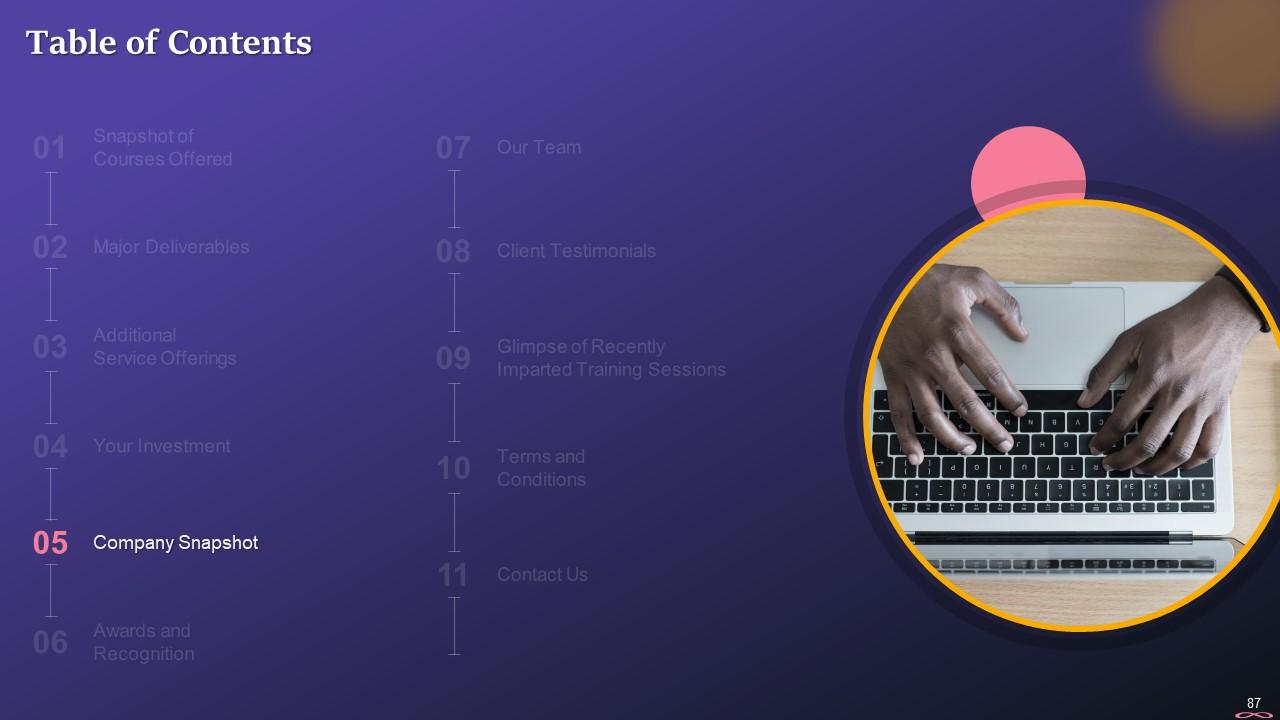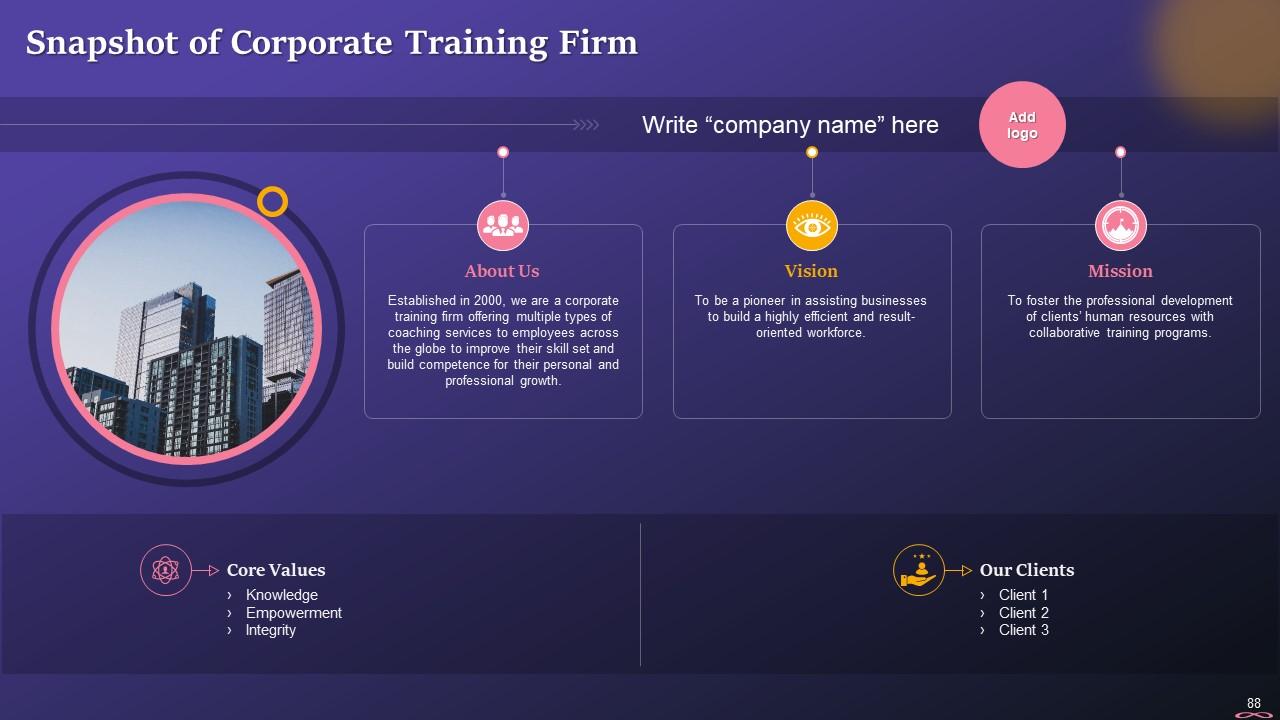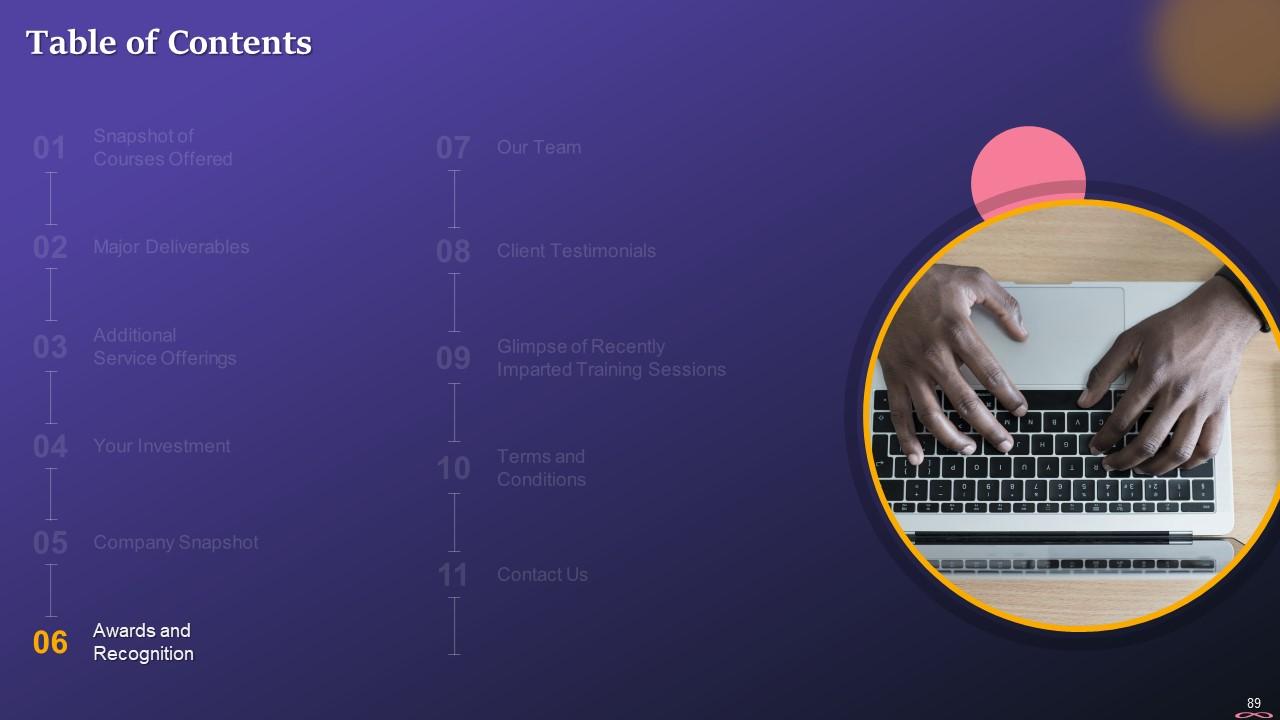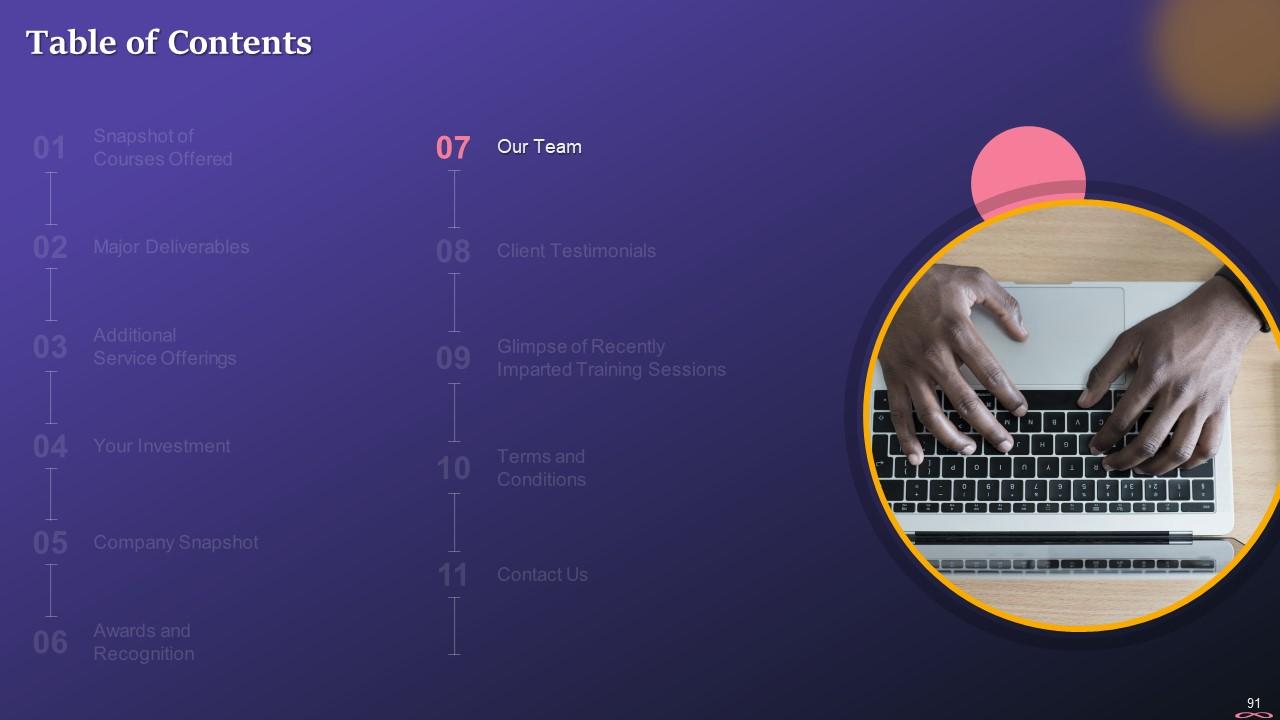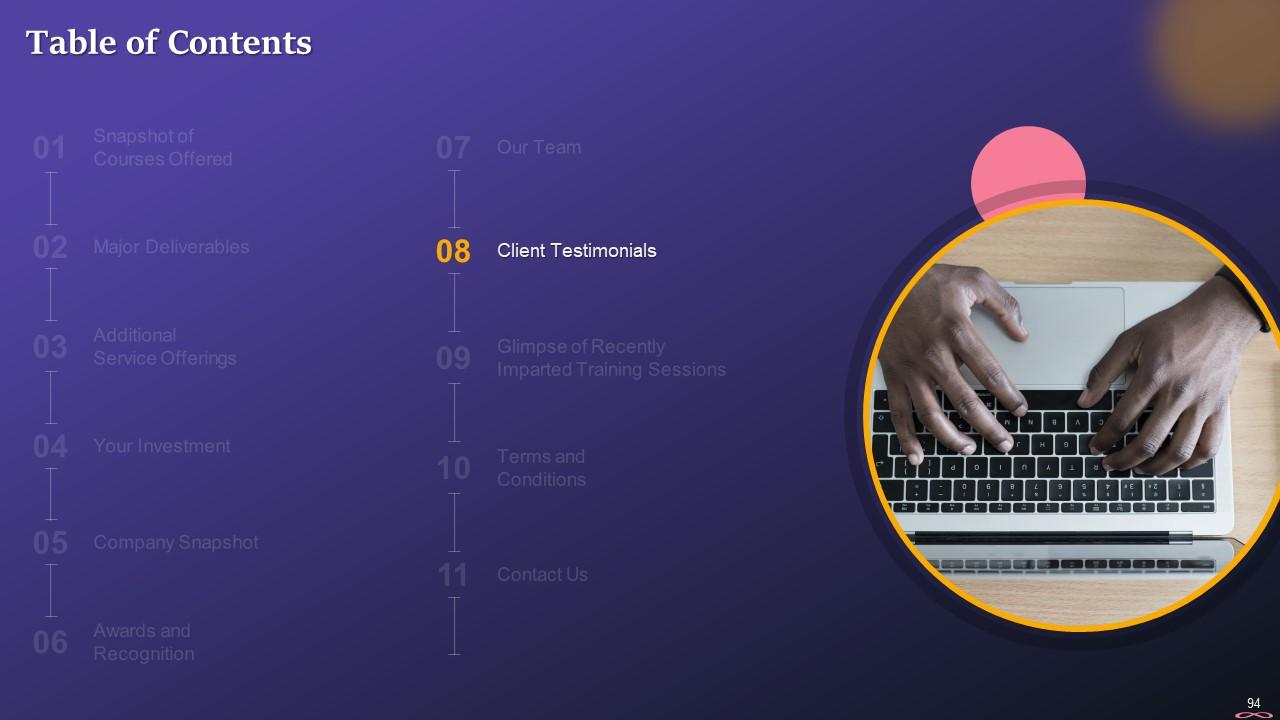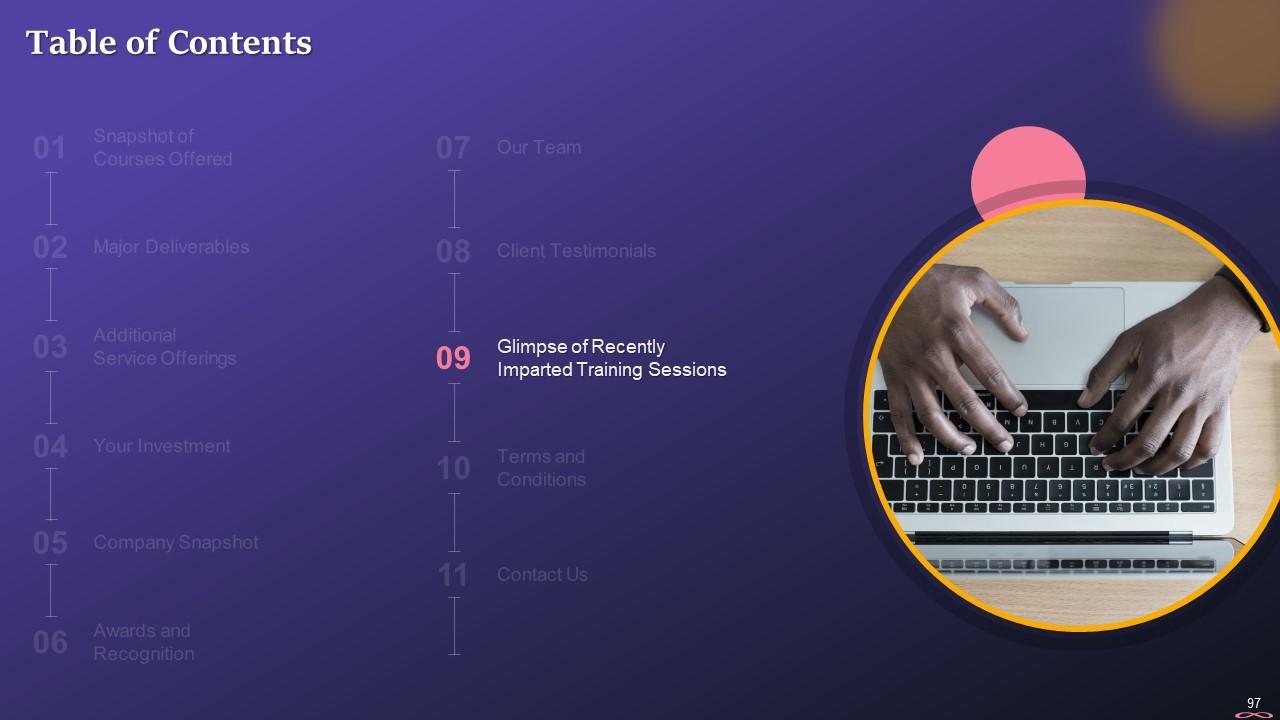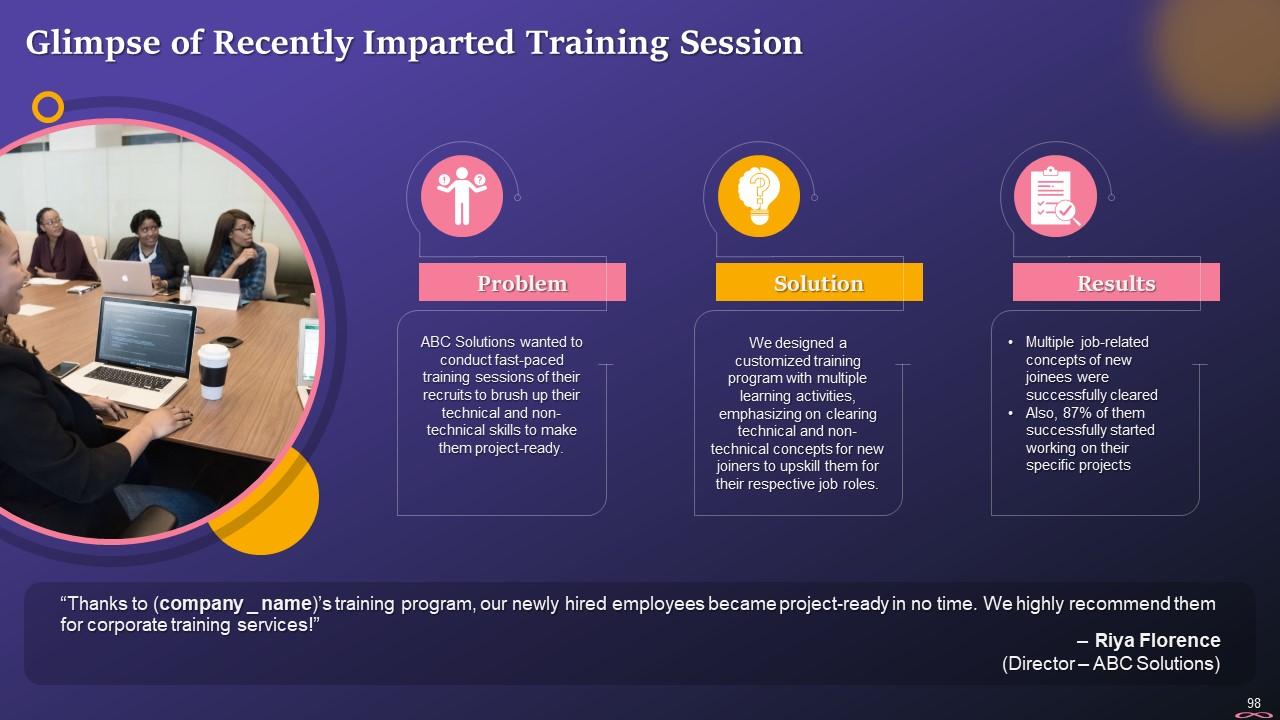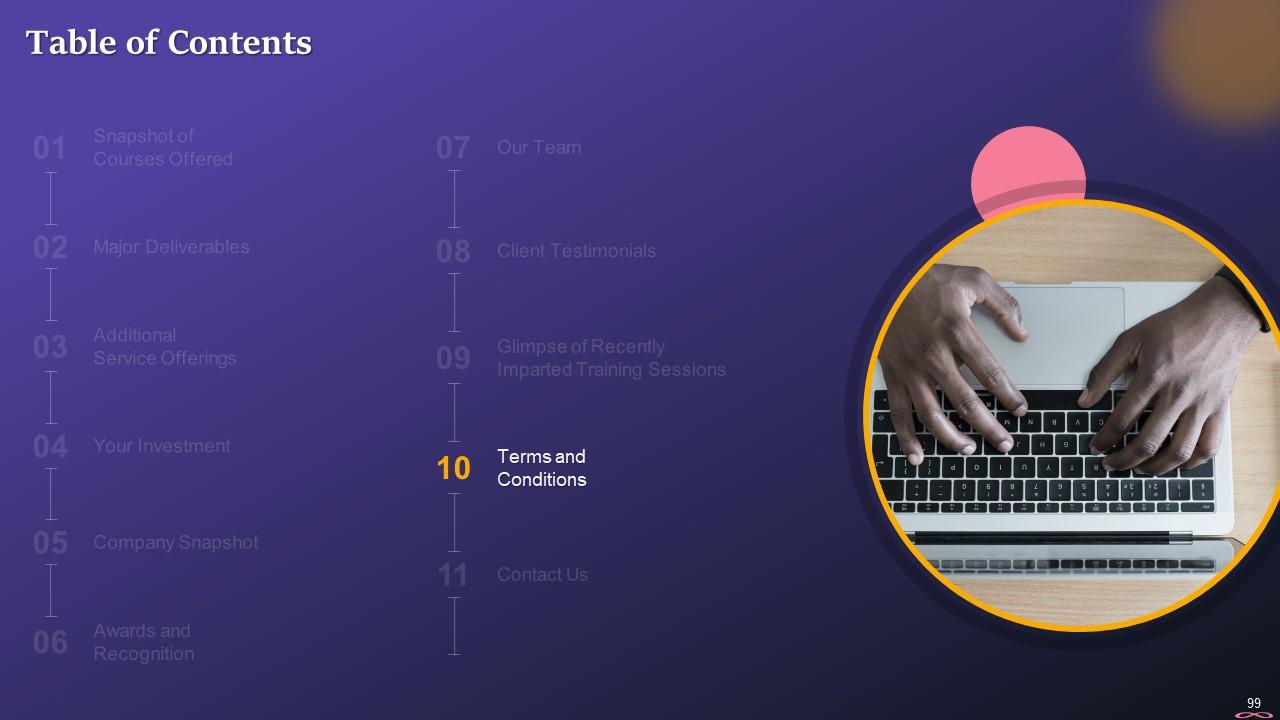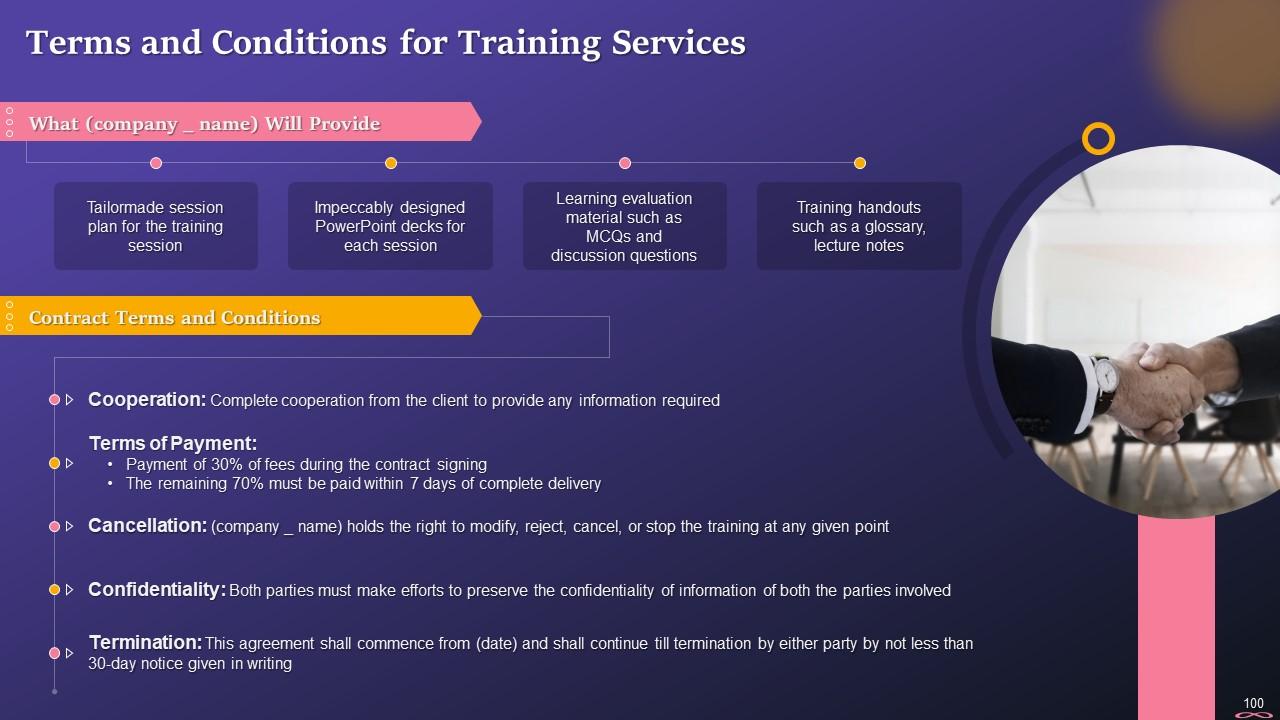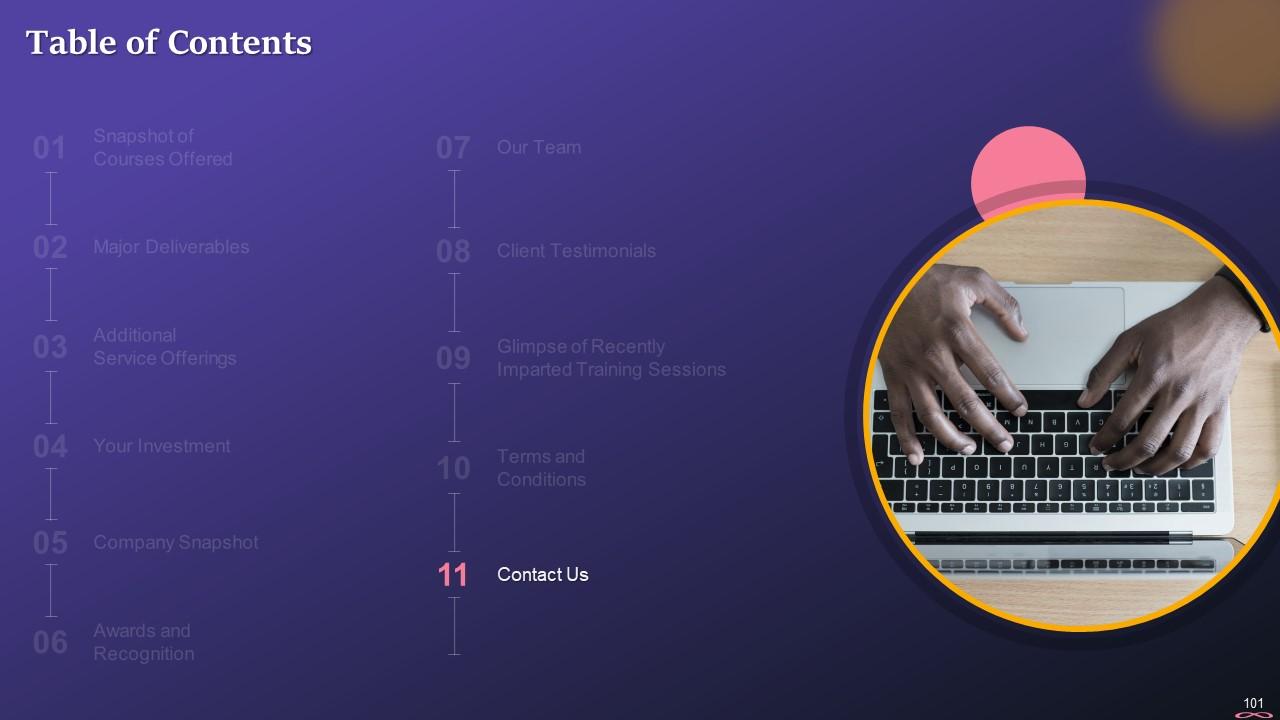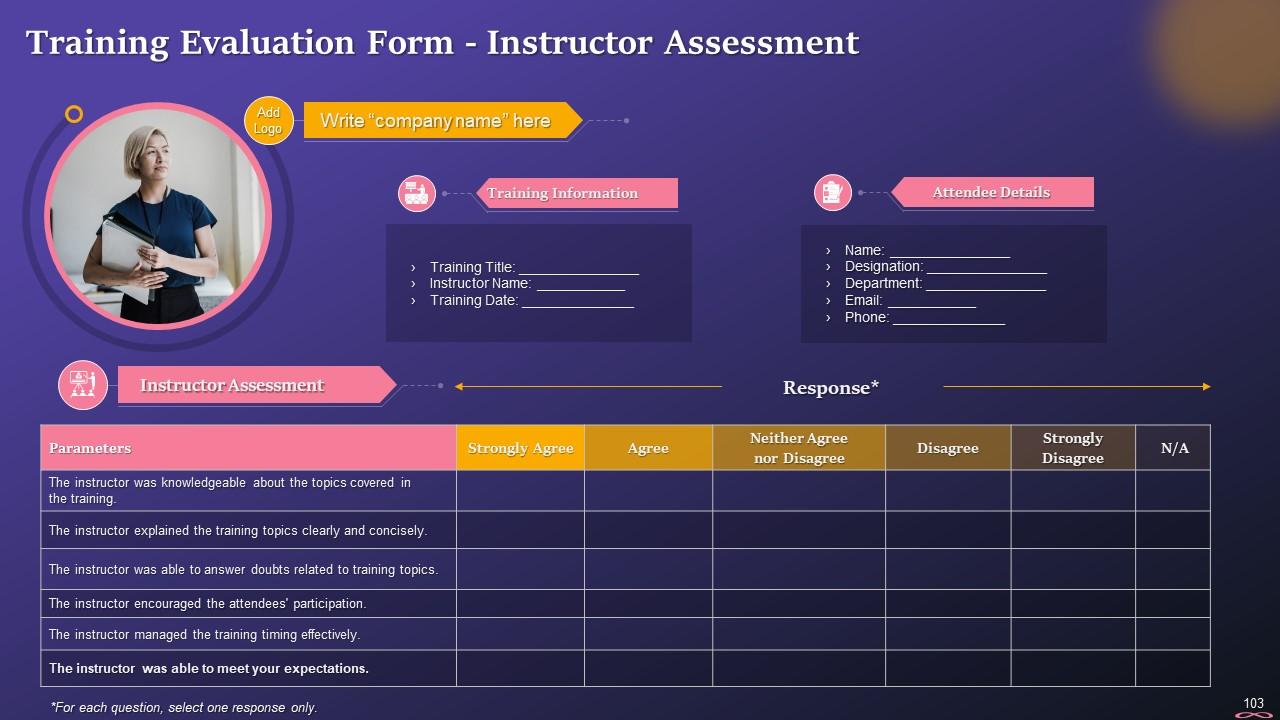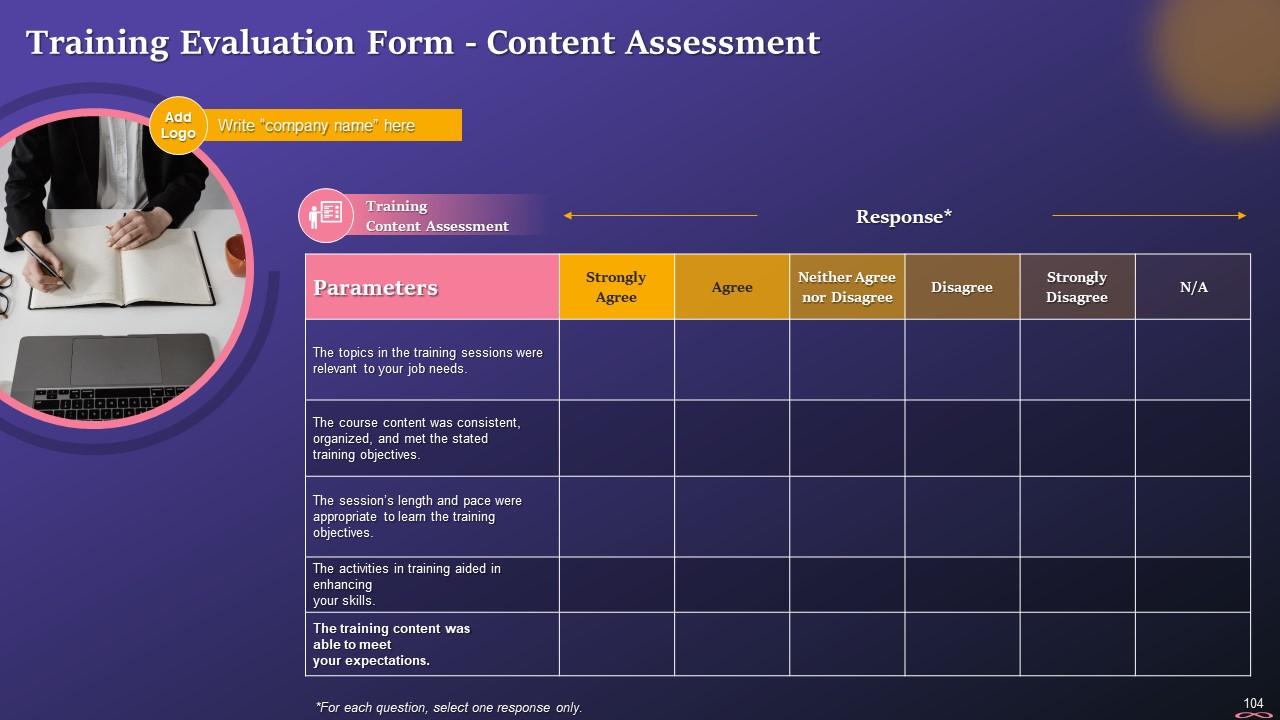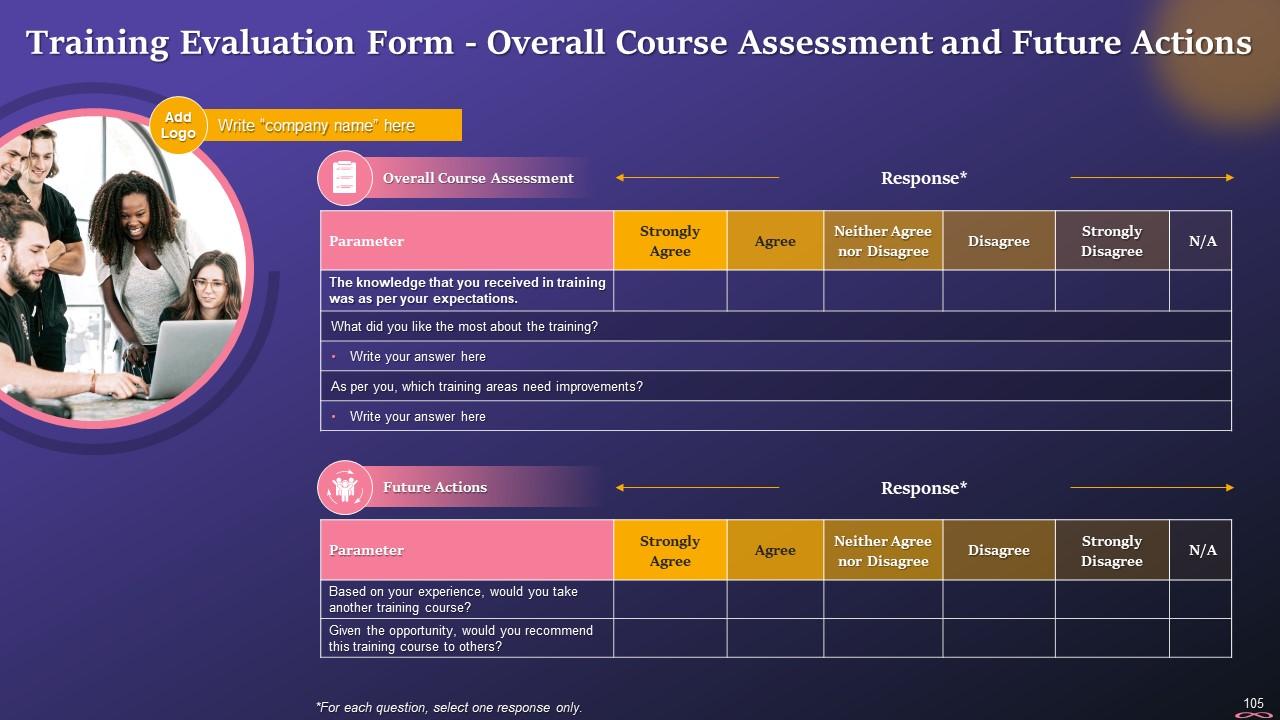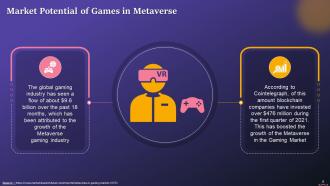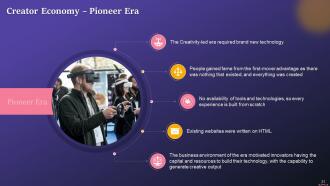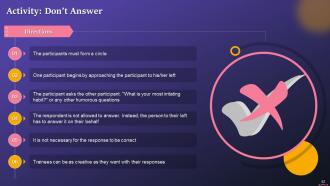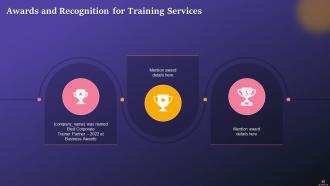Layers Of Metaverse Training Ppt
This training module, in detail, covers different metaverse layers experience, discovery, creator economy, spatial computing, decentralization, human interface, and infrastructure. It includes key takeaways and discussion questions too. The deck also has PPT slides on about us, vision, mission, goal, 30-60-90 days plan, timeline, roadmap, and training completion certificate. It also contains energizer activities to engage the coaching session audience. It also includes a client proposal and assessment form for training evaluation.
This training module, in detail, covers different metaverse layers experience, discovery, creator economy, spatial computin..
- Google Slides is a new FREE Presentation software from Google.
- All our content is 100% compatible with Google Slides.
- Just download our designs, and upload them to Google Slides and they will work automatically.
- Amaze your audience with SlideTeam and Google Slides.
-
Want Changes to This PPT Slide? Check out our Presentation Design Services
- WideScreen Aspect ratio is becoming a very popular format. When you download this product, the downloaded ZIP will contain this product in both standard and widescreen format.
-

- Some older products that we have may only be in standard format, but they can easily be converted to widescreen.
- To do this, please open the SlideTeam product in Powerpoint, and go to
- Design ( On the top bar) -> Page Setup -> and select "On-screen Show (16:9)” in the drop down for "Slides Sized for".
- The slide or theme will change to widescreen, and all graphics will adjust automatically. You can similarly convert our content to any other desired screen aspect ratio.
Compatible With Google Slides

Get This In WideScreen
You must be logged in to download this presentation.
PowerPoint presentation slides
Presenting Training Deck onLayers of Metaverse. This deck comprises of 105 slides. Each slide is well crafted and designed by our PowerPoint experts. This PPT presentation is thoroughly researched by the experts and every slide consists of an appropriate content. All slides are customizable. You can add or delete the content as per your need. Not just this, you can also make the required changes in the charts and graphs. Download this professionally designed business presentation, add your content and present it with confidence.
People who downloaded this PowerPoint presentation also viewed the following :
Content of this Powerpoint Presentation
Slide 4
This slide depicts the 7 layers of metaverse. These are experience, discovery, creator economy, special computing, decentralization, human interface, and infrastructure.
Slide 5
This slide mentions and illustrates the concept of experience in metaverse. Experience is the first layer of metaverse. In this layer, users interact in a digitally-driven environment through content such as gaming, shopping, etc.
Slide 6
This slide mentions shopping as one of the components of the experience layer of metaverse. Obsess is a platform reinventing the e-commerce interface for discovery-driven product categories. It works to turn online shopping into an experience, replacing the monotonous grid of the e-commerce interface. It is an AR & VR software platform for experiential shopping.
Slide 7
This slide mentions how games are faring in metaverse. It also illustrates that how VR-based games are changing people's experience of reality. Roblox is one such platform explaining this concept of gamification. It allows players involved to buy, sell, and create virtual items to decorate their virtual character that serves as their avatar on that particular platform.
Slide 8
This slide mentions the market potential and growth of metaverse in the gaming market.
Slide 9
This slide mentions how E-sports platforms are providing close to real-life experiences to users. It mentions that the Immersive Live Events can now move into metaverse, with sporting events growing in popularity.
Slide 10
This slide mentions how real estate is managed and digitized using platforms like Matterport. Matterport is the platform for 3D space capture. The platform transforms real-life spaces into immersive digital twin models.
Slide 11
This slide mentions how live events have moved from physical places to virtual world. metaverse will add different and reality based immersive effects to the experience of viewers using the AR, VR and XR technology. It also mentions about Wave XR, that has provided its artists with the ability to perform as virtual avatars in 3D spaces and allow the fans sitting at home to strap on their headsets and be in a concert.
Slide 12
This slide mentions how the fitness industry has transformed from physical fitness trainings to home gyms and workouts. metaverse will offer fitness freaks experiences like remote personal trainings, home gyms with assistance, and immersive fitness trainings with VR using platforms like Supernatural, Fit XR, etc.
Slide 14
This slide mentions how discovery is a crucial part of metaverse. Discovery is all about the push and pull strategies that expose or subject people to varied experiences. It refers to the advertising or recommendation of upcoming new trends to the people. It is crucial for users to discover what other people are doing right now to have a shared experienced with them in metaverse.
Slide 15
This slide illustrates the two types of Discovery in metaverse. The inbound discovery includes live-streamed presence, community-driven content, app stores, search engines, earned media, etc. outbound discovery includes display advertising, notifications, and spam.
Slide 16
This slide mentions the significance of real time presence in metaverse second layer that is discovery. It focuses on real time presence as focus on the variety of things happening in the virtual world is considered the best discoveries for creators. This will be of much relevance in the metaverse, as here the value comes from shared experiences.
Slide 17
This slide mentions how the Clubhouse Platform is disrupting the real-time value concept and benefiting from it
Slide 18
This slide explains the third layer of metaverse that is creator economy. The Creator Economy layer uses the entirety of the tools that creators often employ to create experiences that people will enjoy. It mentions the technology that creators use to create metaverse experiences, such as apps, design tools, and workflow platform.
Slide 20
This slide depicts the evolution of creator era. It explains that how it started from the pioneer era and with the investment of time and effort, has reached the creator era.
Slide 21
This slide elaborates on the 'Pioneer Era' as part of the evolution of creator economy. It also mentions the struggle of creators in bringing facilities to market. It says that in this era, there was no availability of tools and technologies, so everything was built from scratch. People gained fame from the first-mover advantage as there was nothing that existed, and everything was created by them.
Slide 22
This slide mentions the names of companies that succeeded in the pioneer era along with the innovations they brought to the economy. Some of these companies are Pixar, Electronic Arts, etc.
Slide 23
This slide explains about the engineering era and how creators have managed to reach this step of content discovery. As a result of creativity in the market, the number of people working in teams suddenly shot up. Tools were developed to reduce the workload of engineers, providing them with middleware to help them reduce time spent on work.
Slide 24
This slide mentions companies that succeeded in the engineering era along with the innovations they brought to the economy. Some of the companies are DirectX, WebGL, Ruby on Rails, Node.js, Stripe, MongoDB, MySQL, etc.
Slide 25
This slide explains the creator era and studies its evolution. At this level, the creators and makers did not require any programming obstructions to slow them down. Tools, content, and technologies were made available to the creators to transform the processes. Processes were transformed from code-centered procedures to artistically driven processes.
Slide 26
This slide mentions companies that succeeded in the creator era along with the innovations they brought to the economy. Some of these are Adobe, Shopify, YouTube, Wix, Roblox, Twitch, Unity, etc.
Slide 27
This slide mentions the impact of creator era. It states that this stage of Content Discovery eased the development of metaverse by providing the creators with satisfaction, radical democratization, disruption, freeing their resources, etc.
Slide 29
This slide explains the concept of spatial computing. It refers to the digitization of activities of objects, people, machines, and the environments in which they are performed to enable and optimize actions and interactions. It emphasizes that the space in the machine and the machine in the space should be allowed to penetrate each other. This means that sometimes the space is brought to the machine. At other times this means introducing computational power into physical objects.
Slide 30
This slide explains what spatial computing includes and how it will be used in metaverse. It will help in data integration where multiple devices are involved, promote the concept of geospatial computing, and introduce 3D engines, programs, and technologies like AR, VR, mapping etc.
Slide 31
This slide mentions how unity platform is relevant to Spatial Computing. It creates 3D immersive experiences and assists in real time 3D projects. Unity Pro provides a complete solution for the professionals to create and operate 3D experiences in real-time.
Slide 33
This slide mentions the meaning of decentralization layer and the features associated with it. metaverse will become completely open, and distributed, that is not controlled by any single entity and belongs to no one and everyone at the same time. This layer includes blockchain technology, smart contracts, open-source platforms, and self-sovereign digital identities.
Slide 34
This slide illustrates the significance of decentralization. It says that the third generation of Web (Web 3.0) and decentralized finance (known as DeFi) helped liberate financial assets from centralized control. It has led the companies like Ion and Evernym focus on self-sovereign identity in games.
Slide 36
This slide mentions the meaning and relevance of Human Interface as the sixth layer of the metaverse. This layer defines the technology that allows the physical body to reach the digital world. The term refers to wearables such as VR headsets, smart glasses. It also includes technologies involving neural networks and haptics.
Slide 37
This slide mentions technologies that form the part of human interface. The main technologies are Mobile Computer/Smartphones, Headset Technology, and Mind-bending Interface Technology.
Slide 38
This slide mentions the concept of mobile computers/smartphones. It explains how smartphones have evolved and now are referred to as mobile due to their high portability. Multiple applications are also pre-installed in these. With the latest embedded technologies like Artificial Intelligence (AI), edge computing etc., they are able to take in more applications and gain more experiences from the metaverse.
Slide 39
This slide mentions the concept of headset technology. It explains how things are evolving and have now moved towards smart spectacles which make metaverse interactions easy and interactive.
Slide 40
This slide mentions the concept of Mind-bending Interface Technology. It says that along with the smart glass technology, there also exists other innovative ways to connect people to technology and metaverse. It includes 3D-printed wearables, miniaturized biosensors, smart contact lenses, and brain-computer interfaces.
Slide 42
This slide explains the infrastructure layer of metaverse. It says that this layer comprises of technologies that allows devices to connect to the network and provide content. These technologies include 5G network, 6G networks, Wi-Fi, cloud architecture, graphics processing units, etc.
Slide 43
This slide explains the 5G and 6G networks and how they are supporting the infrastructure layer of the metaverse. 5G networks increase the capacity and reduce latency. The 6G technology will improve the speed of networks by another dimension.
Slide 44
This slide depicts the market potential of 6G networks in the economy. It states that 6G networks are expected to provide more diverse capabilities than their predecessors like 5G, 4G, etc. These networks are more likely to encourage applications beyond recent mobile applications, such as Virtual and Augmented reality (VR/AR), Artificial Intelligence (AI), and the Internet of Things (IoT).
Slide 45
This slide mentions the key takeaways from the session layers of metaverse.
Slide 47
This slide mentions discussion questions for the session layers of metaverse.
Slide 59 to 74
These slides depict energizer activities to engage the audience of the training session.
Slide 75 to 102
These slides contain a training proposal covering what the company providing corporate training can accomplish for the client.
Slide 103 to 105
These slides include a training evaluation form for instructor, content and course assessment.
Layers Of Metaverse Training Ppt with all 110 slides:
Use our Layers Of Metaverse Training Ppt to effectively help you save your valuable time. They are readymade to fit into any presentation structure.
-
The best collection of PPT templates!! Totally worth the money.
-
The slides come with appealing color schemes and relevant content that helped me deliver a stunning presentation without any hassle!


